- No Search data
- Western turkey
- 1. [AF1] southern african circuit
- 2. [NL1] newfoundland & labrador
- 3. [CA3] the five stans
- 4. [MCSP] south pacific explorer
- 5. [MCUP] untouched pacific islands
- 6. [MCWA] a west african odyssey
- 7. [GY1] guyana, suriname & french guiana
- 8. [MCIO] indian ocean islands
- 9. [EG3] classic egypt
- 10. [AZ1] the caucasus
- Top 10 Most Popular Destinations
- Discounted Tours
- January Tours
- February Tours
- March Tours
- April Tours
- August Tours
- September Tours
- October Tours
- November Tours
- Activity Level 1 Tours
- Activity Level 2 Tours
- Activity Level 3 Tours
- Cultural Tours
- Active Tours
- How We Travel
- Tour Styles
- Tour Leaders
- Our Partners
- Senior Tours
- e-Newsletter Archive
- Newsletter Subscribe
- Photo Contest
- Tour Safety
- Terms and Conditions
- Cancellation Policy
- Single Travellers
- Travel Insurance
- Frequently Asked Questions
- Passport and Visas
- Travel Tips
- Privacy Policy
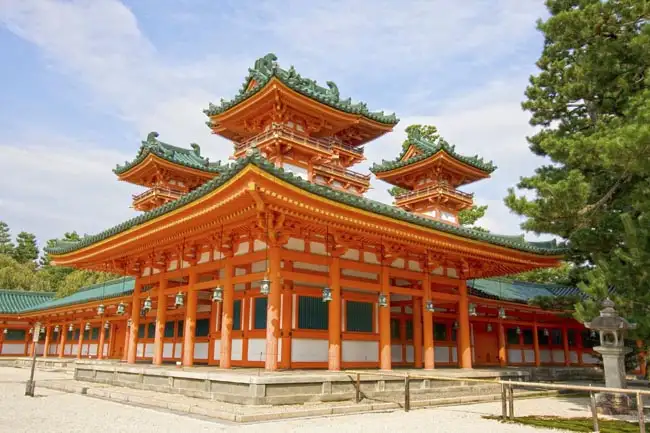

20 Day Japan Tour By Rail With Kyushu Island Extension TOURCODE: JP2
Duration: 20 Days
Activity Level: 2
When To Go: Apr, Oct
Countries Visited: 1
Arrive In / Depart From: Tokyo / Fukuoka
Max Group Size: 18
Tour Style: Cultural
Price From:
Discover the country's true culture with the help of experienced local guides.
- Small group sizes to help escape the beaten path.
- Authentic local experiences with lots of inclusions.
On our Japan by Rail tour you will see why Japan is the quintessential study in contrast and contradiction.
Japanese culture stretches back millennia, yet has adopted (and created) some of the latest modern fashions and trends.
Its cities are as modern and high tech as anywhere else, but tumbledown wooden shacks can still be spotted next to glass fronted designer condominiums.
In the middle of a modern skyscraper you might discover a sliding wooden door that leads to a traditional chamber with tatami mats, calligraphy, and a tea ceremony.
Such juxtapositions are cause for many surprises and very little boredom for any visitor to Japan.
Prices below are per person , twin-sharing costs in Canadian Dollars (CAD) . Pricing does not include airfare to/from the tour and any applicable taxes. For single supplement rates and taxes (if any), please refer to below Prices & Dates table. For general information on flights to/from the tour, click here .
Your Travel and Accomodations Arranged For You (With English Speaking Guides and Staff.)
Driver, dinner, and local guide tips included., authentic local experiences with lots of inclusions..
Select a date below to reserve your spot:
PLEASE NOTE: Due to logistical challenges and high costs in Japan, we offer customization services only for groups of minimum 10 participants plus a mandatory tour leader.
Optional Single Supplement: $1480 CAD (number of singles limited).
Day 1 Arrival in Tokyo Today we arrive in Tokyo and transfer to our hotel. Tokyo is Japan's capital and the country's largest city. Prior to 1868, Tokyo was known as Edo. A small castle town in the 16th century, Edo became Japan's political center in 1603 when Tokugawa Ieyasu established his feudal government there. A few decades later, Edo had grown into one of the world's most populous cities. PLEASE NOTE: Due to Japan Rail procedures related to your passes used for the tour, it is important that you arrive no later than "Day 1", the published start date of your tour. Overnight in Tokyo. Included Meal(s): Dinner
Day 2 Tokyo: City Touring Tokyo is a dazzling modern metropolis rich in history and tradition. While the pace and the glitz of the city can be overwhelming, we will do our best to also showcase the tranquil, traditional side of the world's most populous city. We have a private bus at our disposal today, though we may, during our time in the city, also make use of its legendarily efficient public transit system, an excellent way to observe the locals going about their daily lives in one of the world’s most vibrant cities. We’ll kick off our morning with a visit to one of Tokyo’s venerable department stores, the earliest of which were founded during the early 1900s. Their predecessors were kimono stores, which supplied various types of luxurious goods during the Edo and Meiji periods. Japanese department stores are famous for their unparalleled customer service; we’ll aim to be there just before it opens when we will see its employees lined up neatly, waiting to welcome customers. The moment the second hand of the clock hits the opening time, the doors punctually open and customers can make a grand entrance being flanked by bowing and greeting staff. We’ll take some time to stroll through the food halls, where you will see the amazing variety of beautifully-presented foods being sold at unbelievably high prices. Seeing where and how the Japanese shop, what they buy, for whom and for what occasion, offers instructive glimpses into a highly sophisticated social strata where conventions of human interaction and presentation are minutely-defined. Whether it be for a wedding, business meeting or returning from a trip, the culture of gift giving in Japan is one of the most prevalent in the world. However, unlike in some other cultures, in Japan the emphasis is more on the ritual of gift giving than the gift itself. This dates back to the Edo period when a lucky few would go on pilgrimages and bring back souvenirs for the villagers who weren’t able to go. You’ll have time here to pick up supplies for a picnic lunch at our next stop (a “bento box” is an excellent and convenient option). We then move on to the East Gardens of the Imperial Palace, part of the inner palace area. The Imperial Palace, or Kokyo, built on the site of the Edo-jo Castle, is an impregnable fortress that housed the Tokugawa Shogunate for 265 years until Emperor Meiji moved the court here in 1860's. Surrounded by moats, the original outer walls extended for over 16 km (10 miles) and were thick enough for a squad of samurai to walk six abreast on top. Even in its original state, it deceptively looked more like an administrative villa than a fortress. The buildings survived until they were all but obliterated by the fire bombings of WWII. You’ll have time to explore a bit, see the iconic bridge, and to enjoy your picnic lunch in a relatively peaceful setting. Our next stop is Meiji Shrine. Entry into the shrine grounds (a ten minute walk) is marked by a massive torii gate, after which the sights and sounds of the busy city are replaced by a tranquil forest. The approximately 100,000 trees that make up Meiji Jingu's forest were planted during the shrine's construction and were donated from regions across the entire country. At the middle of the forest, Meiji Jingu's buildings also have an air of tranquility distinct from the surrounding city. While in the vicinity of the shrine, time- and weather-permitting, we may be able to take a stroll down nearby Takeshita Street, possibly the busiest and definitely the most colourful pedestrianized shopping street in Tokyo. Our last stop is Ueno Park and the National Museum which, among other things, features the finest collection of Japanese art in the country. After our guided tour of the museum we will return to our hotel before our evening meal at a local restaurant. Overnight in Tokyo. Included Meal(s): Breakfast and Dinner
Not finding what you're looking for?
Our specialists can take away the stress and create a private custom tour tailored to your exact interests and budget.
Day 3 Tokyo: Sushi Making Class This morning we take a fascinating dive into Japanese seafood cuisine during a 3-hour combination walking tour of a local fishmarket and cooking class, where we can learn to prepare traditional style 'washoku' food items like sushi and a Japanese omelette. We meet up with our guide in front of Tsukiji Honganji Temple, located just outside the market. Then we step inside this temple to all things seafood for an in-depth shopping session including plenty of time for photography and exploration. As you wander the aisles of this colourful and chaotic market, you’ll observe everything from giant tuna to sea urchins to octopus arranged for sale. We'll then proceed with our guide to the gourmet cooking studio of one of Asia's largest culinary schools, boasting more than 150 studios throughout the region. Following the instruction of an experienced cooking teacher, we'll learn to prepare two 'washoku' recipes, a style of Japanese cuisine emphasizing traditional and homemade techniques. This typically includes a sushi roll along with a Japanese style omelette called Tamagoyaki, plus side dishes. This will be an excellent and fun introduction to Japanese cuisine, definitely a highlight of any trip to Japan. We finish our session by digging into our tasty creations for lunch. We'll leave with full stomachs and a new-found appreciation for the wondrous world of Japanese cuisine and its top-notch ingredients. Because of our late/filling lunch and full day tomorrow, and because you may be planning an evening activity before we leave Tokyo, we will leave dinner on your own account tonight. Your Tour Leader can help you plan. Tomorrow our large luggage is transported to Hakone for us -- please pack an OVERNIGHT BAG for ONE NIGHT. Your larger bags (one per person) will be shipped ahead to Takayama, and you will need to pack an overnight bag to carry with you for the the one overnight in Hakone. Your Tour Leader will advise in advance re recommended items to have with you for the next two days. Overnight in Tokyo. Included Meal(s): Breakfast and Lunch
Day 4 Tokyo - Lake Ashi - Hakone This morning we take a short metro (train) ride* to Odawara Station where we connect with our private coach towards Lake Ashi near Hakone. Shortly after we leave the station, we'll make a brief stop to see Odawara Castle (exterior visit only). Wedged between Mt Fuji and the Izu Peninsula, Hakone is a large region encircled by several forested mountains with a beauty accented by deep glens and ravines. In the feudal era, Hakone was a very important checkpoint that safeguarded the security of Edo (now Tokyo) as the seat of the Shogunate. This onsen (hotspring) area has been popular since the 1500s, when Hideyoshi Toyotomi came here to relax in an open-air bath after the hard fought Battle of Odawara. From the castle town of Odawara we board a bus that takes us into the National Park. We then board a lake cruiser on Lake Ashi for scenic views of the surrounding mountains. Weather permitting, we can enjoy views of Mt Fuji. One of the highlights today will be our visit to the Hakone Outdoor Museum, or Chokoku-no-mori, a beautiful park filled with sculptures by renowned Japanese and international artists such as Rodin, Bourdelle, Moore, Zadkine, and Picasso. Tonight we will enjoy a Keiseki-type meal at our ryokan-style hotel. Originally this type of dining was to accompany tea ceremony and is a feast for both the eyes and the taste buds. You can feel free to wear your "yukata" (bathrobe - provided by the hotel) to the dining room as many of the Japanese do when they stay in ryokan, a perfectly wonderful place to relax after leaving busy Tokyo behind. Our rooms are traditional style with tatami flooring and futon beds. * OUR LUGGAGE will be sent ahead to Takayama for us -- please pack an overight bag for today/this evening/tomorrow (the cost of this is included in your tour). Our luggage will be waiting for us tomorrow afternoon. Please note that this service may be available elsewhere; your Tour Leader can advise/assist and payment can be made directly. Overnight in Hakone. Included Meal(s): Breakfast and Dinner
Day 5 Hakone - Train to Takayama Today we travel by Shinkansen (Bullet Train) to Takayama. The region known as Hida, which surrounds Takayama, was cut off from the rest of Japan by almost impregnable encircling mountains. Hida lacked good farmland, which made taxpaying from an agricultural livelihood an impossible burden upon the people. Necessity caused them to diversify, so the craftsmen of Takayama honed their tools to a sharpness matched by their skills and became known as the finest woodworkers in the land. The mountains yielded the most coveted lumber in the empire, which Takayama's artisans fashioned into magnificent works worthy to adorn Japan's finest temples, shrines and palaces. During the Nara period, the central government, in lieu of taxes, required ten Takayama craftsmen to relocate to the capital, where their considerable talents were employed. During the Tokugawa era, the ancestral daimyo of Takayama was reassigned to the far north. Our train journey today takes us through the scenic Hida River Valley. We arrive in the late afternoon and will have time to wander through the lovely town of Takayama and the merchant quarter of San-machi with its historic wooden structures. Overnight in Takayama. Included Meal(s): Breakfast and Dinner
Day 6 Takayama: City Tour This morning we will visit the colourful early morning market before heading to the Hida Folk Village, consisting of over 30 unique houses which had been scattered in the Hida region.* The houses are attractively laid out around a small lake and display valuable articles showing the way of life and culture of the past. The style of architecture is called gassho-zukuri, or "praying hand" houses, because of the steep pitch of the roofs reminiscent of two clasped hands in prayer. This was to protect the occupants from the large amounts of snow that fall here over the winter months. Upon our return to the town centre we will visit the Yatai Kaikan, or Float Museum. Your afternoon is at leisure. Takayama is a small, interesting and manageable place for those who enjoy easy-going, on-foot exploration. Overnight in Takayama. Included Meal(s): Breakfast and Dinner
Day 7 Takayama - Train to Kyoto Our journey continues back through the Hida Valley to connect with the Shinkansen train in Nagoya. Kyoto vibrates with creative energy. For 1,000 years, skilled craftsmen, wise masters, and the nation's most promising fine artists have been lured here. The deep impress of culture and the refinement is indelible; it's in the soul of the city. A long line of Japanese emperors was enthroned here, and the city retains this regal bearing through myriad festivals and commemorative customs preserved from feudal times. In diminutive home workshops along cobblestone alleyways no wider than a footpath, lacquerware, cloisonne, damascene, kimono fabrics, pottery, porcelain, fans, dolls, embroideries, and bamboo ware are still expertly turned out by hand. Kyoto attracts a sophisticated crowd to its vibrant Noh and Kabuki theatres, while the last geisha finishing schools are found in the lantern-lit side streets of the Pontocho and Gion sections of the city. Thankfully, Kyoto's treasures were spared from bombing during WW II, when American scholars persuaded the military to leave this masterpiece of a city alone. Though Kyoto is now a thoroughly modern city, much of its spirit is intact, with over 200 Shinto shrines; 1,600 temples, 30 of which administer to the major sects of Buddhism throughout Japan; three Imperial palaces, nine major museums, and countless classic gardens. We arrive in this fascinating city mid-afternoon. Tonight we will venture to the Pontocho District, one of the traditional geisha quarters of Kyoto and next door to its rival, Gion. Wandering down the narrow lanes with the Kama River flowing alongside gives a sense to what this city was like long ago. Overnight in Kyoto. Included Meal(s): Breakfast and Dinner
Day 8 Kyoto: City Tour Today we have a highlight-packed full day of sightseeing in this spectacular city. Please note that the actual order of sites visited may vary from what is listed below, depending on how your Tour Leader and local guide for the day determine what is the best way to deliver the program. We start with a quick stop at Nishi Honganji (West Honganji), a designated UNESCO world heritage site, built in 1591 by Toyotomi Hideyoshi. Nishi Honganji is the head temple of the Honganji faction of the Jodo-Shin sect with over 10,000 sub-temples across the country and 200 temples overseas. The two largest structures are the Goeido Hall, dedicated to Shinran, the sect's founder, and the Amidado Hall dedicated to the Amida Buddha, the most important Buddha in Jodo-Shin Buddhism. We then visit Heian Shrine, built in 1895 to commemorate the 1,100th anniversary of the founding of the capital. It is a replica to three-fifths of the size of the first imperial palace in the ancient capital Heiankyo. We also visit the beautiful "go-round" style garden with a total area of 30,000 sq metres, which is well-known for the beauty of its weeping cherry trees, Japanese iris, and waterlilies. At some point we will make a stop to acquire some picnic lunch items followed by a break, possibly combined with a walk on Philosopher's Path (Tetsugaku no michi), a pleasant route through the northern part of Kyoto's Higashiyama district. The path follows a canal which is lined by hundreds of cherry trees. We continue to Ginkakuji, the Silver Pavillion, and then proceed to Kinkakuji, the Golden Pavilion, one of Japan's most famous architectural and historical icons. We also visit Ryoan-ji, the famous raked gravel Zen Garden, for which the Zen Buddhists are renowned. The essential dichotomy and harmony of the universe, which lies at the heart of this belief system, is symbolized in these tranquil gardens. After a busy day, we’ll have a break before reconvening for our evening meal at a local restaurant. Overnight in Kyoto. Included Meal(s): Breakfast and Dinner
Day 9 Kyoto & Nara Today we travel by local train to Nara. The crest of every mountain, the slope of every hill, the mute testimony of every rock, the waterfall, rivulet, and the valley of Nara are infused with the intangible spiritual energy that accompanied the birth of the Japanese civilization. Nara, meaning "level land, " occupies the great basin of what was Yamoto, or the Land of Great Peace. Here was the centre of the half-real, half mythical kingdom of Japan before it became a nation. Jimmu Tenno, the first emperor of Japan, was purportedly buried at Nara, the Imperial Japan, the oldest existing dynasty in the world, established its first permanent court within the city in 710. Arts, culture, and literature also bloomed in this fertile valley. The earliest histories of the nation were compiled in Nara by noble court ladies in colloquial Japanese, and from the ancient city Buddhism spread throughout the land. In its glory days, Nara covered an expansive area linked by palaces, temples, shrines, public buildings, and nobles' villas. The temples were massive and extremely powerful, almost like independent city-states. Numerous fires, the ravages of time, war, and pestilence have reduced many of the ancient structures, but plenty remain in their original states, especially in the eastern sections of the city. Part of this legacy is the Great Buddha of Todai-ji Otera, the largest bronze statue in the world, tipping the scales at over 500 tonnes. Nara Koen, at over 500 ha (1235 acres), is Japan's largest park and is home to the sacred deer of nearby Kasuga Taisha. This shrine, moss-covered and illuminated by over 3000 stone lanterns, was first erected in 768 and is second in importance only to the Grand shrines of Ise. As we walk through this park dotted with temples and deer wandering about, you will be struck at how the sublime cultural richness of the quiet past lingers on. Overnight in Kyoto. Included Meal(s): Breakfast and Dinner
Day 10 Kyoto: Nijo Castle & Leisure time This morning we visit Nijo Castle, built in 1603 as the Kyoto residence of Tokugawa Ieyasu, the first shogun of the Edo Period (1603-1867). His grandson Iemitsu completed the castle's palace buildings 23 years later and further expanded the castle by adding a five story castle keep. After the Tokugawa Shogunate fell in 1867, Nijo Castle was used as an imperial palace for a while before being donated to the city and opened up to the public as a historic site. Its palace buildings are arguably the best surviving examples of castle palace architecture of Japan's feudal era, and the castle was designated a UNESCO world heritage site in 1994. The balance of the day is yours to explore Kyoto on your own. A good place to start may be the small Japanese garden named Shoseien, located another few street blocks east of Higashi Honganji. Your Tour Leader can help you plan your afternoon. Overnight in Kyoto. Included Meal(s): Breakfast and Dinner
Day 11 Kyoto - Train to Hiroshima Today we take the Shinkansen train to Hiroshima. Passing through Osaka and Kobe, just minutes from Kyoto on this fast train, we will arrive at our destination in just a couple of hours. Modern Hiroshima rose like a phoenix from its own ashes. Less than five decades since its obliteration, it is once again the most vital city of San-Yo with a population of one million and growing. Hiroshima is referred to as the "River City." In its confines, the Ota-gawa River fans out into six delta tributaries that flow into the immense and very busy bay. In the years just following the A-bomb blast, scientists doubted if Hiroshima could ever live again. Today the streets hum with activity, trees and flowers grow, and birds sing. Nature may not forget, but it does forgive! On the morning of August 6, 1945, the people of war-torn Japan hurried to begin the day. Then suddenly buildings melted, people evaporated, and humankind lost the first battle of the atomic age. Seventy thousand buildings were flattened and 200,000 people perished, the lucky ones quickly; the unlucky lingered. Hiroshima, fringed by mountains forming a natural amphitheatre, seethed and fumed. Our visit takes us to the Peace Memorial Park (Heiwa Kinen Koen). Here the Cenotaph, shaped like an ancient tomb, holds the names of the dead. The prayer, the hope, the Japanese reads "Repose ye in peace, for the error shall not be repeated." The skeleton of the Atomic Bomb Dome (Genbaku Domu) turns green with age against a blue sky. Until all nuclear arms are banned and destroyed, the Eternal Flame will flicker. We will visit the Peace Memorial Museum and walk to the A-Bomb Dome, passing the many monuments, memorials, and statues. Overnight Hiroshima. Included Meal(s): Breakfast and Dinner
Day 12 Hiroshima & Miyajima Today we travel by train and ferry to Miyajima where we spend the day. Since ancient times, Miyajima has been regarded as one of the "Three Most Beautiful Spots" of Japan and, as part of the Seto Inland Sea National Park, it has received several distinctions, such as a place of extraordinary scenic beauty, exceptional history, and a natural monument. The virgin forests neighbouring Mt. Misen are representative of the lush greenery and abundance of nature which still covers the entire island even now. A surprisingly large number of southwestern Japan native botanical specimens can still be found on Miyajima. The island is like a miniature model of Japan, showing the harmonious ecology of all living things from the ocean depth to the top of mountains. Our walking tour of the island will include a visit to the famous Itsukushima Shrine, which together with its large wooden tori, stands in the ocean during high tide.* You will also have some free time to admire this World Heritage Site before returning to Hiroshima. * Please be advised that the tori may be undergoing regular maintenance at the time of our visit. This occurs every 30 years and can, depending on its needs, take anywhere from 6 months to two years to complete. Please be prepared for the gate to be either partially or completely covered by scoffolding during this time. Overnight in Hiroshima. Included Meal(s): Breakfast and Dinner
Day 13 Hiroshima (Honshu Island) - Train to Kagoshima (Kyushu Island) & Sakurajima Island Today we say sayonara to Honshu Island as we cross the short distance to Kyushu Island via Shinkansen train. Our journey takes us along the eastern coast of Kyushu to Kagoshima. Kagoshima City is the capital of Kagoshima prefecture. The city originally prospered as the castle town of Lord Shimadzu, and was the first city to introduce western civilisation to Japan. Today, it is the largest City in Southern Kyushu with about 540,000 people. Kagoshima City nestled on the west shore of beautiful Kinko Bay with majestic Mt. Sakurajima (the symbol of Kagoshima) is referred to as the Naples of the Orient. One of Kagoshima's greatest contributions to modern Japan is it's role over the centuries as a gateway for trade and exchange between Japan and the world. Japan has traditionally been a closed culture and only recently pursued international ties. Kagoshima is the catalyst city credited for "opening Japan to the World". In 1543, a Portuguese vessel landed on Tanegashima one of the southern islands, bringing the first firearms to Japan. In 1549 The Spanish missionary Francisco Xavier landed in Kagoshima and introduced Christianity to Japan. During the 17th century, the shogunate had an "isolation policy" which prohibited contact with other nations; however, Satsuma (now Kagoshima) continued to trade with China, and sent students to England to study Western culture. Upon arrival we have an excursion by boat and bus to Sakurajima, one of Japan's most active volcanoes and the symbol of Kagoshima. The volcano smokes constantly, and minor eruptions often take place multiple times per day. Located in the middle of Kagoshima Bay, Sakurajima is the area's most prominent geographic feature, having an elevation of 1117 meters and a circumference of about 50 kilometers. Before a powerful eruption in 1914, Sakurajima used to be an island in the bay, but the massive lava flow from that eruption created the volcano's current land connection to the Osumi Peninsula in the east. We'll visit the Sakurjima Visitors' Centre, which has models, pictures, videos and information boards about Sakurajima. Overnight in Kagoshima. Included Meal(s): Breakfast and Dinner
Day 14 Kagoshima & Ibusuki Today we have a full-day tour of the Ibusuki region near Kagoshima. Ibusuki is located on the southeast tip of the Satsuma Peninsula and is a famous resort area. Blessed with great weather, hibiscus flowers blossom all throughout the area, yet Ibusuki is best known for its steam and baths, heated by natural subterranean geysers. We visit Chiran, a small town in the middle of the Satsuma Peninsula. Within the town there is a preserved samurai district with houses and gardens that date back about 250 years. Chiran's isolated location at the southern end of Kyushu has allowed the district to keep much of its historical character intact. The preserved Samurai District consists of a 700 meter long street within downtown Chiran that runs parallel to the main thoroughfare. The street itself is very attractive, with the rock walls and hedges of residences and the forested hillsides in the distance. Unlike some other samurai districts, it is also free of telephone poles and parked cars that would detract from the historic atmosphere. We stop at the Chiran Peace Museum For Kamikaze Pilots. This is a thought-provoking, and to many, a controversial museum dedicated to the lives and deaths of 1,036 suicide pilots or kamikaze (more commonly known as tokkoh-tai-in Japanese), who sacrificed themselves in the name of the Japanese Emperor in the latter stages of World War II. You'll also have a chance to experience a unique activity for which this region is renown. Blue-robed visitors come and lay in warm sand pits and are gradually covered with volcanic sand up to their necks. The weight and heat of the sand assists in the body's blood circulation and, after about 10 minutes, the whole body begins to perspire. It is a relaxing sensation both young and old alike enjoy. Overnight in Kagoshima. Included Meal(s): Breakfast and Dinner
Day 15 Kagoshima - Train to Nagasaki Still in Kagoshima, we visit Iso Ko-en Gardens, a wonderful garden with Mount Sakurajima as borrowed scenery in the background. The volcanic soil is extremely rich and the farmland at the base of this mountain is testament to its value. Later we travel by train to Nagasaki, arriving in time for dinner. Blessed with a temperate climate, a superb setting, and a history unlike that of any other prefecture in Japan, Nagasaki easily ranks as one of Japan's most rewarding and exotic destinations. Much of the prefecture's considerable charm can be traced to the unique role which the region played in Japanese history. From 1639 to 1859, while the rest of the country was secluded from foreign contact by governmental decree, the port of Nagasaki alone was allowed to conduct trade with Europe and the Asian mainland. This free-port status and the prolonged exposure to foreign cultures which it brought resulted in the creation of a sophisticated and liberal climate which no other part of Japan could hope to emulate. Both compact and cosmopolitan, it has a rich range of historic sights and wonderful restaurants. Overnight in Nagasaki. Included Meal(s): Breakfast and Dinner
Day 16 Nagasaki & Mt Unzen Today we visit the Nagasaki Peace Park, commemorating the atomic bombing of Nagasaki of August 9, 1945, which destroyed wide parts of the city and killed tens of thousands of inhabitants. The park is home to the massive Peace Statue as well as various other memorials. A monument around a black pillar marks the atomic explosion's epicenter in the nearby Hypocenter Park and stores the name list of bomb victims. We also stop at Shimabara Castle, a white-walled castle built during the early Edo Period as the seat of the local feudal lord. The castle was the extravagant centerpiece of the feudal domain and was far larger than those found in domains of similar status. We then head to Mount Unzen, which has had several major eruptions in recent history, the deadliest of which occurred during the late Edo Period and resulted in the deaths of 15,000 people. The volcano erupted most recently from 1990 to 1995, sending pyroclastic flows (superheated clouds of volcanic gas and ash) down toward the town below. While most people were safely evacuated, 43 journalists, scientists and their taxi drivers were killed. Much of the volcano's destruction was due to large mudflows of volcanic ash, known as 'lahars,' which flowed down the mountainside, burying several homes and buildings that lay in their path. We will visit a small collection of these Buried Houses at the Mizunashi Honjin Fukae Michi no Eki roadside park. A few of the houses are protected under a dome. Overnight in Nagasaki. Included Meal(s): Breakfast and Dinner
Day 17 Nagasaki: City Tour Nagasaki's attractions are as varied as they are plentiful: feudal castles, samurai houses, Meiji-era Western villas, smoking volcanoes, mineral-rich hot-spring baths, architecturally pleasing resorts, rugged islands, beautiful beaches, and a hospitable and friendly people are just a few of the rewards awaiting the traveller to this diverse and dynamic prefecture. This morning we will start with a trip to Glover Garden, named after Thomas Glover. This is a collection of European style houses which have been collected in to this park which cascades down the side of a hill. In addition to the houses which you can go through is the Museum of Traditional Performing Arts which contains beautifully decorated floats from the Kunchi Festivals. We will then ride the streetcar to the Nagasaki Dejima Museum. Dejima was an artificial island built in 1636 in Nagasaki Bay for foreign traders, as foreigners were banned from the country. This was a vital portal through which culture, money, goods, and ideas flowed in and out of Japan. This afternoon is free for you to enjoy this wonderful city. Nagasaki has an interesting Chinese Confucian Temple that you may like to visit on your own, as well as a vibrant Chinatown. And, of course, the compelling Nagasaki Atomic Bomb Museum commemorates the explosion of the atomic bomb that devastated Nagasaki at 11:02am on 9 August 1945. Overnight in Nagasaki. Included Meal(s): Breakfast and Dinner
Day 18 Nagasaki - Saga Prefecture - Fukuoka Today we travel by bus through Saga Prefecture, Japan's most important area for the production of traditional porcelain and pottery. Many of the kilns were established by potters who were taken to Japan from Korea after the war between Japan and Korea in the 1590s. Arita ware originated in the beginning of the 17th century when layers of kaolin, the main component of porcelain, was discovered and the first porcelain kiln was built in present day Arita town. Arita porcelains of the early days were typically made in the Chinese style of the period, with deep blue patterns on a white background, called "sometsuke." In the 1640s, a new style called "aka-e," characterised by bright colours and bold patterns principally in red, was invented. These two styles, sometsuke and aka-e, dominated Arita-Imari ware. These beautiful pieces of white earthenware from the Orient won tremendous acclaim in Europe and influenced the European porcelain industry. We’ll visit the Arita Ceramic Museum, which features a fascinating Shibata collection donated by a Japanese couple's personal collection in hopes that they will be preserved. Rooms are separated by age from modern to the 16th century; most signs and descriptions are also in English. Maps in exhibition room #4 show the flow of porcelain through Asia over the years. We continue toward Karatsu with a stop in Okawachiyama, known as the "Village of Secret Kilns." From 1675 to 1871, it was the official kiln of the Nabeshima family of the Saga Domain, and was a representative production centre of porcelain, producing high quality pottery for the Imperial Court, the shogunate and various lords. The Nabeshima clan of the Saga Domain moved their kiln from Arita to the steep terrain of Okawachiyama to preserve their secretive techniques, setting up a guard post at the entrance to strictly control the kiln. Even those who are not particularly interested in ceramics will find it a truly fascinating and quaint village set deep in the hills. Arriving at Karastu City, we’ll see the and the famous Karatsu Street (Alpino) and (time-permitting) see a local festival display of floats. Departing Karatsu, we’ll pass by Karatsu Castle (rebuilt in 1960s) before stopping at Nijino Matsubara Pine Tree Forest for a coffee break and walk to the beach. Our final destination is Fukuoka, Kyushu's largest and one of Japan's ten most populated cities. Because of its closeness to the Asian mainland (closer to Seoul than to Tokyo), Fukuoka has been an important harbour city for many centuries and was chosen by the Mongol invasion forces as their landing point in the 13th century. Today's Fukuoka is the product of the fusion of two cities in the year 1889, when the port city of Hakata and the former castle town of Fukuoka were merged into one city. Included Meal(s): Breakfast and Dinner
Day 19 Fukuoka: City Tour Fukuoka is a city blessed with a beautiful climate and a seaside location. Since ancient times the city has flourished as a crossroads of international exchange. It is said that the earliest Japanese state mentioned in historical records, Nakoku, was located in the area where the city is now located. Foreign culture first entered Japan through Fukuoka. The Gold Seal discovered across the bay from Fukuoka City on Shikanoshima Island symbolises the long history of the area. This seal, inscribed "King of the State of Na of Wa, or Japan, and Vassal of the Han Dynasty", dates back to AD 57. Today we embark on a half-day tour of Fukuoka, including Kanzeon-ji and Kaikan-in temples, where we will also visit the Dazaifu Tenmangu Shrine and Komyoji Temple, with its magnificent Zen gardens. This is the perfect place to pause and enjoy some silence, reflecting on the beauty of the surroundings and your time in Japan. Next we make our way to the Kyushu National Museum, only the fourth national museum in the country. The museum recognizes its host city's history by basing its exhibits on the concept of "Understanding Japanese culture from an Asian point of view". The museum has an impressive collection of artifacts that are presented in both a creative and informative fashion. We return to the city for some leisure time and independent exploration. Free time options include the Kabuki theatre, the Museum of Asian Art, Hakata Shonin (Folk Museum), and/or the nearby useum, Gion Shrine and its Float Exhibition. There are also many spa treatments available in and around the hotel – perfect preparation for your long journey home. If you have a break for lunch in mind, Hakata ramen is by far the most famous dish to come from Fukuoka. It's a soup noodle dish made with thin egg noodles and a rich, pork bone broth called tonkotsu. There are many different types of tonkotsu ramen, but Hakata ramen is possibly the most well-known. Overnight in Fukuoka. Included Meal(s): Breakfast and Dinner
Day 20 Departure Departure from Fukuoka.* * LAND ONLY PASSENGERS: If you are booking your own flights and are tempted to purchase a ticket in/out of Tokyo only, it is, in theory, possible to travel by train from Fukuoka back to Tokyo, but this is a rather long journey (8 hours) and can involve multiple train changes which, in Japan, can be daunting. Accordingly, if you need to return to Tokyo to fly from there, we recommend that you build in a flight from Fukuoka to Tokyo in order to make this connection. ITTE IRASSHAI!! Included Meal(s): Breakfast
Inclusions Hotel breakfast and most dinners (mostly at local restaurants) are included daily. All transport, accommodation, sightseeing and entrance fees for sites noted as 'visited' in the detailed itinerary. We include luggage forwarding services on one train journey (as per the tour itinerary); this service may be available elsewhere with your Tour Leader's assistance (payment can be made locally). Gratuities for restaurant staff, porters (when available), drivers, local guides. Services of a full-time Adventures Abroad Tour Leader; local guides at various locations.
Exclusions International airfare to/from the tour. Tour Leader gratuities, lunches, drinks, personal items (phone, laundry, etc), international (if applicable) air taxes, and any excursions referenced as 'optional'. Optional trip cancellation insurance (please refer to "Resources" tab for more info). PLEASE NOTE that at variance with our common policy on airport transfers for most tour arrival points, we do NOT include or pre-book arrival airport transfers in Tokyo, regardless of whether or not you book your air with us. We provide detailed information on your various options as part of your pre-trip information package. We will, however, include departure transfers for "Land & Air" customers at the end of the tour (your Tour Leader will assist).
Seasonality and Weather Our April tours can expect cool-warm temperatures with moderate humidity. April dates can expect daytime high temperatures of about 18-23 C (66-72 F), with chilly mornings and evenings. May will be a bit warmer, with highs to 26-28C (77-82 F) depending on daily conditions and location. Our April date is also set to coincide with cherry blossom season (exact timing and location is reliant on weather conditions and can vary year to year). By May, the cherry blossoms give way to riotous azaleas that colourfully explode in hillsides, parks, gardens, and pretty much everywhere. Again, the timing of this can vary year to year, but the plant has a long blooming season so we should be able to enjoy in several places during this time. Our fall dates coincide with the beginning of the cooler and drier time of year and should coincide with autumn leaf colour in some locations, as well as chrysanthemum season, which can be quite festive in some locales. Rain showers can occur at any time, though their likelihood decreases the later we get into the fall which is a cooler/drier time of year.
Transport and Travel Conditions Our primary means of transportation throughout Japan is via the very efficient rail system, including the famous Shinkansen, or Bullet Train. Distances are not great and most journeys are only a few hours duration. A combination of buses and taxis will be used elsewhere as part of our local sightseeing program. The tour is physical in that it is busy and that YOU MUST BE ABLE TO MANAGE YOUR OWN BAGS ONTO/OFF TRAINS AND IN TRAIN STATIONS. Japanese stations can be large and crowded and may not have escalators or elevators.You must pack VERY lightly, preferably in wheeled soft-sided baggage plus a day-bag that you can fit into the overhead luggage compartments in the trains. You must also be steady on your feet and be able to endure some long days; we have numerous walking tours and visit several sites that are LARGE with steps and uneven surfaces. There is also a very strong culinary element to this trip. Breakfasts feature Asian as well as Western items, but our dinners out at local restaurants will feature a wide range of local specialties. Eating is very much a cultural experience in this part of the world, and this aspect of our program is an integral part of the overall experience. Though individual tastes and requirements will be taken into account by your leader who will be organizing our evening meals on-the-go, if you are strictly a meat-and-potatoes person, or a strict vegetarian/vegan/gluten-free etc, you may find your needs/preferences significantly challenged on this tour.
Am I suitable for this tour? Please refer to our self-assessment form .
Activity Level: 2 These are particularly busy tours that feature a lot of moving around, sometimes by train and short journeys on local transport. Walking tours of towns and cities are leisurely but you should be prepared to be on your feet for several hours. Some of our cultural trips that occur at high altitude and/or require greater independence with baggage handling (at hotels, airports, train stations) also fall into this category.
To learn more about the Activity levels, please visit our tour styles page.
Accommodation All hotels are centrally-located, air-conditioned, 3-4 star standard with private bath facilities. We spend one night at a traditional Ryokan (in Hakone), which features tatami rooms and futon bedding. Laundry service is available at most hotels (except Hakone) for a rather high price. All hotel rooms are well equipped and usually include coffee/tea making facilities. Most hotels have hairdryers and irons. Some hotels have indoor/outdoor swimming pools. Single rooms are limited and possibly smaller than twins. Porters are generally available (see 'Inclusions').
Staff and Support Tour Leader throughout, local guides at various locations.
Group Size Maximum 18 plus Tour Leader
Tour Extensions This tour is part of a series that can be upgraded to make for a longer trip. For more options, please refer to tour code/s:
Regions visited: Far East Countries visited: Japan
*The red tour trail on the map does not represent the actual travel path.
The following is a list of sample hotels at some locations included on this tour. The hotels shown here are meant to provide a general sense of the standard of hotel we usually aim for; they are not necessarily confirmed for your chosen departure.

Reservation Summary
Have Questions? Call us: 1-800-843-2678

Japan Itinerary for First-Time Visitors: 4 to 21 Days or More (Ultimate Travel Guide)
by Aileen Adalid Itineraries , Japan 70 comments
- Japan Facts & Trivia: 10 Things Foreigners Should Know
- 5 Interesting Facts About Switzerland: An Inside Look of the Swiss Lifestyle
- What to Eat & Drink at Raohe Night Market in Taipei: Taiwan Street Food
- How to Book a Flight Reservation for Visa Applications (a.k.a. Legitimate Dummy Ticket)
- Chicken Adobo Recipe: Authentic Version (Filipino Food)
- All About YOU: Letters from My Readers / Volume 1
- 10 Most Beautiful St Petersburg Metro Stations to Visit (Tips & Travel Guide – Russia)
- 53 Non-EU Countries You Can Visit with a Schengen Visa (2024 Update for Visa-FREE Entry Worldwide)
- Norway Road Trip Itinerary: Best Travel Guide for 1st-Time Visitors (West & East Area)
- A Home Away from Home: Aallonkoti in Helsinki, Finland
I’ve managed to travel to all 7 continents now, and from all of my adventures, one of the countries that I will never get tired of revisiting multiple times would be Japan! (Japan Itinerary)
As a timeless destination, I am forever enamored by Japan’s ancient traditions that are perfectly fused with its vibrant modernity. Not to mention the lush nature and exquisite cuisine that it has and I’m sure that I’ll still barely ‘ scratch the surface ‘ even if I spend my life exploring it in its entirety.
With that said, it does seem daunting to whip up a Japan itinerary — but then again, not really! The country may be vast but it’s totally possible to make the most of it with whatever time you have.
TRIVIA : Japan has 4 main islands: Hokkaido, Honshu (the largest where Tokyo is found), Kyushu, and Shikoku. These areas are all divided into 47 prefectures that are grouped into 8 regions (chihō). . For instance, the capital of Tokyo is within the Tokyo prefecture and under the Kantō region. Whereas the popular cities of Kyoto, Osaka, and Nara each have their own separate prefecture (under the same name) and are all under the Kansai region.
Where to Stay in Japan?
Come and check out my lists below that feature the top-recommended choices for cheap to luxurious accommodation choices in the country: Best Hotels in Tokyo Best Hotels in Kyoto Best Hotels in Osaka Best Hotels in Hiroshima
As of this date, I think I have already visited Japan more than 15 times and I still can’t get enough of it! Hopefully, with what knowledge I have, I can help you plan a great Japan itinerary trip with ease and speed.
Rest assured, the Japan itineraries in the latter section of this post is totally customizable to fit any number of days that you might be spending.
Top photo by: Shutterstock
Table of Contents
Japan Travel Guide
» quick travel planning.
- Top tours & experiences
- Find flights to Japan
- Visa requirements
- Best places to stay
- Travel insurance (5% discount)
- Stay connected
– – –
» Best Time to Visit
Honestly…? Any time! After all, Japan is a ‘year-round’ destination. But depending on your preference, below are the country’s seasons…
- Beware though because this is high season, so do expect higher prices and bigger crowds. It’s the same as well during Golden Week (concentration on national holidays) which happens from late April to the first week of May.
- Summer: Be prepared for high humidity and smoldering heat (with June being the rainy season) . If you want to escape this, head on ever to the mountains or to the northern island of Hokkaido.
- ★ Autumn: This is yet another great time for visiting Japan; besides, I personally love it when the trees turn into warmer hues. September though is usually the time when typhoons visit the country, so it could be best to plan your trip somewhere from late October to November (it’s also the best time for seeing the full autumn colors).
- Winter: As the temperatures drop, prices and airfares also drop. Take note though that it can get very chilly; but, supposing you’re not that sensitive to the cold, this can be a fun time given all the amazing ski resorts and festive atmosphere.
- WINTER: Dec to Feb
- SPRING: March to May
- SUMMER: June to Aug
- AUTUMN: Sept to Nov
Other Japan blooms to watch out for?
See this list of the most popular spring flowers in Japan — when to see them and where to go!
» Getting in to Japan
International visitors typically arrive at Tokyo’s Narita Airport (NRT), followed by Kansai Airport (KIX) which is south of Osaka. To get to any of these points, I recommend browsing through Skyscanner to find the best flight deals from your point of origin. If you’re from the Philippines like me, Skyscanner also scans through the budget airlines such as Air Asia and Cebu Pacific in order to find which of the 2 has the cheapest rate on the dates you choose.
From Narita Airport to Tokyo, you can:
- Ride an airport limousine shuttle bus that goes to key points and areas in Tokyo (around 1,000 yen = $10~).
- Is it worth it to buy a JR Pass for your Japan itinerary? Read here .
- Ride a taxi , which would be the most expensive at the range of 20,000 to 30,000 yen = $195~ to $295~.
- Uber is also a possible option to take, but a private transfer is usually at a better price — more so if you want a bigger car. Otherwise, if you’re coming from Haneda Airport , you can book through this service .
» Visa for Japan
If you’re NOT a citizen of any of Japan’s exempted countries , you are then required to avail of a visa beforehand. (If you’re from the Philippines, you can read my guide on how to get a Japan visa in Manila here .)
- Check full visa requirements here as per your nationality.
» Where to Stay (Japan Accommodations)
To search for the best hotel accommodation in Japan at the best prices, I suggest cross-checking hotel prices between Agoda and Booking.com . But if you’re rather interested in renting comfortable houses or apartments, you should search through AirBnB .
If you want particular hotel names per district, I prescribe that you read my lists below: Best Hotels in Tokyo Best Hotels in Kyoto Best Hotels in Osaka Best Hotels in Hiroshima
» Japan Currency
Japanese yen (JPY / ¥) wherein ¥100 is equal to about USD $1~ / €0.85~ / Php 45~ (this is as of March 2021). In the event that you want to exchange your money for JPY, I highly advise that you do NOT exchange your money at the airport since the rates there are not competitive.
- How to best exchange your currency? Either exchange it at a bank or at a money exchanger in your home country or in Tokyo’s city center. Better yet, just withdraw from an ATM with your debit/credit card — however, you must do one big withdrawal to minimize fees with your bank. Speaking of cards, a lot of Japan’s establishments accept credit cards but it’s always advisable to have cash on hand because a lot of smaller shops do not accept international credit cards.
» Cost of Travel in Japan
A lot of people have the misconception that Japan is an expensive destination; however, it is totally possible to travel on a budget! Just take note that accommodation rates typically go up during peak season (March to April in Spring and November in Autumn) .
To give you an idea, you should expect to travel in Japan with an average daily cost of about USD $45~ per person on a budget, or at least $120~ if you want to experience more comfort in activities, tours, hotels, and more. (Values below show low budget to medium budget ranges).
- Hotels: $25 to $120 USD / day
- Food: $12 to $30 USD / day
- Fun: $5 to $20 USD / day
- Transport: US$1 per subway ride*
*FREE subway and bullet train rides if you hold a Japan Rail Pass
» How to Get Around Japan
You could flag down a taxi, an Uber , ride the bus, rent a bike or go on foot; but if you want to be efficient and fast, the trains are the way to go!
Take note that Tokyo’s train system is dense and extensive, so it can be very confusing. However, all throughout my stay in Tokyo, I’ve managed to make it less complicated by simply using Google Maps (mapping my point A and point B and then checking out the directions for the subway/train/bus. — it even has real-time walking navigation and an offline option!)
TIPS : – Though Google Maps can be used offline, if you want routes or transportation schedules, it won’t work. So I recommend that you get a pocket WiFi or a SIM Card to stay connected online. . – Tokyo’s trains typically open around 5AM and close somewhere around midnight. If you don’t have an IC Card , purchasing local rail lines and subway tickets can only be done with cash or coins at the ticket machine. Credit cards are only applicable when buying long-distance bullet train tickets. . – If you’re traveling by train during rush hour, be wary that it can get crowded. If you’re a woman, you can ride the carriages that are designated only for females (this is only during weekdays until 9AM). . – You will notice that on escalators in Tokyo, people stand on the left side so that those who are in a hurry can pass on the right. But when you’re in the Kansai area (Kyoto, Osaka, etc.) it’s the other way around. . – When riding taxis, the left rear door is operated automatically by the driver so do NOT try to open or close it by yourself. . – There are several train etiquettes that you should remember when in Japan, number one of which is to keep the noise down to a minimum.
Speaking of which, when it comes to local train tickets in Tokyo, there are several types that you can choose from but what I would highly recommend is if you’re only planning on traveling INSIDE Tokyo, buy the prepaid IC cards (like Suica ) that can be used in any train or bus in the city.
NOTE: There is also the option of buying the Tokyo Subway Ticket which will give you UNLIMITED access to all subway lines of Toei and Tokyo Metro (but NOT JR lines, which is fine since most key places in Tokyo is accessible via Toei and Tokyo Metro). . There are options for this for 24 hours, 48 hours, and 72 hours. I only find this choice as economical IF, and only if, you are going to ride the train for MULTIPLE times in a day or a span of days. But if let’s say, you’re only going to one place or district in a day, then just use your IC card as per normal.
On the other hand, if you’re traveling outside of Tokyo, that’s a different matter since I would recommend that you consider buying a Japan Rail Pass or JR Pass for unlimited rides. To see if buying this train pass will be worth it for your Japan itinerary, go and read my explanation here .
- See the whole list of available train passes that you can get in Japan here !
» Staying Connected in Japan
Japan has one of the fastest internet connections in the world so you’re assured of great connections wherever you go. Hotels and most shops (even convenience stores) offer FREE WiFi connections — but in order to stay connected online at all times during your Japan trip, I recommend getting your own pocket WiFi or a SIM Card .
» Safety in Japan
Japan is one of the safest countries in the world with very low crime rates. I have been traveling solo to this country many times now and I have never felt unsafe even in the late hours of the night — however , this is NO excuse to get too complacent. ‘Little crime’ does not mean ‘no crime’, so stay vigilant and be “street smart” by using your common sense at all times.
Nevertheless, the Japanese people are one of the kindest and most respectful people I have ever met, so solo travelers don’t have much to worry about in this amazing country.
- HOW TO: Find the right travel insurance for you
» Helpful Japanese Phrases
Japan may be one of the most developed countries in the world, but a lot of the locals don’t speak English. However, this should not discourage you from traveling to this country because apart from the fact that there are a lot of translation apps that will help you understand and speak Japanese, a lot of the locals are also making the effort to learn and use the English language.
- RELATED READ: Best translation apps for travel
Anyhow, below are some helpful Japanese phrases that will help you along the way! And even if you do encounter a Japanese who can speak English, it doesn’t hurt to say a word or two in their language.
Hello: Konnichiwa ( Kohn-nee-chee-wah ) Thank you (normal): Arigatō. ( Ah-REE-gah-tohh ) Thank you (less formal): Arigatō gozaimas (Ah-REE-gah-tohh goh-zahy-mahs) Thank you (informal): Dōmo (DOHH-moh) Yes: Hai (Hai) No: Iie (E-eh) Goodbye (long term): Sayōnara (Sah-yohh-nah-rah) Goodbye (informal): Ja ne (Jahh neh)
Excuse me: Sumimasen (Soo-mee-mah-SEN) I’m sorry: Gomen nasai (Goh-men-nah-sahy) Is there someone here who speaks English?: Dareka eigo ga hanasemasu ka? (Dah-reh-kah ey-goh gah hah-nah-seh-mahs kah?) Help!: Tasukete! (Tahs-keh-teh!) Cheers!: Kanpai! ( Kan-pie!)
» Other Important Tips
Here are some other helpful travel and etiquette tips to remember for your Japan itinerary:
- Cars drive on the left in Japan, so be mindful when crossing the street. In this same manner, try to always walk on the left side so as not to bump into other people.
- Most restaurants require customers to pay for their meals at the cash register which is usually by the entrance. (They will typically leave the bill at your table, so after eating, take it to the register and pay before leaving).
- Some establishments and restaurants (and all private homes) have a sunken foyer entrance (genkan) with shelves of footwear by the door — a clear sign that you’re expected to remove your shoes before entering.
- If you are sick (have a cold, are coughing etc.) , it’s considered respectful to wear face or surgical masks in public. On that same note, do not blow your nose in public as it is considered uncouth.
- For more first-time traveler etiquette tips in Japan, come check out this post: [coming soon]
- I bet you don’t want to miss out on the top Japanese food dishes and drinks, so here’s a list of things you MUST try: [coming soon]
Other F.A.Q.
There is NO tipping culture in Tokyo or Japan in general. If you end up giving them something, they’ll mostly be confused why, and they will surely end up giving the money back to you. Sometimes, it’s even considered rude and insulting if you tip someone.
Japan typically uses two plug types: type A (two flat parallel pins) and type B (two flat parallel pins and a grounding pin at the bottom). The country operates on a 100V voltage and a frequency of 50/60Hz.
Please check their latest travel advisories page for more details.
All visitors to Japan must have a passport that is valid for at least 6 months after the period of their intended stay (as well as have 2 blank pages).
In general, no as long as you are a non-resident staying for less than 6 months.
If you want to operate a UA/Drone, it is required to follow the conditions set by the Minister of Land, Infrastructure, Transport, and Tourism (more info here ) . You can also contact Japan’s Drone Counseling Service ( [email protected] ) for more information.
Japan Itinerary Guide
It can be a daunting task to plan a Japan itinerary because the country is undeniably packed with SO many interesting places, picturesque sights, good food, fun activities, and colorful culture among many others!
For starters, I will list below summarized itineraries that are typically done for X number of days, and then it will be followed by a tabbed section that shows the things you can do in each area or city in order to fill up the travel days that you have.
••• 4 DAYS It’s preferable to just stay in one place like Tokyo — especially if it’s going to be your first time in Japan. However, if you rather want to explore the Kansai region, you can stay in Kyoto or mix in Osaka with a side trip to Nara. (For other areas that you can explore are: Chubu region, or Niigata , etc. Make sure to check the ‘Extra Days’ tab below for other ideas.) TIP : If you’re only spending 4 days in just Tokyo, you don’t really need a Japan Rail Pass. But if you’re exploring Kansai, it can be cost-efficient to get a JR regional pass. It really depends on your preferred itinerary, so you should read through this article .
••• 7 DAYS If you don’t want to rush yourself, you can simply spend 7 days in Tokyo; otherwise, it is totally possible to squeeze in Kyoto and/or Osaka too if you’re willing to do a fast-paced trip. Ideally for this, you will spend 4 days in Tokyo and 3 days in Kyoto and/or Osaka. TIP : It’s a good idea to get a JR Pass for this. But then again, it really depends on your preferred stops, so you should read through this article .
••• 10 DAYS Doing 5 or 6 days in Tokyo, and 5 or 4 days in Kyoto + Osaka + Nara ( Kansai area) would be great for this number of days. If you don’t mind a fast-paced trip, you can even squeeze in a trip to Hiroshima by lessening your days in both Tokyo and Kansai. Either way, feel free to mix things up. TIP : It’s a good idea to get a JR Pass for this. Read through this article to see if it’s worth it for you.
••• 14 DAYS Consider doing 5 days in Tokyo, 5 days in Kyoto + Osaka + Nara, 2 days in Hiroshima, and 2 days in any region you want for your Japan itinerary (check ‘Extra Days’ tab below — or spend 7 days in Tokyo and 7 days in Kansai Region. Otherwise, just prolong your days in Tokyo because that city is just so massive with so many things to do! It’s all up to you). TIP : It’s a good idea to get a JR Pass for this. Read through this article to see if it’s worth it for you.
••• 21 DAYS OR MORE With this number of days, you’ve got all the time to take things easy for your Japan itinerary! So feel free to extend the days per area and make sure to check the ‘ Extra Days ‘ tab to see other destinations you can explore. When planning out your route, do make sure to check travel times and connectivity to avoid future hassles. NOTE : On my first trip to Japan I spent about 20 days there as I explored Tokyo (6), Kyoto (3), Osaka (2), Nara (1), Hiroshima (3), Takayama (2), Magome-Tsumago (1), and Kinosaki (2). For this, I only used a 14-day JR Pass since I spent 6 days in Tokyo and it was cheaper to just buy single tickets in the subway. TIP : A 14-day or 21-day JR Pass is costly at first sight — but it could totally help you save up more depending on your itinerary. Make sure to do some calculations to see if purchasing single tickets is better or not. See this article for more info.
ADDITIONAL TIP: To further save up on time when you’re visiting multiple cities, please consider booking a flight out of Japan to the nearest international airport on your last day so you don’t have to travel back to Tokyo’s Narita. . So for example, if you end your Japan itinerary somewhere in the Kansai region (Kyoto, Osaka, etc.), go and book a departure flight from Kansai Airport instead. Of course, this depends if the ticket is not more expensive compared to a roundtrip flight that’s all done at Tokyo’s Narita Airport. Either way, if you don’t mind the additional travel time and you’ve got a Japan Rail Pass, it’s absolutely fine to travel back to Narita after your trip.
IMPORTANT NOTE:
- The following Japan itinerary section is in a tabbed format; so, in order to see the next day’s contents, just click the headings below.
- I will mainly highlight the so-called “ Golden Route ” that comprises Tokyo, Kyoto, and Osaka followed by Nara and Hiroshima, and then format them under a 14-day itinerary . After all, they are the typical spots that are visited by the vast majority of first-time tourists in Japan.
- Rest assured, I will also cover other regions in Japan under the ‘ Extra Days ‘ tab below so that you can consider these places if you happen to have more days for your trip, or if you simply want to see more than the typical.
Tokyo Itinerary & Side Trips
The way I see it, Tokyo can be a separate country on its own given how massive it is. That being said, keep in mind that going from one place to another within this urban city can often take 30 minutes to an hour — or even more! (Always check Google Maps to verify your travel times).
- With that in mind, even if it is humanly possible to go to ALL of the attractions listed below per day for your Japan itinerary, it’s best that you don’t because you will definitely be running around. This is why I suggest that you pick out the top spots that you really like and then save the rest for later or for other days (in case you have more days in Tokyo).
RELATED READ: – Detailed Tokyo Itinerary – Top Things to do in Tokyo (Per District) – Best Hotels in Tokyo – Best Cherry Blossom Spots in Tokyo – 10 Things Foreigners Must Know About Japan
◘◘ Day #1 — West of Tokyo
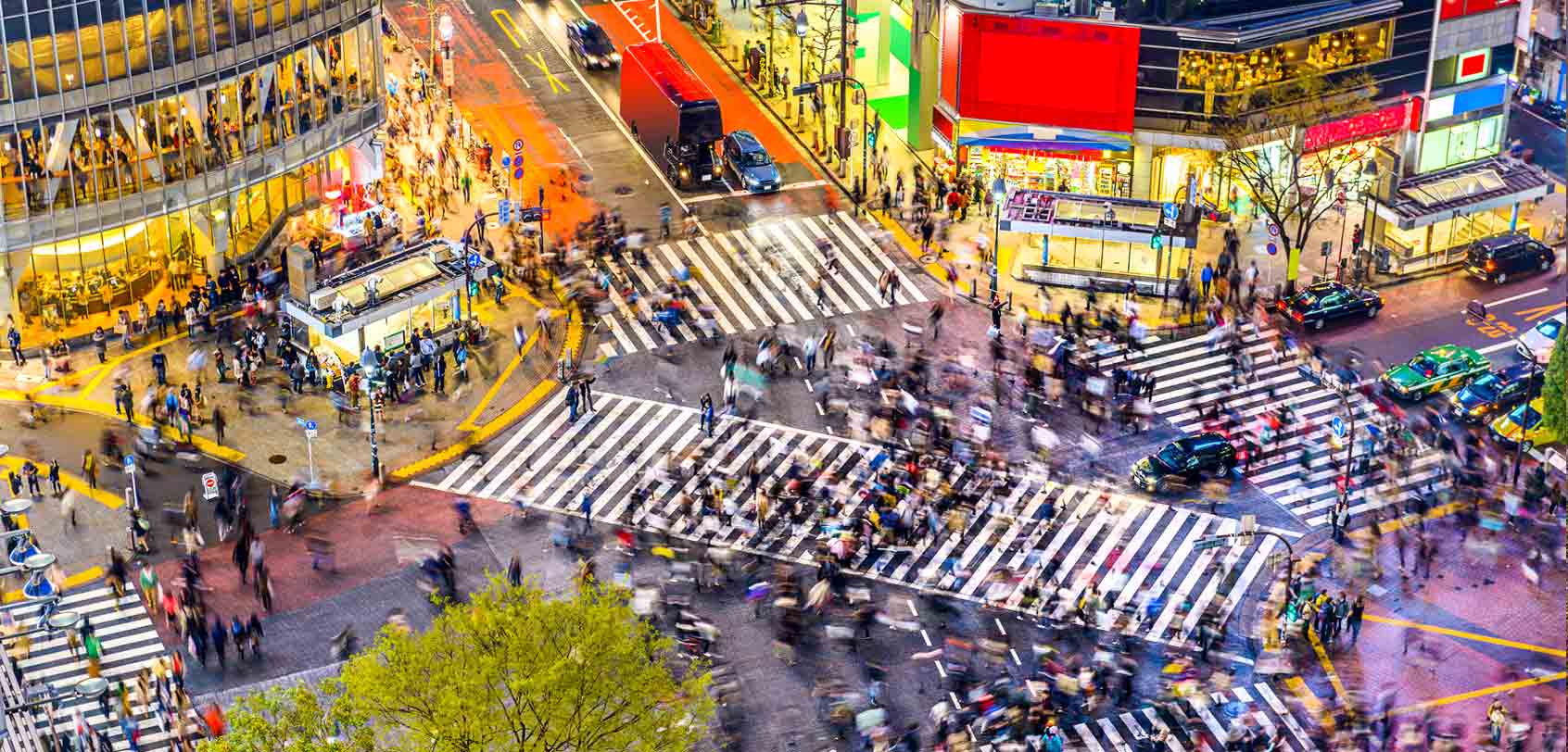
The Tokyo Metropolis is composed of 23 special wards and the city’s top highlights are found in only a few numbers of these wards. For ease of discussion, I will divide Tokyo into two: the west and the east. Below are the west’s top attractions…
SHIBUYA. This is referred to as a major nightlife area but it’s also a major shopping and entertainment venue especially because of its strong youth presence in fashion and culture.
- ★ Shibuya Crossing: Found in front of Hachiko Exit, this is arguably the most prominent landmark of the district and the most filmed spot in the area. If you want to get a good view of it, go to the QFRONT building where a big Starbucks cafe is found. It’s best to come during rush hour to see an impressive sight but be prepared for crowds inside the cafe. Nevertheless, if you want more of a higher bird’s eye view, go to Shibuya Hikarie shopping mall’s Sky Lobby on the 11th Floor.
- ALTERNATIVE : If you want less of the crowd, there’s a bigger statue of Hachiko along with his master, Professor Ueno, at the grounds of UTokyo or the University of Tokyo. .
- Rainbow Karaoke in Modi is incredibly stylish yet cheap, Karaoke Kan is famed for being the location of the movie ( Lost in Translation )’s karaoke scene, or for the more standard chain, Big Echo is a good one.
- Love Hotel Hill: This is where you can find the biggest concentration of love hotels in Tokyo, and though it’s not a typical item on a ‘ things to do in Tokyo ’ list, it can be an amusing thing in itself especially if you’re traveling with your loved one — largely because of how the rooms are delightfully themed. Just be warned though that some love hotels don’t accept same-sex couples or even two foreigners. Nevertheless, you can ‘rest’ in a room for 1-4 hours at around 1,500 yen ($15~) per hour or ‘stay’ in a room overnight for as low as 7,000 yen ($68~). .
- For nightlife: Two of the most brilliant clubs would first be the mammoth super club ageHA with over 4 dance floors, an outdoor pool, and an outdoor dance tent; and second, the laser-filled Womb club with its identifiable giant mirror ball. Better yet, get this Tokyo Nightclub Pass that grants you UNLIMITED entry to the top 7 nightclubs in Tokyo! .
- ★ Don Quijote, Loft, and/or Tokyu Hands: These shops are great to include in your Japan itinerary if you’re looking for cheap souvenirs, novelty items, stationaries, and more!
- Center Gai, Koen Dori, Spain Slope, and/or Shibuya 109: The first 3 are distinct shopping streets in Shibuya, whereas Shibuya 109 is a complex that you don’t want to miss out on if you want to do some serious shopping!
- Shimokitazawa : This nearby district is a great ‘bohemian’ spot if you’re looking for vintage and second-hand items and clothes. .
- Ichiran Ramen: A famous ramen (noodle soup dish) place that gained popularity worldwide because of its solo booth style of dining. Rest assured, the ramen tastes superb here and is worth a try so jot this down on your Japan itinerary!
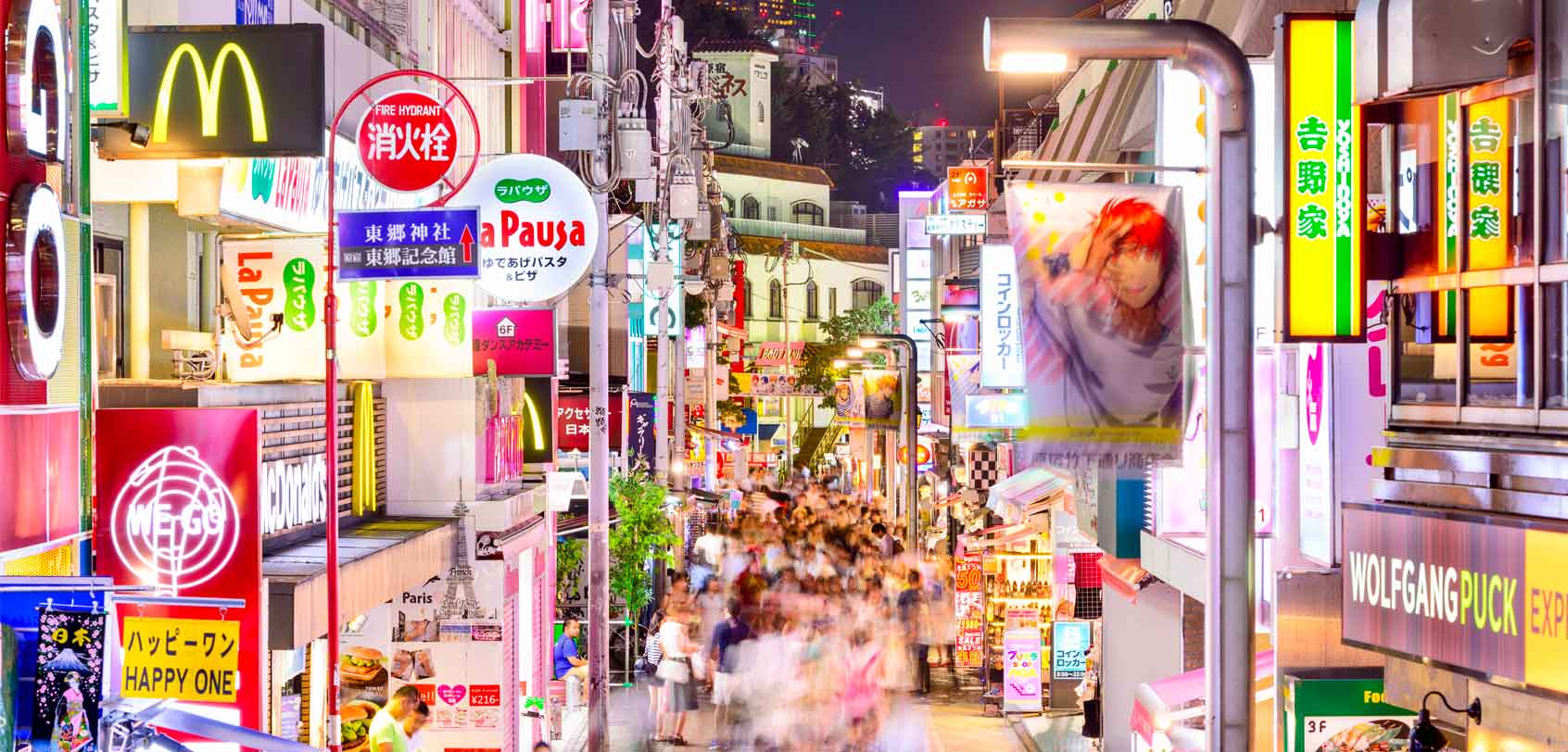
HARAJUKU. Famed for its fashion scene, quirky culture, cosplay shops, and so much more!
- TIP : If you want to witness a traditional Japanese Shinto wedding in which they make a procession to the temple, head here around 10AM and try your luck!
- Yoyogi Park: A typical meeting place for Japanese people from all ‘walks of life’. Since it’s just near the trendy Harajuku, you will normally find crowds of band members, lolitas , cosplayers, and fashionistas in interesting clothing (they’re sometimes concentrated around Jingubashi or the bridge near Meiji Shrine). Taking photos of these people in fancy clothing is perfectly fine, but it’s best if you ask for permission first since not all of them are there to please the crowd — they’re usually just there to hang out or do practices, etc. .
- TIP : Wanna do a guided tour? Take this Harajuku half-day tour that will take you through Takeshita as well as grant you access to some of the district’s top cafes!
- Cat Street: If you want to stray away from Takeshita Dori’s crowd, this is the next best place to be.
- TIP : Drop by Espace Luis Vuitton Tokyo which is found on the top floor of its building to find an amazing art space — not to mention that the bathrooms are really fancy.
- Daiso Harajuku: This is one of Japan’s famous 100-yen variety-store shops that offer affordable housewares, toys, stationery, decorations, bento supplies, gifts, and more!
- Tokyu Plaza Omotesando Harajuku: This is a multi-story shopping center that recently became even more popular because of its kaleidoscope-like entrance that’s made of dozens of tilted mirrors. Don’t miss out as well on its rooftop terrace area on the 6th floor if you want views over Harajuku. .
- Maison de Jullieta: Kawaii (cute) culture is a ‘thing’ among the Japanese and one of those kawaii fashion styles would be the sweet lolita look. In Maison de Jullieta in Harajuku, you can dress up as one — complete with costume, makeup, and hair arrangement at a price of around 10,000 yen ($97~)!
- Kawaii Cafe: In line with Harajuku’s colorful splash of colors and eccentric atmosphere, there exists the Kawaii Monster -themed cafe! With over 5 separately themed areas, the cafe is like a rainbowholic’s paradise where every corner is filled with kawaii decoration and Instagram-worthy scenes.
- ★ Purikura: Purikura runs like a photo booth — but ‘leveled up’ in a Japanese kind of way and it’s widely popular among females. Through these machines, you can take photos of yourself or your friends in a studio-esque booth; after which, you will be digitally enhanced. By that, I mean automatically Photoshopped in a kawaii manner: bigger eyes, whiter skin, and narrower face.
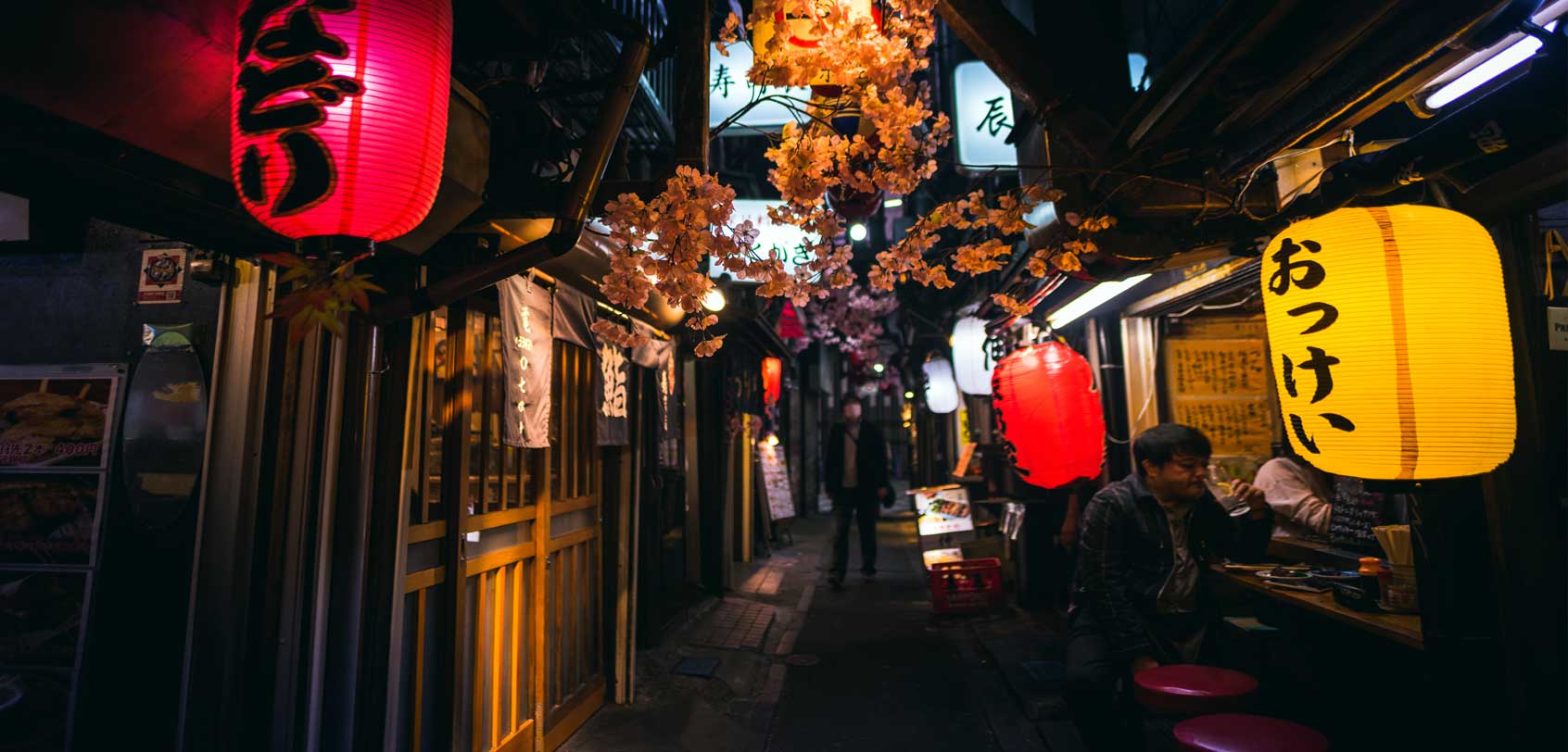
SHINJUKU. As a major city center, Shinjuku has the busiest train station in the world (Shinjuku Station) , it houses the administration center for the Tokyo government, and holds a plethora of amazing things to do in Tokyo!
- Tokyo Metropolitan Government Building: Towering at 243m, this structure has two towers and each of these has an observatory which visitors can visit for FREE in order to get a bird’s eye view of Tokyo. I recommend the southern tower since it shows a better ‘side’ of Tokyo (closes at 5:30PM), whereas the northern tower is best for night shots since it closes later into the night (until 11PM).
- Shinjuku Gyoen: Best visited during sakura and fall season, this place is just a stone’s throw away from Shinjuku station and it is surely one of the city’s largest and most favored parks. Here, you will find three different gardens, a traditional Japanese landscape garden, a French garden, and an English landscape garden.
- Samurai Museum: As a Japanophile , I have also been enchanted by the culture and history of the samurai (or bushi ) — Japan’s notable military warriors. Adults can enter for a fee of 1,800 yen ($18~) in order to see the impressive exhibits; but the highlight of this place is probably the experiences that you can try: photoshoot with basic samurai gear (500 yen $5), sword battle performance with an actor (free), samurai calligraphy lesson (500 yen or $5~), and professional photoshoot with full samurai gear (starts at 32,000 yen or $320~). .
- TIP : Book here for a guided tour so you don’t miss out on anything!
- TIP : For your Japan itinerary, book here for a guided tour so you don’t miss out on anything!
- Kabukicho: This is the entertainment and red-light district in Shinjuku which is sometimes called the “Sleepless Town”. Unlike Amsterdam which features prostitutes on the windows of their buildings, Kabukicho has a more subdued collection as it only includes hostess clubs, love hotels, massage parlors, and more. Unless you want to avail these kinds of services, as a regular tourist, I just find this as an interesting place to see in Tokyo. Rest assured, I felt entirely safe walking around here since it didn’t feel seedy. Truth be told, one particular thing about Kabukicho that I best liked to see or observe was the pachinko parlors. (Pachinko is an insanely popular game in Japan that somehow resembles pinball and since gambling is illegal there, this is the only way that locals can ‘gamble’.) .
- READ : For my experience !
- Godzilla: Japan’s famous giant monster and pop culture icon, Godzilla , can be seen here in Shinjuku atop Toho Cinemas. It’s a nice spectacle because he looks like he’s taking a peak from the building above — seconds away from wreaking utter havoc .
- Animal Cafes: Plenty of people would recommend that you go to Tokyo’s well-liked animal cafés such as those of a cat café, owl café, rabbit café, goat café, etc. (There are lots of them found around Shinjuku such as Cat Cafe Calico, etc. ). I don’t like them though because I’m uncomfortable with the idea of keeping multiple animals in such a small space with strangers that they’re not that accustomed to — but, I leave it up to you to decide what you would do.
◘◘ Day #2 — East of Tokyo
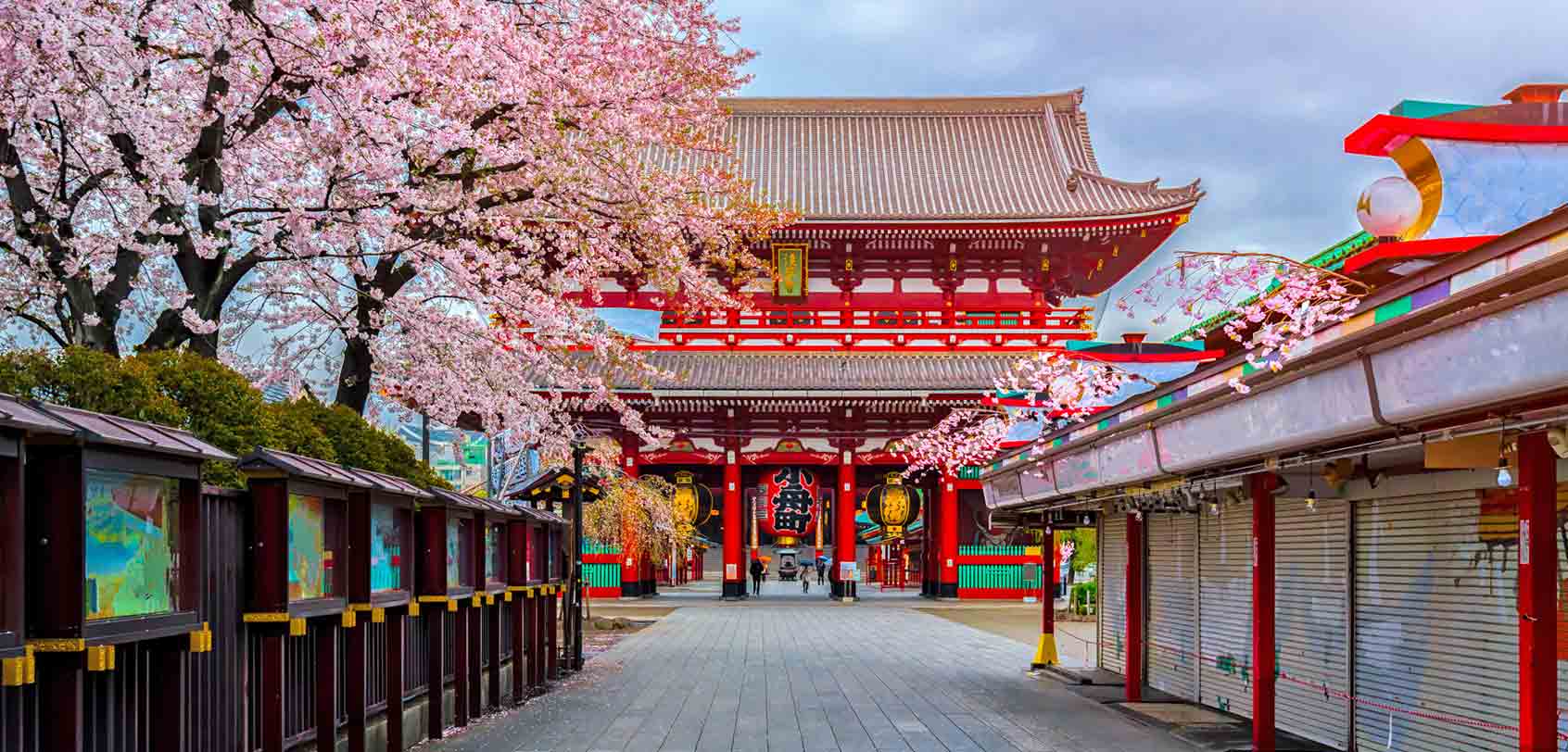
Photo by: Shutterstock
ASAKUSA. This is said to be the center of Tokyo’s shitamachi (“low city”) — which means that it’s an ‘olden’ district where you can get a feel of how Tokyo was in the past decades.
- ★ Senso-ji Temple and Asakusa Shrine: Take note that a shrine is dedicated to the Shinto faith, whereas a temple is dedicated to Buddhism. These two places are the main highlight in Asakusa with Senso-ji being the oldest temple in Tokyo. There is also an impressive “Thunder Gate” called Kaminarimon (which is a symbol of Asakusa and Tokyo) in front of the temple.
- Sumida River and Park: For a leisurely stroll, go over to Sumida River and lounge by Sumida Park which stretches on both sides of this body of water. Like what you’d expect, there are cherry blossoms here that come alive in spring, and then during July on its last Saturday, this becomes a great spot for viewing the Sumida River Firework. (If you see a golden building with an odd golden structure on top that looks like a teardrop, that’s the Asahi Beer Tower with its ‘Asahi Flame’.) .
- Read my kimono rental guide here to learn more about the process.
- Samurai Armor rental: You can take a step further and rent to wear Japan’s famous traditional warrior’s (samurai’s) armor! If you book this activity online , you can even have a professional photographer take photos of you.
- Rickshaw ride: To complete your kimono look, I recommend that you rent a traditional Japanese rickshaw which will take you around key spots in Asakusa.
- To be frank with you, this is a very long ceremony where you will sit motionless for hours as you follow a set of guidelines… but it is a striking example of Japan’s amazing culture that is exceptional for immersing one’s self with. For a good place to try this in, go here .
- Hanayashiki: If you’re up for it, this is said to be Japan’s oldest amusement park (built in 1853). .
- ★ Nakamise shopping street: Stretching about 250 meters from Kaminarimon to the main grounds of Sensoji Temple is this picturesque shopping street with over 50 shops that offer local specialties and the usual array of tourist souvenirs.
- Shin-Nakamise: Also called as “New Nakamise”, this runs perpendicular to the Nakamise Shopping Street and is lined with various shops and restaurants.
- Asakusa Kagetsudo: This is a famous melon-pan store that has been running since 1945. Melon-pan is basically a sweet baked bread with an outer layer that looks like a melon — so it’s just named that because of its appearance and not because it tastes like a melon. When you buy from this store, it is best to eat it when warm.
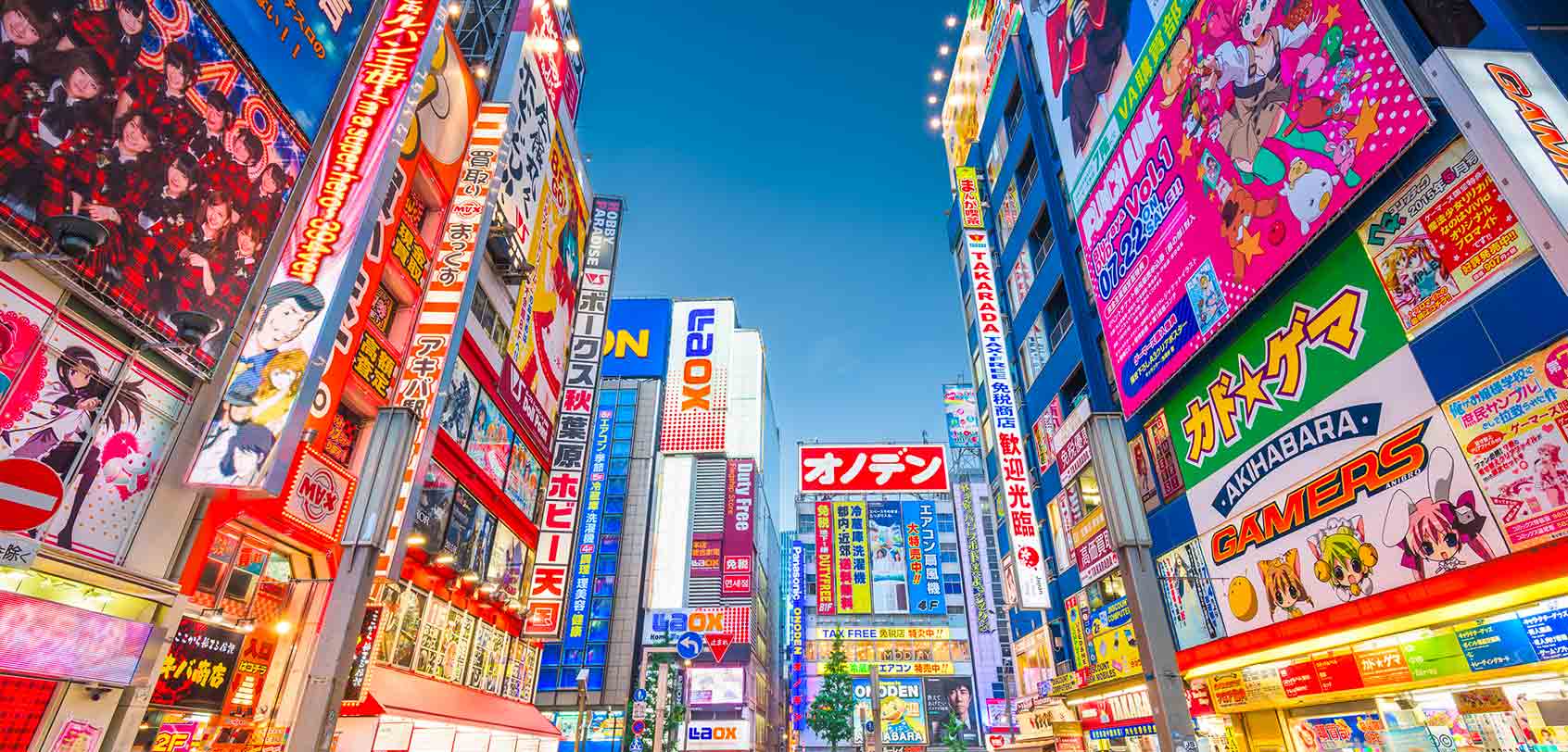
AKIHABARA. Dubbed as the otaku* cultural center and tech shopping district of Japan, walking through Akihabara’s main street called Chuo-dori will already give you an idea of what this district is all about. *Japanese term for people who have obsessive interests commonly towards anime and manga. A synonymous word in English would be ‘geeks’.
You see, Japan may have an amazing olden culture, BUT it has also developed an equally amazing modern culture over the recent years, and it is in Akihabara that you can get a glimpse of this somewhat wacky ‘evolution’.
- Maid cafe: A lot of people in Tokyo love to cosplay — a form of roleplaying where people wear costumes to represent a character (often found in animes and mangas). One of the good ol’ favorites of the Japanese when it comes to cosplaying or ‘dressing up’ is waitresses dressed in those frilly Victorian maid costumes. In line with their ‘character’, they will even act as if they’re servants and then treat others as their masters. Now apply that idea to a café, splash it with small games, a cutesy demeanor, brief performances, and picture-taking with customers and that’s where you get the famed maid cafes of Japan. A great place to try in Akihabara would be @Home Cafe.
- ★ Arcades: We have tons of video game arcades in the Philippines — HOWEVER, they’re not as insanely amazing, bright, exciting, and numerous as what Tokyo has! One of the most known gaming arcades in Tokyo would be Taito Station . (You could also do purikura inside these arcades).
- ★ Go Kart: Come live on the edge and explore downtown Tokyo in a cool Go Kart while you’re dressed in popular cosplay costumes! With this fun driving tour , you can opt to do a one-hour experience or a whole day affair. .
- Yodabashi: If you have time to visit only 1 tech gadget store in the district, then this 9-story building is your best bet! After all, it is proven that their items are usually cheaper than in Europe or even Asia.
- Mandarake or Tokyo Anime Center: Mandarake , a gigantic 8-floor complex that is full of merchandise related to anime and manga, is the best go-to space if you’re a hardcore otaku or at least a knowledgeable one at that; whereas I believe that a visit to the Tokyo Anime Center is best done first by people who have no idea of the otaku scene in order to gain a better understanding of it.
SUMIDA. The most noteworthy attraction that you should visit in this ward would have to be the following:
- Tokyo Skytree: At 634m, this is the tallest tower in the world. It is primarily a television and radio broadcast site for the Kanto Region; but for travelers, you can visit the large shopping complex, aquarium, and planetarium that are located at its base. And of course, for sky-high views of the city, Tokyo Skytree has two observation decks and you can purchase your tickets here .
- Try chanko nabe in any of the restaurants in the neighborhood. This is basically a hot pot dish that is a staple food of sumo wrestlers.
- TIP : To reserve your sumo tickets for Japan’s Tokyo Grand Sumo Tournament, go to this link . For the months wherein tournaments are not held, you can get a close-up look at the sumo wrestlers’ morning fight practices via this tour .
◘◘ Day #3 — Mt. Fuji
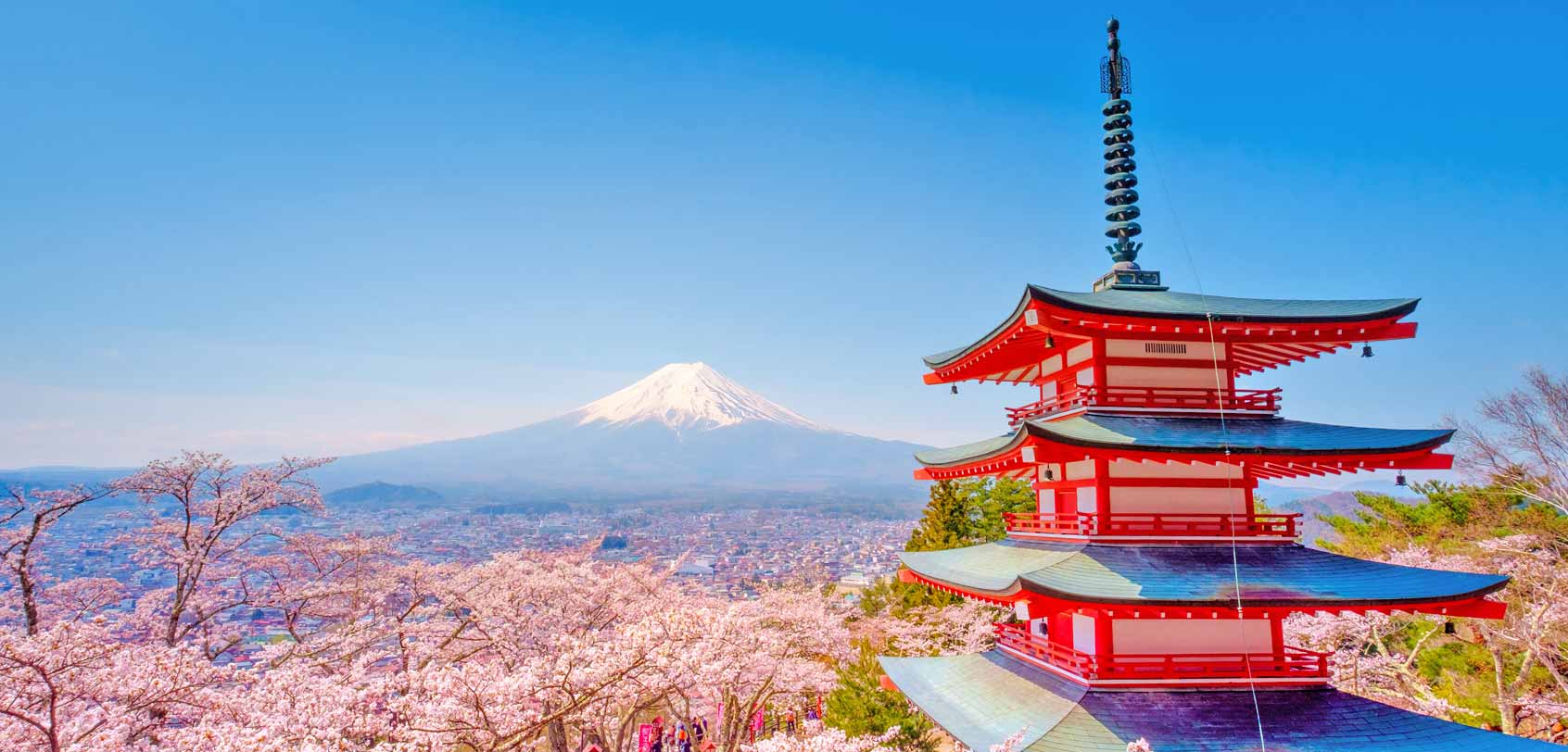
It’s time to check out Mt. Fuji or ‘Fuji-san’ (it’s how the locals commonly call it).
As the country’s tallest peak, it has been considered one of the most iconic sights in Japan so it would be a good idea to dedicate this day to it. There are several ways for seeing this active volcano in all its glory (including riding a Tokaido shinkansen from Tokyo to Osaka if you sit on the right, 40min before Shin-Fuji Station, or going to Fuji Subaru Line 5th Station) but below are the best locations for viewing it.
- Some people do one of the places below as a day trip, while others as an overnight trip to also experience staying in a ryokan (traditional Japanese inn). It’s totally up to you, but naturally, if you’re short on time, making it a day trip would be enough.
- Clouds often block the view of Mount Fuji so you often have to consider yourself lucky if you get a clear view of it. It is said that visibility tends to be better during the colder seasons of the year than in summer. Otherwise, it’s great in the early morning or late evening hours compared to the middle of the day.
- To save up on transportation costs, get a Hakone Free Pass to gain unlimited travel on eight transportation options including the Hakone Sightseeing Cruise (Pirate Ship), Hakone Tozan Train, Hakone Tozan Bus, Hakone Tozan Cable Car, and Hakone Ropeway.
- For a hassle-free experience, you can take a Hakone day tour that already includes a stop at Mt. Fuji and some other interesting activities like a lake cruise and more. Or, you can also do this other Hakone tour . .
- For a hassle-free experience, you can take a Mt Fuji day tour to this lake region with the inclusion of Kachi Kachi Ropeway, fruit picking, and fruit picking.
- A different option is to rather go to Chureito Pagoda (pictured above) which is still part of Fuji Five Lakes but not found within Lake Kawaguchiko. This spot is a favorite among photographers, especially during spring or autumn and it’s easy to see why! (This tour includes this pagoda as a stop) .
For other options and details, you can read my Mt. Fuji tour post!
- For a hassle-free experience, you can do a Kamakura + Enoshima day tour. .
- Enoshima: (1hr from Tokyo) This is a touristic island that offers a variety of attractions (Enoshima Shrine), beaches, parks, an observation tower, and caves (Iwaya Caves). If I say so myself, doing a Kamakura + Enoshima day tour would be ideal if you want to check out both of these towns. .
- Fuji Shibazakura Festival: (2hrs from Tokyo) This is a famous time-limited event that is usually held at Fuji Motosuko Resort from the middle of April to late May. If you have the time, I recommend doing a sakura tour of this festival as it features over 80,000 blooming shibazakura (pink, red, and white mountain phlox flowers) over 6 acres of sloping hills. Pair this off with a great view of Mt. Fuji and it instantly becomes an Instagrammable spot!
◘◘ Day #4 — Other Day Trips Outside Tokyo
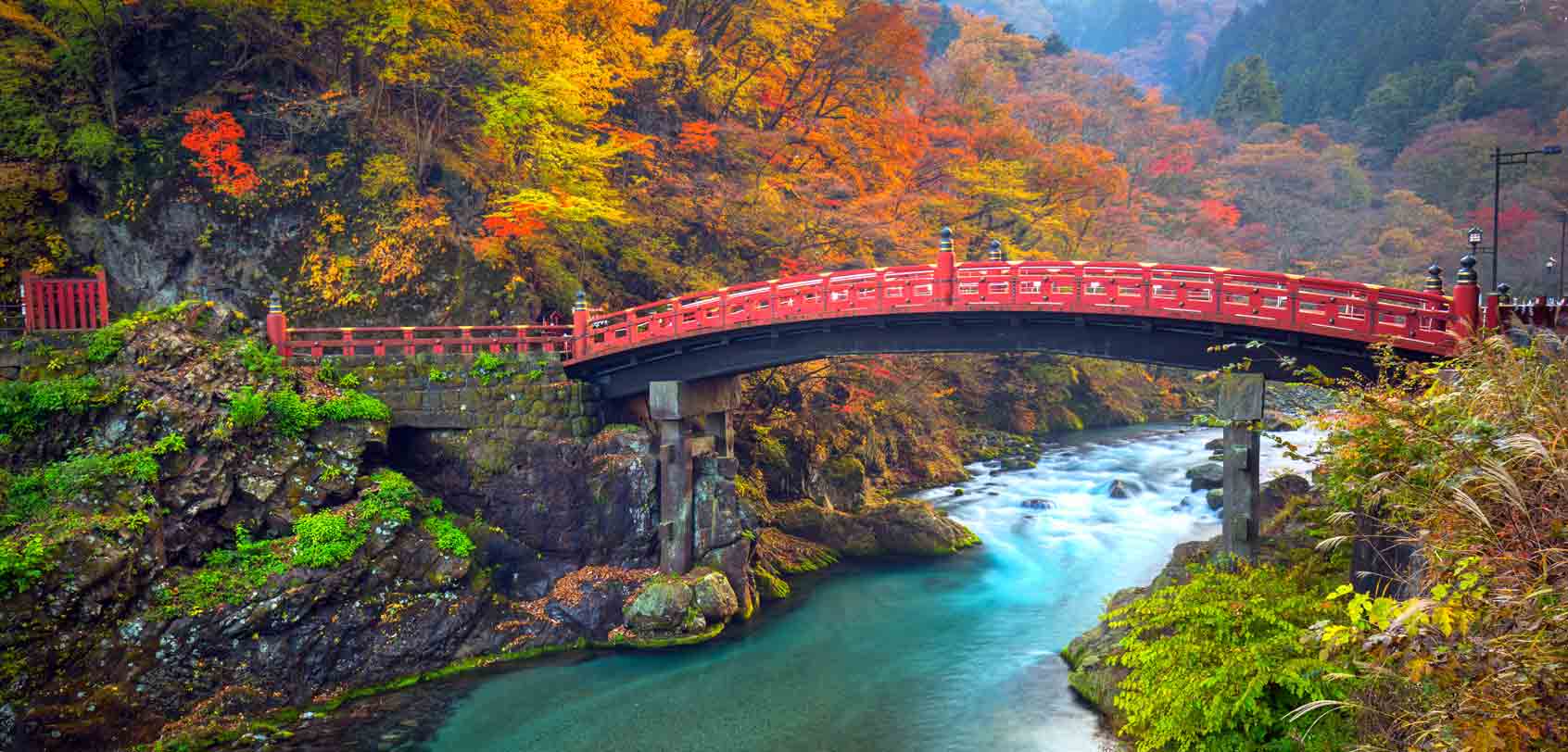
Below are other interesting day trips that you must see near Tokyo!
- TIP: For a hassle-free experience, you can do a Nikko day tour that includes several stopovers. .
- TIP: You can avail of a ‘ Yokohama and Kamakura Enjoy Pass ‘ to enjoy the major sightseeing attractions in these cities. .
- Kusatsu: (3hrs from Tokyo) This is a sound trip to make if you want to visit one of Japan’s most famous hot spring resorts. In fact, Kusatsu Onsen is blessed with large volumes of high-quality spring water which makes it popular among locals and tourists alike. You will love the atmosphere here as you find almost everyone wearing yukata/kimono on the streets. Otherwise, when winter comes, the town becomes a great ski resort to visit. .
- Chichibu: (2hrs from Tokyo) This city is a great place to escape if you want to get away from Tokyo’s bustle. After all, its forested mountains provide impressive nature views and hiking opportunities. One of the most sought-after events here though is its Chichibu Night Festival in December and its Hitsujiyama Park in Spring (for its beautiful pink moss park).
◘◘ Day #5 — …or More! (Tokyo Extra Days)

Naturally, there’s more to Tokyo than the sights I’ve mentioned on days #1 and #2 above. So in order to fill up your Japan itinerary with other activities for your extra days in the capital, below are some considerations that you can make.
WEST OF TOKYO.
- To enjoy the picturesque rooftop views on Mori Tower’s 52nd floor, just book an Observation Deck ticket online .
- Below Mori Tower, you will find a giant spider sculpture called Maman which means ‘mother’ in French. This is made by the artist Louise Bourgeois .
- Tokyo Midtown is yet another building that you can go into if you’re up for more shopping and entertainment.
- During Christmas, head to the area in Mori Tower that faces Keyakizaka Street in Roppongi Hills to see a great view of Tokyo Tower being illuminated by the street lights. Whereas if you go to Tokyo Midtown, you will find the Starlight Garden which has over 280,000 lights that are magically spread out on the grounds!
- ★ Tokyo Tower: At a height of 333 meters, this is like a replica of the famous Eiffel Tower. Made after Japan’s post-war rebirth, this used to be the country’s tallest tower — until Tokyo Skytree was made in 2012. Despite this fact, the tower’s prime location is still a splendid place to see a panoramic view of the city. There are 2 observatories here: the main one at 150m high and the special one at 250m high. The entrance is at 900 yen ($9~) for the main observation deck and 1,600 ($16~) yen for both decks. To book your tickets, go here .
- Nightlife: Clubs and bars in Roppongi can be a dizzying encounter for a first-timer; so it’s actually preferable if you visit this with a local. Otherwise, just a bit of advice: avoid the men (generally African men) who would try to push you into going to their clubs! More often than not, those are seedy ones, and later on, they might even overcharge you. For the best clubs to go to, I suggest Jumanji55 , V2 Tokyo , or Club Brand Tokyo which all have a good mix of locals and foreigners. Better yet, get this Tokyo Nightclub Pass that grants you UNLIMITED entry to the top 7 nightclubs in Tokyo! .
- Hie Shrine: You don’t need to travel all the way to Kyoto to witness a Shinto shrine with multiple iconic red torii (traditional Japanese gate) because you can find this right in the heart of Tokyo! (Otherwise, there’s also a similar one called Nezu Shrine).
EAST OF TOKYO.
- Imperial Palace: This is the main residence of the Emperor of Japan and it’s actually a massive park surrounded by moats. It contains buildings including the palace, private residences of the Imperial Family, offices, museums, and more.
- ★ Chidorigafuchi: Located just at the northwest section of the Imperial Palace is this moat section. This area is highly recommended during sakura season as it is one of the best spots for hanami (cherry blossom viewing). To add: they regularly light up the trees at night during that period and then you can even rent boats there!
- Tokyo Central Railway Station: This is the busiest railway station in Japan in terms of the number of trains per day and it’s quite a sight to see! For starters, you’ll instantly find this building because of its red brick appearance — a look that survived from when it was first opened in 1914. .
- DiverCity Tokyo Plaza: This is a dining, entertainment, and shopping complex which also features attractions related to the famous Gundam anime series. Truth be told, it also has a life-size Gundam statue in front of its building.
- Fuji TV Area: This is called such because of how the Fuji TV Building (one of Japan’s biggest TV stations) towers above everything else. As a visitor, you could definitely go into Fuji TV’s observatory deck that’s located in the circular portion of the establishment. Other things to see around here would be the shopping mall of Decks Tokyo Beach and the scenic Rainbow Bridge (which looks dashing at night, and where you can also find a replica of the Statue of Liberty.)
- TeamLab: Yet another Instagrammable attraction, this interactive museum is well-known for digital and light art, and to book your tickets, just go here .
- The Soho: This is an Instagram-worthy office building that’s famed for its color-blocked hallways.
- ★ Oedo Onsen Monogatari: If you can’t afford to go to a hot springs resort town, this is the next best thing for your Japan itinerary! This is basically a hot spring theme park that emulates the atmosphere of the Edo Period. You can enjoy various types of indoor and outdoor baths, restaurants, massages, games, and other entertainment while wearing a yukata (traditional Japanese wear). To reserve tickets for this, go here .
- ★ Tsukiji Market: Fish is a big business in Japan and the Tsukiji Market is a marvelous point for observing this lively industry as well as tasting its fresh produce. To date, this market has been divided into two, one of which is still found near Tsukiji Shijo Station and the other near Odaiba. If you want a guided day tour here, book an experience here . .
- TIP: Make the most of this area’s local flavors and drinking spots by doing a ‘ Tokyo After 5 ‘ tour!
- If you want the best ‘festive’ experience on this street, I suggest walking through here on weekends from 12PM to 5PM (until 6PM from April to September) because it is customarily closed to automobile traffic — an event known as ‘Pedestrians’ Paradise’.
- Depachika: This is a combination of the words depato (department store) and chika (basement). In Japan, most of the big department stores such as that of Mitsukoshi have their basement floor made into some sort of food market — but actually, if I have to describe it myself, I will call it a ‘food theme park’ because you can get to have a fun yet quick introduction into the VAST variety of Japanese food there — including square watermelons and insanely priced strawberries! Anyhow, the stalls are very generous with giving away samples too; so if you’re on a budget, you really don’t have to buy something (though it will be respectful to do so, naturally).
OTHERS (NEAR TOKYO)
- To book discounted tickets, reserve your spot here. .
- To book discounted tickets, reserve your spot here.
Kyoto Itinerary & Side Trips
Kyoto used to be the capital of Japan — nevertheless, it has retained that former glory with its great historic value alongside countless temples, shrines, gardens, imperial palaces, and traditional wooden houses among many others.
If I may add, this is also the city that is well known for its formal traditions most especially that of the geisha (or geiko ) who are Japan’s famed professional female entertainers. For these reasons and more, this is important to include in your Japan itinerary.
Looking for top sakura locations in Kyoto?
Check out this ultimate guide to Kyoto cherry blossom spots — from lesser-known locations to the most popular ones!
RELATED READ: Best Cherry Blossom Spots in Kyoto Best Hotels in Kyoto
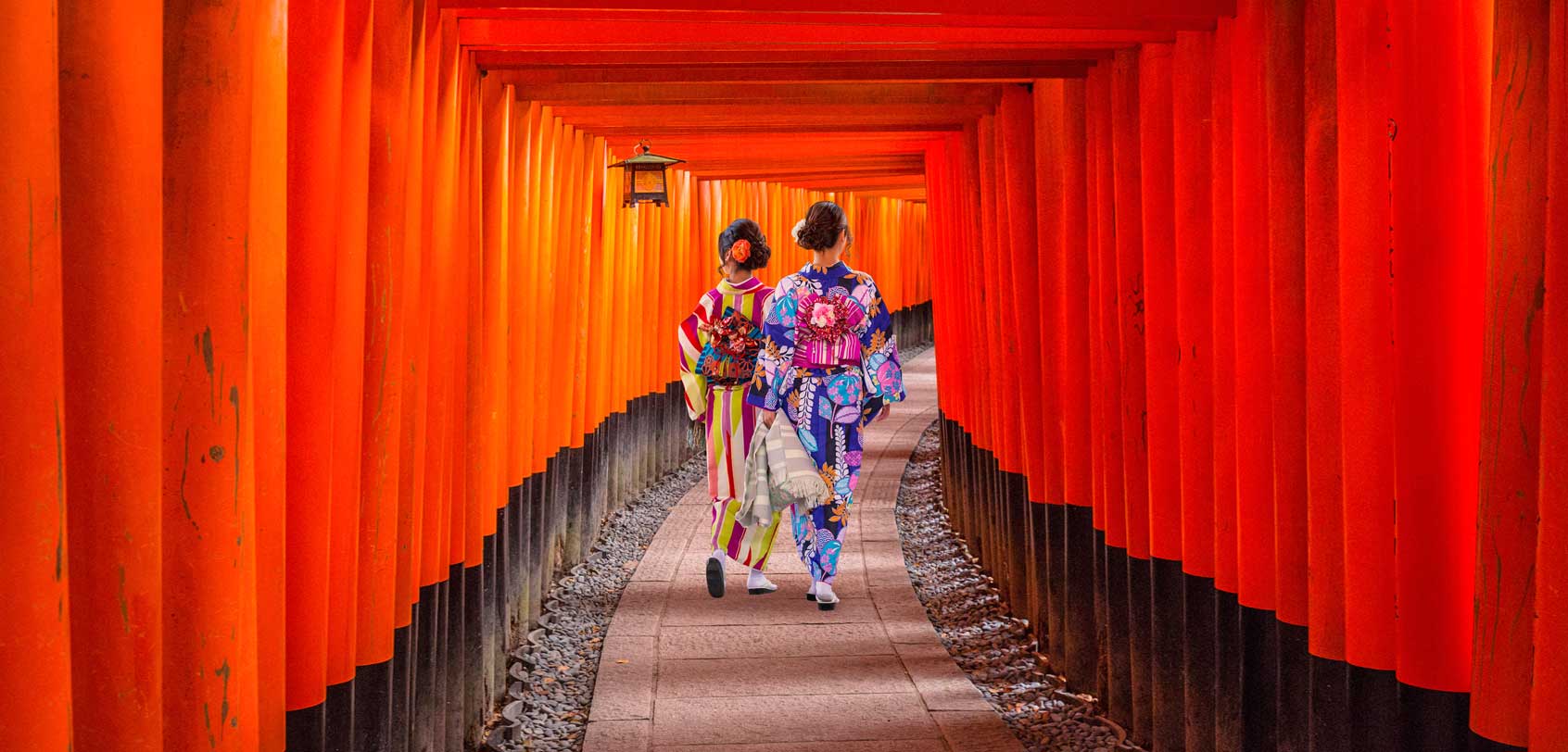
Take note that it takes around 3 hours by bullet train (shinkansen) to get to Kyoto from Tokyo. With that said, the ‘things to do’ for this day of your Japan itinerary should be fewer, but depending on your arrival time, it’s still possible to do a lot. Go and pick from my suggestions below…
- Nijo Castle: Also called Nijojo , this is the former residence of the first shogun (military dictator) in the Edo Period during his stays in Kyoto. Today, this castle is divided into 3 areas: the Honmaru (main circle of defense), the Ninomaru (secondary circle of defense), and the gardens. What’s great about the castle grounds too is that there are over 400 cherry blossom trees so it is quite a sight during the spring season. (Admission is 600 yen).
- Nishiki Market: Known as “Kyoto’s Kitchen”, this is a long yet narrow shopping street that features over 100 lively shops and restaurants. This is a great spot to visit for your Japan itinerary if you want to buy any fresh produce or Kyoto specialties. As a market with a long history, this is also a great place to mingle with the locals.
- Kyoto Imperial Palace: This great expanse used to be the residence of Japan’s Imperial Family until 1868, when the capital was moved to Tokyo. Given that this is within the Kyoto Imperial Park, it makes for a leisurely stroll to go through the space which is full of ponds, gardens, and weeping cherry trees. (Admission is FREE).
- Manga Museum: If you’re fascinated by Japan’s manga (comics) culture and history, this could be a quaint stopover for your Japan itinerary. Sometimes there are even artists who set up exhibits and offer sketches or portrait drawings of the visitors. (Admission is 800 yen).
- For a hassle-free experience, you can do a guided Fushimi-inari tour that includes a Sagano Train ride and a visit to Arashiyama.
- Pontocho: This is a dining area that’s packed with restaurants offering a wide range of choices from local to foreign cuisines. Take note though that most establishments open from around 5PM to 11PM only. If you come in the warmer seasons, most of the places build temporary platforms over the river for open-air dining (called kawayuka ).
TIP : If you want a hassle-free experience for your Japan itinerary, you can take a guided Kyoto morning tour or afternoon tour to key places in the city.
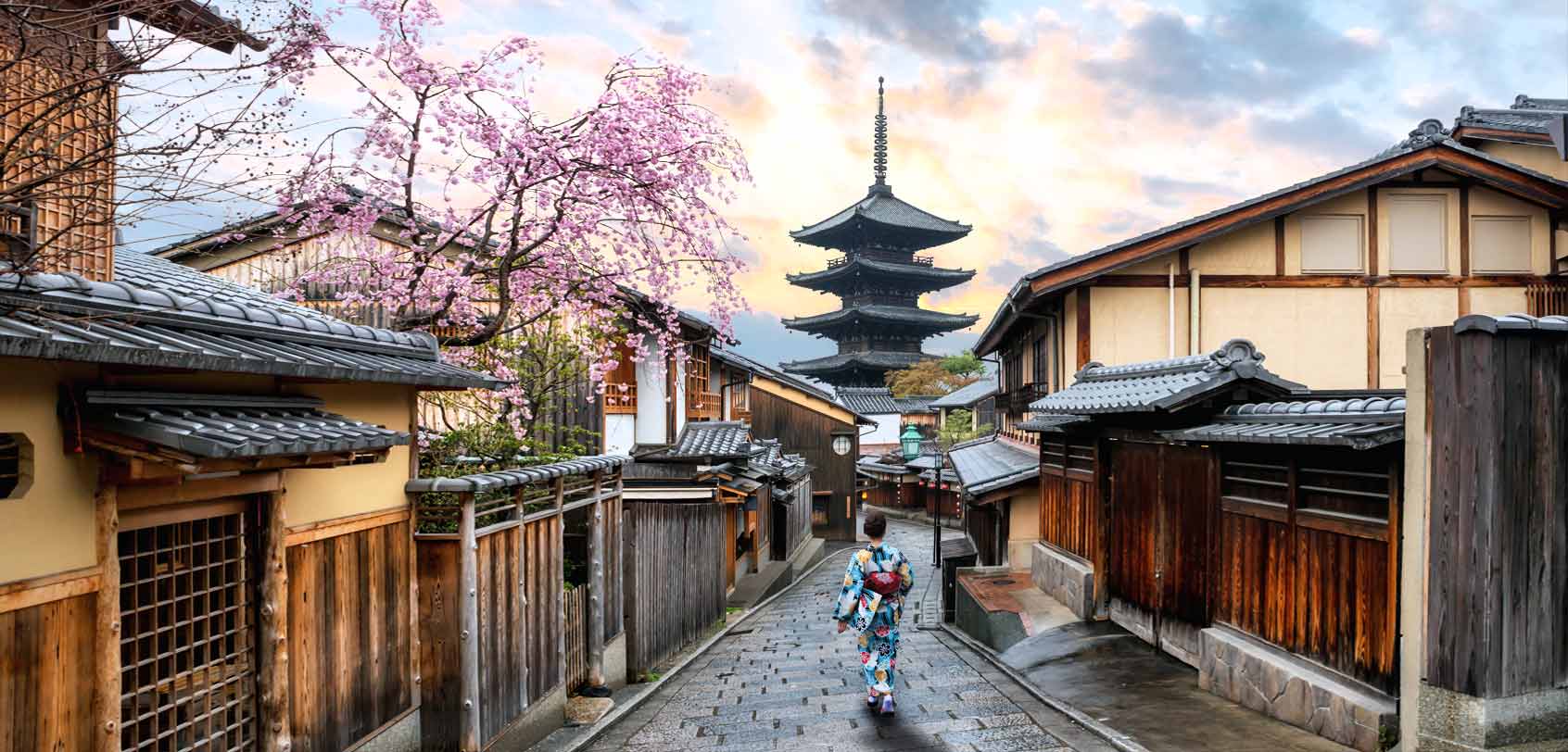
Time to make full use of this day in exploring Kyoto’s other important sights!
In my opinion, though it is possible to do all of the sights below in one day, it’s still a good idea to pay heed to the time especially if you plan to do a Kyoto kimono rental too because it will lessen your hours of exploration (given that putting on a kimono takes some time).
- Kiyomizudera: This is a famous temple in Kyoto that’s listed under the UNESCO World Heritage and it is best known for its wooden stage that stretches out to the hillside as it offers great views over the cherry and maple trees below it — so imagine how the site will be like during spring or autumn! (Admission is 400 yen).
- Other streets to check out in the district are Sannenzaka / Sanneizaka and Ninenzaka.
- ★ Kinkaku-ji: Lauded as the ‘Golden Pavilion’, this is — indeed — a structure that’s mostly covered in gold leaf. This Zen temple actually used to be the retirement villa of a shogun. Today, you would absolutely enjoy its impressive architecture as it overlooks a picturesque pond. Before leaving, don’t forget to go through the gardens and check out Sekkatei Teahouse to enjoy some matcha tea and sweets. (Admission is 400 yen).
- Ginkakuji: On the other hand, though this is referred to as the ‘Silver Pavilion’, it’s not really in silver — it never was. Many believed that it garnered its name after the building was built to contrast the Golden Pavilion. Either way, this remains to be a popular spot for many.
- Philosopher’s Path: This is a pleasant stone path (near Ginkakuji ) that is a must to visit during cherry blossom season . Its name was derived from Nishida Kitaro, one of Japan’s most famous philosophers, who used to practice meditation while walking this route.
- Hanami-koji Street and Shirakawa Area: The most popular places within Gion, so don’t forget to wander around here.
- ★ Gion Corner: Ideally, one of the ultimate experiences in Kyoto is to dine with a maiko or geiko, but since this is often expensive and exclusive, the next best thing you can do to ensure that you witness a real maiko or geisha is to visit Gion Corner. Aimed at foreign visitors, this place offers cultural shows that introduce traditional Japanese arts such as the tea ceremony, ikebana, bunraku, Kyogen comic plays, and maiko dances.
- Shijo Avenue: Bisecting Gion district is a popular shopping area that sells local souvenirs and gifts.
- Gion Matsuri: This is the festival of Yasaka Shrine and it is said to be the most famous festival in Japan! Therefore, if you happen to be in Kyoto in the month of July, you’re in for a treat because they celebrate during the whole month (with the highlight being July 17 as they do a grand procession of floats called Yamaboko Junko).
TIP : Wanna join a guided tour to the geisha districts for your Japan itinerary? Click here !
Kimono rental: Much like Tokyo, Kyoto has a lot of kimono rental shops too. If you only have the budget to do one kimono experience, I highly recommend doing it in the unique atmosphere of Kyoto than in Tokyo’s Asakusa! Another option is to do an oiran ( courtesan ) rental or photoshoot at Studio Esperanto .
◘◘ Day #8 — …or More!
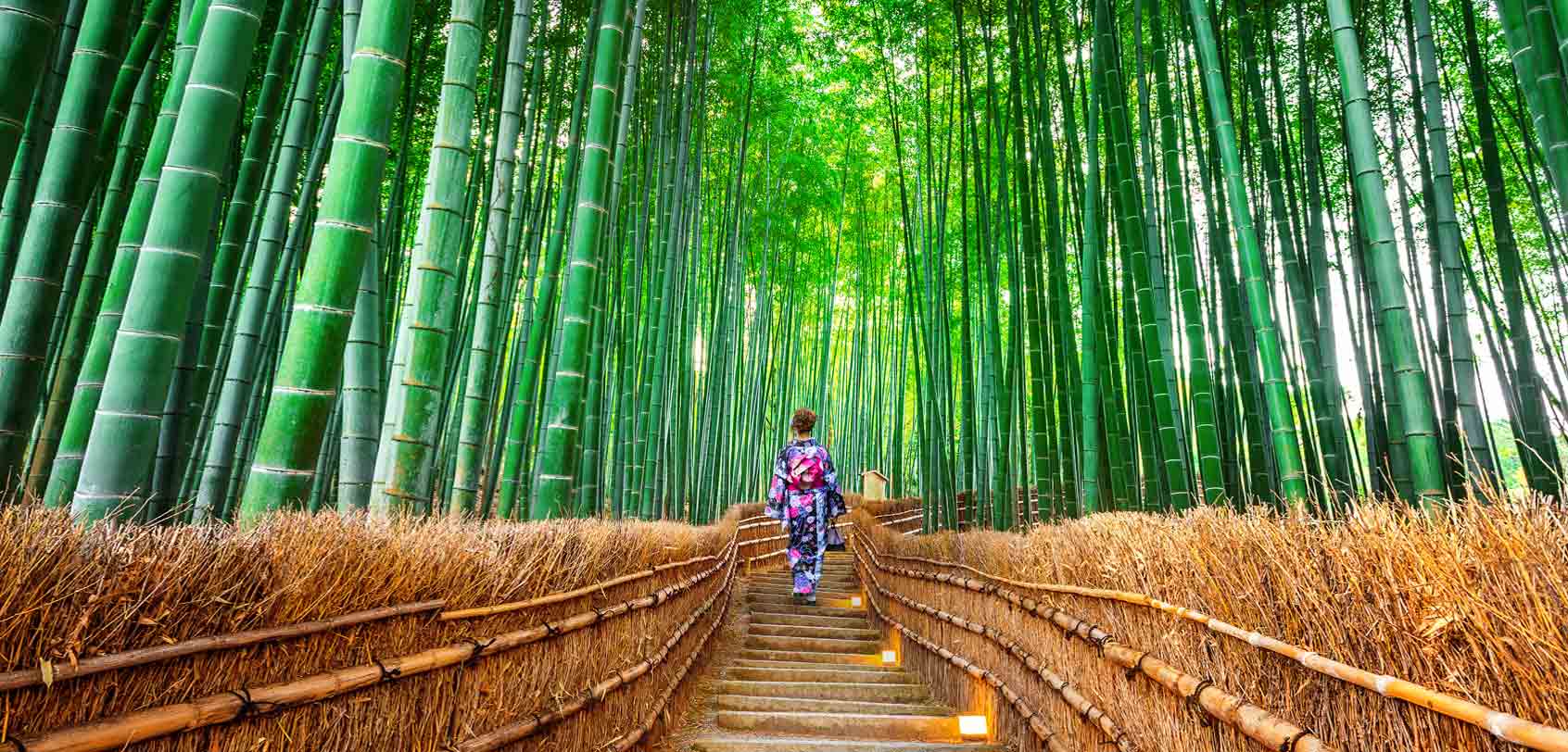
Arashiyama is particularly popular during the spring and autumn season — nevertheless, it’s a year-round destination due not only to its close proximity to Kyoto but also to its natural setting! In order to make the most of your Japan itinerary, don’t forget to check out the following Arashiyama highlights…
- Bamboo Groves: I’m sure you’ve seen photos of this place and it is famous for a reason: it really makes for a nice scenic walk or bicycle ride! If you happen to have the budget to rent a kimono in this area as well, then it is a must to take photos on this path. To avoid the crowd, I recommend coming in the early morning.
- Togetsukyo Bridge: Translated to ‘Moon Crossing Bridge’, this is an iconic landmark within Arashiyama due to how it is backdropped by the forested mountains. There is even a park by the river which is speckled with cherry trees.
- Monkey Park Iwatayama: The entrance to this park is found south of the Togetsukyo Bridge. Be wary that it’s a bit of an uphill climb — but which only spans for about 10 minutes. In this place, you will love the fact that there are over a hundred monkeys roaming freely in the open area. I particularly loved my experience here as I also fed the monkeys from a designated area. To add, this is also a great vantage point for panoramic views over Arashiyama. (Admission is 550 yen).
The center of the district is quite compact so I suggest taking your time strolling around. Other places of interest that you can check are Tenryuji Temple and Saga-Toriimoto Preserved Street. (Want a guided Arashiyama tour packaged together with Nara for your Japan itinerary? Check out this tour . Otherwise, you can also just take a half-day tour that will only focus on the top sights within Arashiyama.)
Or, you can also do this other Arashiyama tour from Kyoto with a Nara stopover for your Japan itinerary.
If you still have some more time, there is an option of doing the Sagano Scenic Railway which is a sightseeing activity on an old-fashioned train. Most people usually take a guided tour for this which is partnered together with a tour around Arashiyama. If not, you can just simply buy a one-way ticket .
◘◘ Extra or Substitute Activities in Kyoto

Got some more time for your Japan itinerary? Check out these other places…
- ★ Daigoji Temple: A designated UNESCO World Heritage Site that is hugely popular especially during autumn or springtime due to its picturesque surroundings. Sure enough, with its beautiful grounds, landscaped gardens, hiking trails, and so much more, it instantly makes for a worthy destination for your Japan itinerary.
- Toji Temple: This is yet another one of Kyoto’s many UNESCO World Heritage Sites and what’s notable about this temple is its 5-storied pagoda which is said to be the tallest pagoda in Japan.
- Shojuin Temple: This has risen to popularity among young females in Japan primarily because of its Instagrammable heart-shaped window called an ‘ inome ‘ window in its guest hall. What’s more, the temple’s ceiling has beautiful pieces of splendid patterns. (Admission of 400 yen).
Osaka Itinerary (including Nara)
Osaka has the 2nd largest metropolitan area after Tokyo and as a part of the Kansai region, it is best known not only for its grand shogunate castle but also for its nightlife and street food. Truth be told, this is a quintessential stop for your Japan itinerary!
RELATED READ: Best Cherry Blossom Spots in Osaka Best Hotels in Osaka
◘◘ Day #9 (Nara)
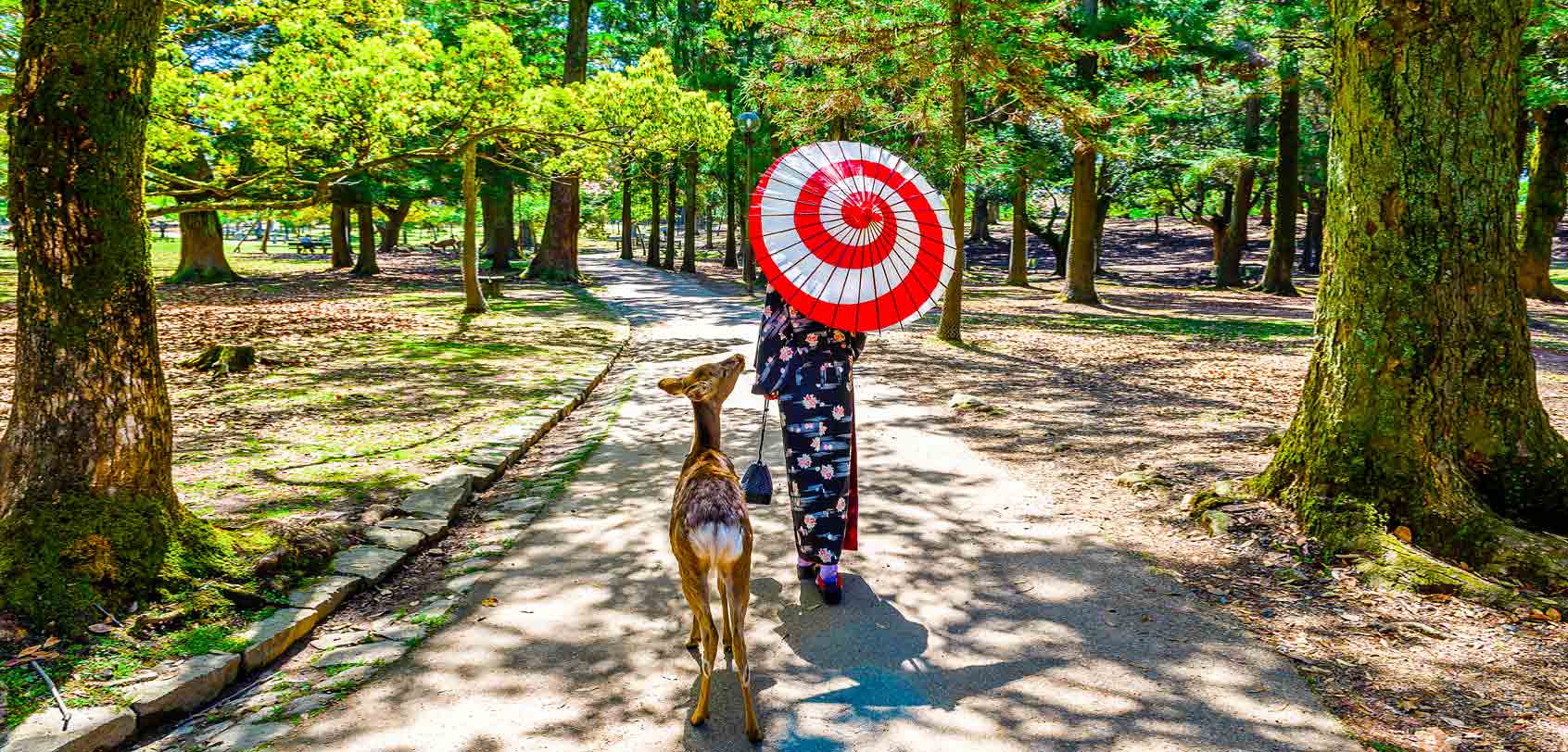
For your Japan itinerary, take note that it only takes about 1 hour by train to get to Osaka from Kyoto. After you check in to your Osaka accommodation , venture out on a day trip to the nearby district of Nara (which only takes less than an hour). If you’re not up for that, you can interchange this with day #10.
Nara is the first permanent capital of Japan, after which it was moved to Nagaoka, later to Kyoto, and then to Tokyo. Today, this district is famous for its historic treasures and adorable deer park.
- TIP : Try bowing down to the deers and oftentimes, you will find that they bow back! It is said that back in the olden times, the locals bowed down to them as they were (like I said) regarded as messengers of God. For generations, they have retained this Japanese custom especially when they expect some food.
- ★ Todaiji Temple: Found adjacent to Nara Park, you’ll first enter this temple’s towering Nandaimon Gate with fierce-looking statues that represent the Nio Guardian Kings. This is followed by the main hall, the Daibutsuden (Big Buddha Hall) which is the world’s largest wooden building housing one of japan’s largest bronze statues of Buddha.
- Horyuji Temple: This is one of the world’s oldest surviving wooden structures and a designated UNESCO World Heritage.
TIP : It’s possible to take a guided tour to Nara from Osaka (with a stop to Arashiyama included in it too). Alternatively, if you want to focus on this city only for your Japan itinerary, you can also just take a focused Nara tour .
If there’s still time, head on over to the nearby Mount Yoshino — even more so if you’re in Japan during its sakura season. Besides, this is regarded as the country’s most famous cherry blossom spot given the 30,000 cherry trees found on its slopes! Truth be told, Mount Yoshino together with the nearby Mount Koya and Kumano have been designated as a cultural UNESCO World Heritage Site since 20014.
Wanna stay a night or more? Check out these top best hotels in Nara grouped from budget to luxury places to stay.
◘◘ Day #10+ (Osaka)
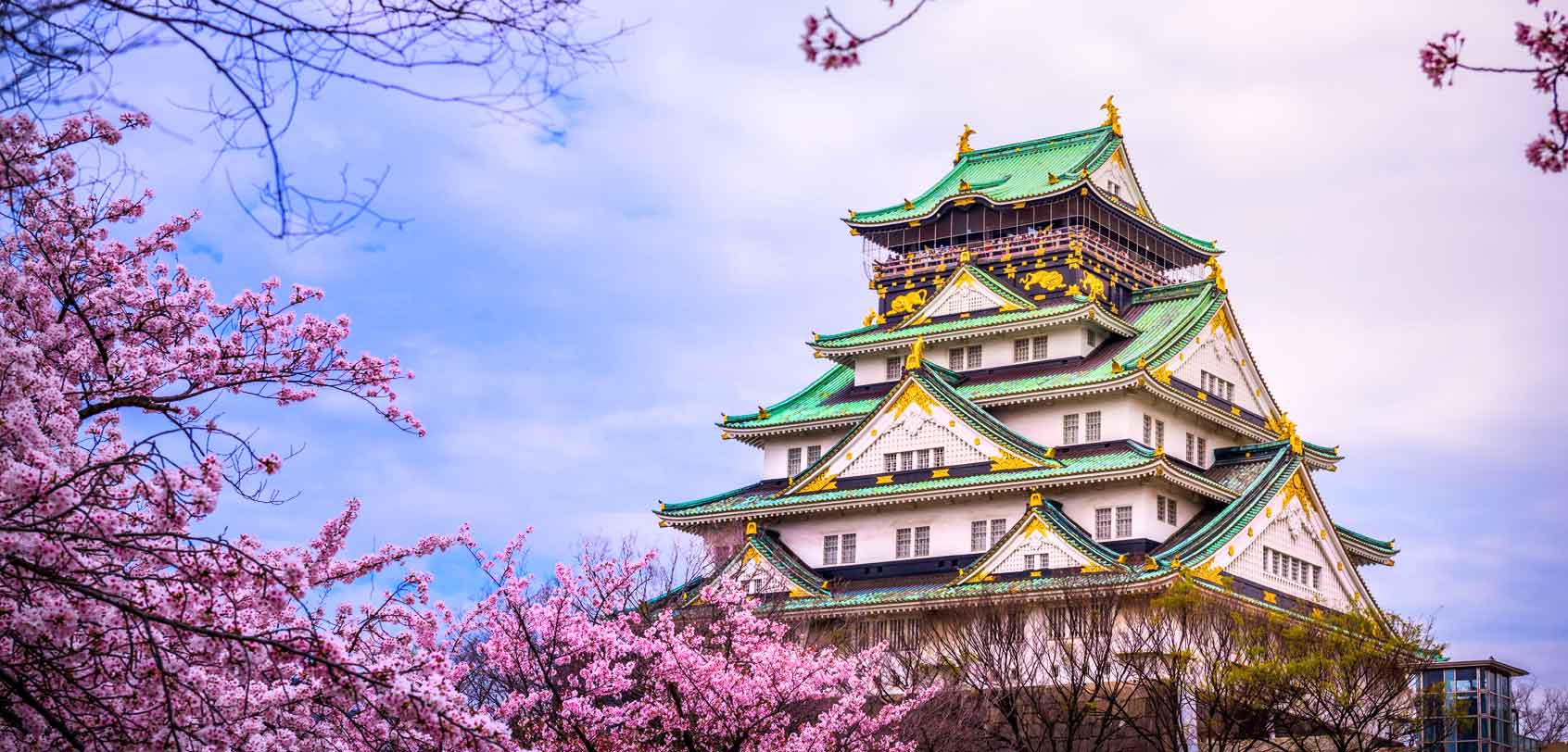
For this part of your Japan itinerary, t’s time to explore Osaka’s top wonders, namely…
- Beside it is the Nishinomaru Garden with over 600 cherry trees with an admission of 200 yen.
- TIP : Don’t miss out on the cool photo opportunities on the long escalator that leads to this observatory! In the basement of the building, you’ll also find a restaurant floor that emulates the early Showa Period of Japan.
- If you see a long line, don’t hesitate to line up too because most of the time it means that it’s a pretty good place! (Of course, if you don’t mind waiting).
- Shinsaibashi Shopping Arcade: This nearby area is Osaka’s premier shopping center that combines retail stores, boutiques, department stores, etc.
- Hozenji Yokocho Alley: This narrow path has a number of interesting restaurants and izakaya (informal Japanese pubs) that are somewhat reminiscent of Kyoto’s Pontocho alley.
- Shinsekai: If you want a less crowded version of Dotonbori, this is the place to go to for your Japan itinerary. Notable here is the Tsutenkaku Tower (the symbol of the district) and the kushikatsu (an Osaka specialty of various battered deep-fried foods)
TIP : Want to save time for your Japan itinerary? Take a guided Osaka walking tour or a food tour !
Are you rather looking for a fun and quirky way to explore Osaka? Then come and join a Go Kart experience and race through the city!
◘◘ Extra or Substitute Activities in Osaka
- For greatly discounted tickets, book online : ( standard E-ticket /+ express pass 3 , express pass 4 , or express pass 7 ).
- Hirakata T-SITE: This is a commercial complex near Hirakatashi Station that has beautiful architecture. Inside it is the famous Tsutaya Bookstore which has over 150,000 books and which also has become a recent hit on Instagram for its charming interiors.
- Osaka Aquarium: This is an incredible aquarium that displays over 15 tanks, each representing specific regions of the Pacific Rim. For instance, the central tank that represents the Pacific Ocean is 9 meters deep and is home to a whale shark which is the main attraction of the aquarium! ( Reserve your tickets here ).
Hiroshima Itinerary & Side Trips
This is the city that was largely destroyed back when an atomic bomb was dropped over it during World War II. Great efforts were taken to rebuild the city and today, Hiroshima is well known for its aspirations of tranquility with its Peace Memorial Park and if I must say so myself, this is a must for your Japan itinerary.
RELATED READ: Best Cherry Blossom Spots in Hiroshima Best Hotels in Hiroshima
◘◘ Day #11 (Hiroshima)

Please take into account in your Japan itinerary that it takes more or less 3 hours to get to Hiroshima from Osaka. Once here, below are landmarks that you can include on your…
- Peace Memorial Museum: Comprises of 2 buildings that go through the history of the city and the events that happened after the nuclear bomb. When I visited here, most of the exhibits were upsetting — and for good reason because they wanted to serve as a reminder of how we should never take peace for granted.
- A-Bomb Dome: This is what remains of the former Prefectural Industrial Promotion Hall. When the bomb exploded, this is one of the few buildings that still stood and remains so today. (This is also a listed UNESCO World Heritage Site).
- Cenotaph: This is an arched tomb dedicated to the A-Bomb Victims who died. Underneath it is a stone chest that holds the register of their names that number over 220,000. On the anniversary of the bombing, a ceremony is held at the park every year along with an observed silence at 8:15AM (the exact time of the bombing).
- Hiroshima Downtown: This is a bustling downtown area with Hondori Street as its main feature. As you venture about this place, do try the city’s specialty which is the Hiroshima-style okonomiyaki — a delicious savory pancake containing various ingredients.
- Hiroshima Castle: This was destroyed by the atomic bomb in 1945 but it was rebuilt and nowadays, it holds exhibits about the castle’s history as well as Japanese castles in general.
TIP : If you don’t intend to stay a night in Hiroshima, you can take a day tour to this city — which will already include a trip to Miyajima. (Starting points for your Japan itinerary can be from either Kyoto or Osaka ).
◘◘ Day #12 (Miyajima)
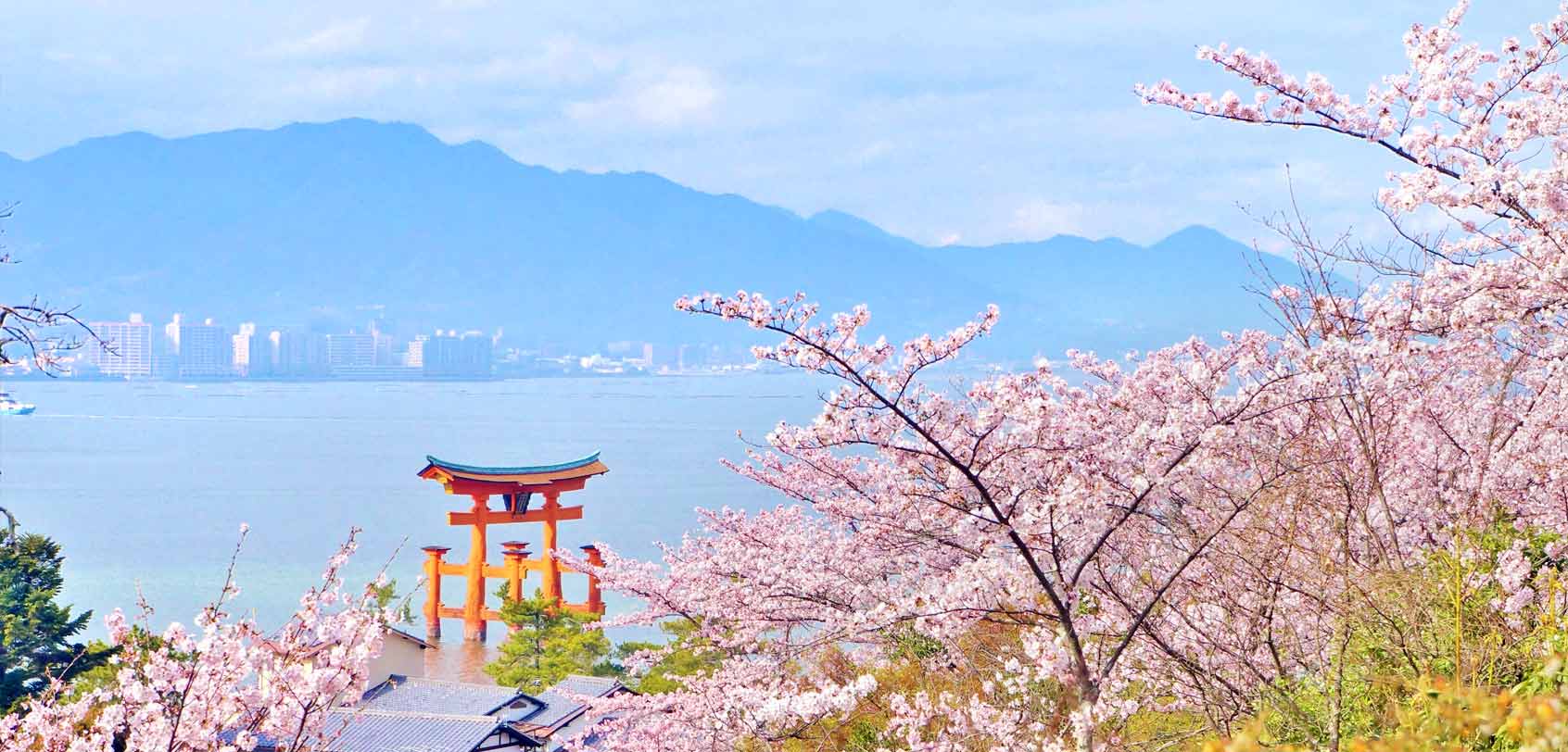
Just a 1-hour ride away by train and ferry from Hiroshima is the small island of Miyajima. It’s particularly famous for its giant torii gate that seemingly floats on the water during high tide — making it one of Japan’s best views. Most people do this as a day trip for their Japan itinerary but you could also stay overnight to experience a ryokan (traditional Japanese inn).
- If you want the best view, be mindful of the timings of the tides during your visit. High tide is obviously when it is most picturesque, but the low tide has its charm too because then you can walk up to the gate and see it up close.
- Momijidani Course: shortest but also the steepest and goes mostly through the forest.
- Daisho-in Course: offers the nicest views and is not as steep as the other two.
- Omoto Course : any of these 3 hiking trails takes about 1 to 2 hours to reach the summit.
- Daisho-in Temple: Found at the base of Mount Misen. There is an interesting Buddha ritual here wherein as you walk up the temple steps, you spin the metal wheels with inscribed sutra as it is believed to have the same effect as reading them.
- Omotesando: This shopping street is the busiest place in Miyajima where you can find souvenir shops, food stalls, and restaurants. Why not do some shopping here while doing your Japan itinerary!
Other Destinations & Trips
Obviously, there is more to Japan other than the famous destinations of Tokyo, Kyoto, Osaka, Nara, and Hiroshima. So if you have more days on your Japan itinerary, consider filling it up with any of the following destinations!
TIP : For a complete list of amazing tours and activities to do for your Japan itinerary, see here ! When booking, use code AILEEN5OFF to get 5% off!
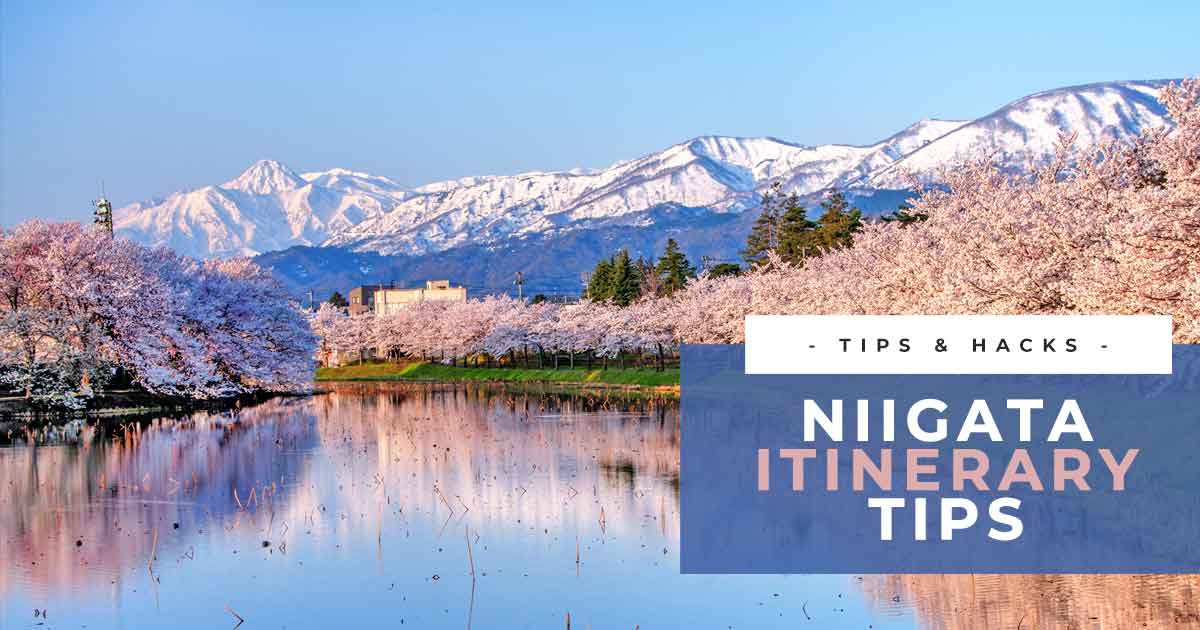
Niigata Itinerary

Chubu Itinerary
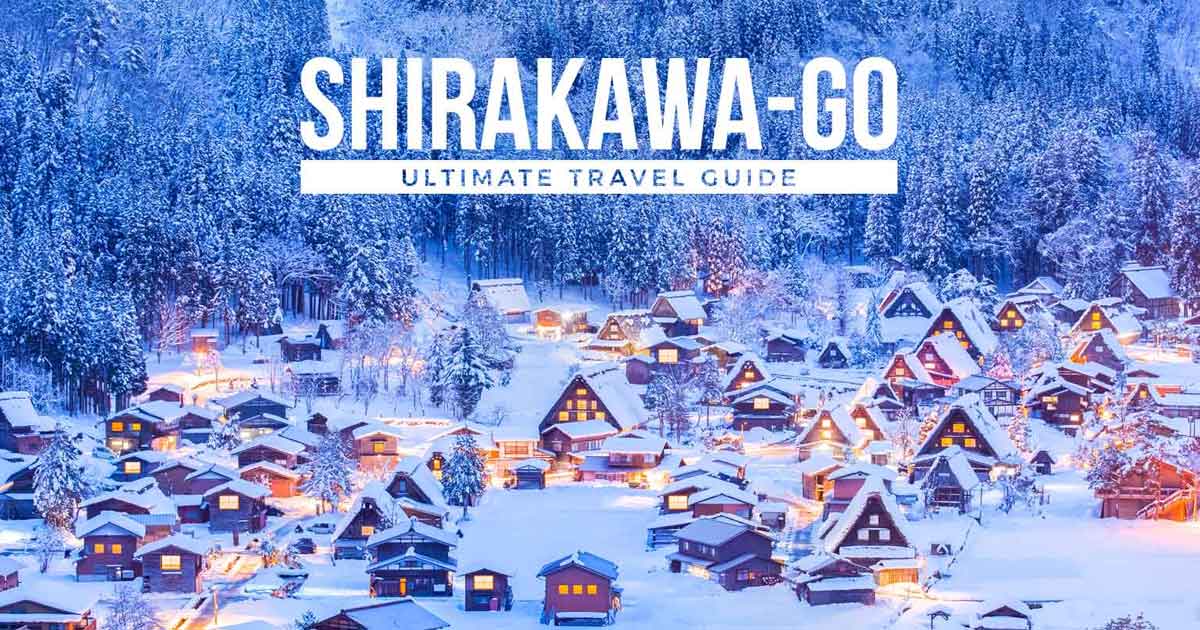
Shirakawa-Go
Tateyama Kurob Alpine Route
◘◘ Day #13 and Onwards
(My favorites are marked with a ★).
NORTH OF JAPAN.
- See here for a list of things to do in Hokkaido . .
- READ : Niigata Prefecture: A New Japan Foodie Destination! .
- Nagoya: Also found within the Chubu region is Nagoya which is known for its towering castle. Other notable sites are as follows: Korankei, City Science Museum, Atsuta Shrine, and Railway Museum. For food, check out Sekai no Yamachan , a famous izakaya (Japanese pub) in the city that serves flavorful “legendary chicken wings”. .
- Kanazawa: This is the capital of the Ishikawa prefecture and it boasts historical attractions as well as its ‘ Kenrokuen ‘ — said to be one of the 3 best landscape gardens in Japan. .
- Kiso Valley: Nestled within Nagano prefecture is this valley that holds an ancient 70km trade route called Kisoji which was later on combined with other routes forming the 500km long Nakasendo . Today, nearby post towns of Magome, Tsumago, and Narai are flocked by visitors not only to hike through the Nakasendo but to also revel in the traditional stone paths and wooden buildings of these quaint towns. Truly an interesting addition to your Japan itinerary! .
- READ : Things to do in Matsumoto .
- For more info, read here . .
- READ : Things to do in Takayama
- Tateyama Kurobe Alpine Route: If you’re up for incredible and unique nature activities in Japan, it’s a MUST to visit the stunning mountain sightseeing route that’s commonly referred to as the “Roof of Japan”. A crowd favorite as of late is its grand ‘Snow Wall’ that’s open from mid-April to late June! For more info, read here . .
- You can do this as a day tour from Nagano .
- Shibu Onsen: An old-fashioned hot spring town
- Shiga Kogen Resort: The largest ski resort in Japan.
Wanna see cute and fluffy foxes? Then go and visit the famous fox village in Miyagi Zao’s city of Shiroishi for your Japan itinerary! . Check out this blog post to find out more: The Fluffiest Place on Eart: Miyagi Zao Fox Village!
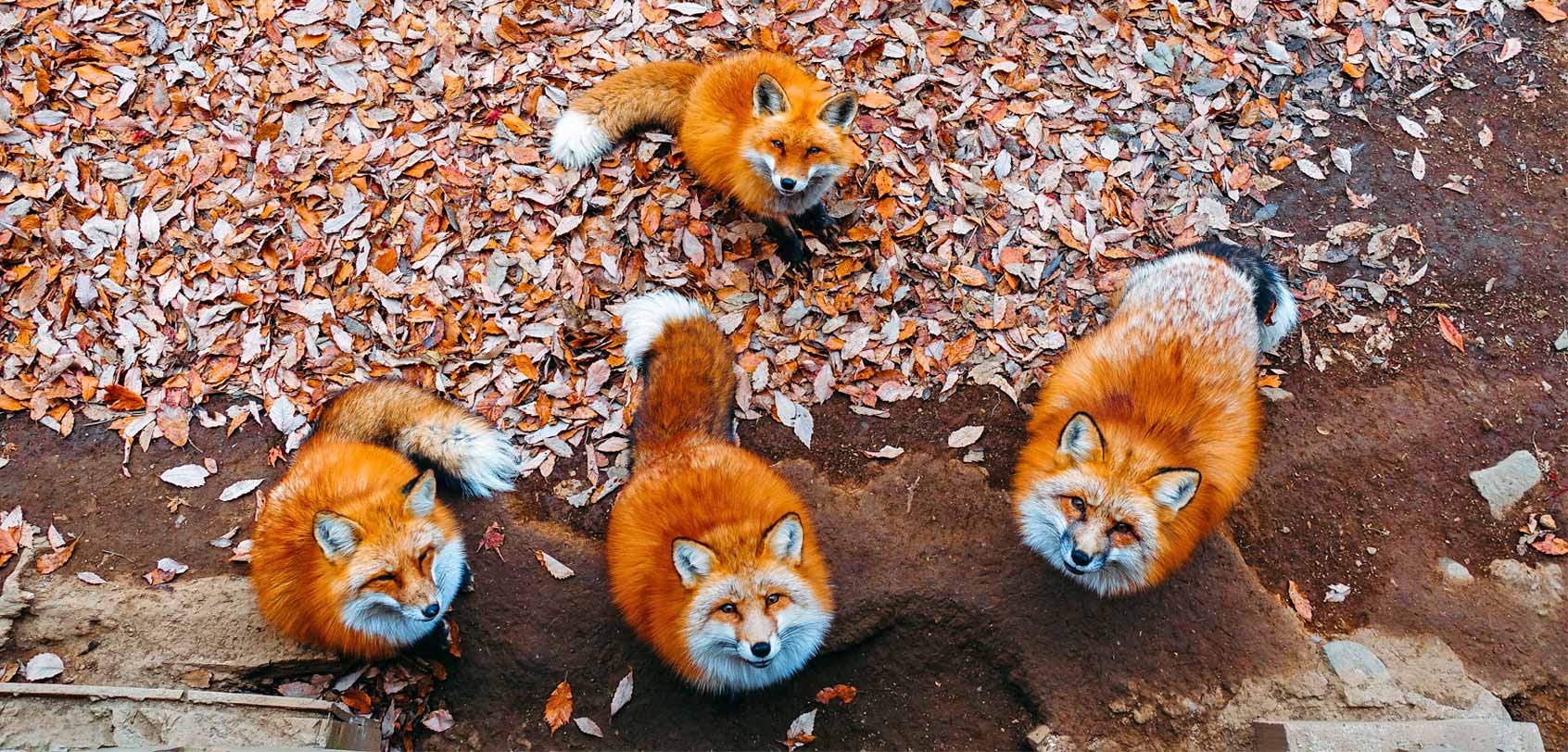
SOUTH OF JAPAN.
- ★ Kinosaki: Located about 3 hours away from Kyoto, this is a pleasant onsen town that has a great atmosphere. I stayed here before for 2 nights and I loved strolling around the town in my yukata and geta (wooden clogs), feeling like a local! After all, everyone (locals and foreigners alike) who visit the town almost always wears the same attire when going about the place onward to the public baths. .
- See here for a list of things to do in Okinawa . .
- Himeji: This place is most famous for its Himeji Castle which is typically considered to be Japan’s most beautiful surviving feudal castle. Because of this, it is both a UNESCO World Heritage Site and a national treasure that you must see for your Japan itinerary. .
- See here for a list of things to do in Kobe .
Booking Essentials

TIP: It’s a good idea to crosscheck the prices with other popular travel insurance providers like World Nomads and HeyMondo (as my reader, you get 5% off)! . However, take note that a travel insurance’s affordability typically means lesser coverage; so please always ensure that you read the fine print in order to decipher which travel insurance company is the right fit for you and your trip!
The Best Tours in Japan?
Come and check out this list of the top things to do in Japan which features the best activities and tours to do in Tokyo, Okinawa, and more!
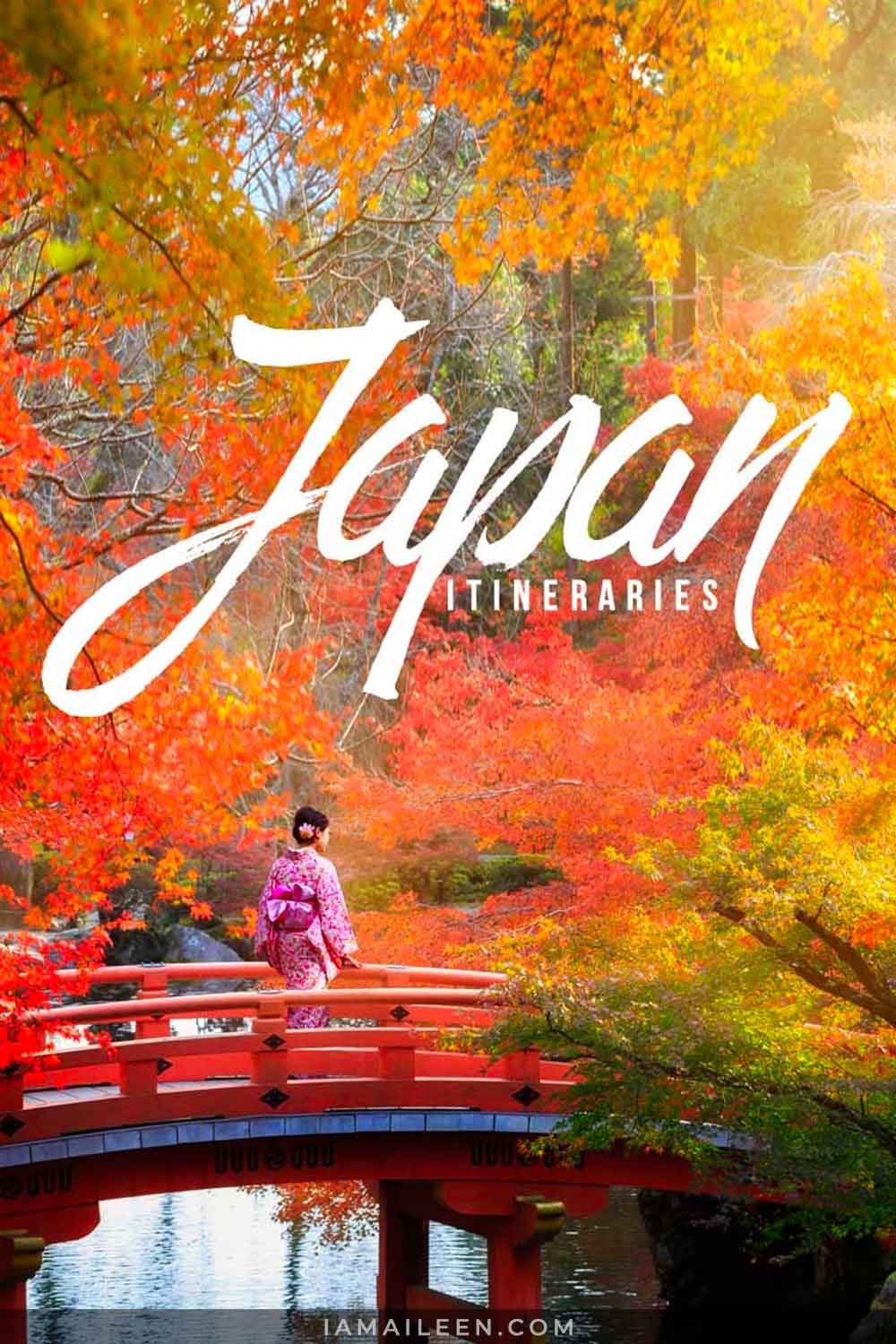
There really is SO much to see in Japan! …But I believe that my travel guide here is already a good start. Please feel free to tweak this itinerary and make full use of my extra activity suggestions in order to make your trip shorter or longer and better fitting for your travel style.
Enjoy and do let me know how your trip goes!
Have you seen my latest vlog?

Hey there! I am Aileen Adalid. At 21, I quit my corporate job in the Philippines to pursue my dreams. Today, I am a successful digital nomad (online entrepreneur, travel writer, & vlogger) living a sustainable travel lifestyle.
My mission? To show you how it is absolutely possible to create a life of travel no matter the odds — and I will help you achieve that through my detailed travel hacks, guides, resources, tips, and MORE!
Follow Along
CURRENTLY BASED IN: The Philippines
- 100k Followers
- 51k Followers
- 80k Followers
- 10k Followers
- 23.1k Followers
Join over 1 million readers worldwide and get my FREE packing checklist, gain exclusive access to travel giveaways and more!
Success! Next, please check your email to confirm your subscription.
GET FREE PRINTABLE NOW!
Trending Now
Top 20 philippine online shopping sites for gift ideas & more.
Running out of gift ideas? Not enough time to go shopping? Here are the top 20 online shopping sites in the Philippines to help you out!
Top Tips to Stay Safe Online While Traveling
Don’t get swept away with the thrill of your travels — make sure to follow these top tips to stay safe online while traveling!
Korean Visa Application Requirements for Filipino Tourists in Manila, Philippines (Single / Multiple Entry)
Make your South Korea travel dreams come true and get a single or multiple South Korean visa in Manila, Philippines!
Top 10 Things to Do on a Trip to South America
South America is one of the most diverse continents — full of natural wonders and fascinating cultures. Join us as we explore the top 10 things to do.
Top 10 Things to Do for Your First Tibet Travel
Make the most of your Tibet travel with these top 10 must-do activities, from exploring ancient monasteries to trekking mountains!
Latest Posts
Learn Today
How to start a successful blog, 70 comments.
I want to go back there so much! Loved it
This really is a comprehensive guide to Japan. It has everything you would need to know about Japan and how to plan the perfect itinerary.
we are planning to visit Japan next year and this is very helpful
Thanks for sharing this useful article about Japan itinerary, it will so great holiday :)
Do I need JR Pass if I travel to Hakone? My whole trip is just 5 days.
I guess that would mean you’ll mostly base yourself in Tokyo? If so, I don’t think you’ll need a JR Pass — but to be more precise you can read my article here: https://iamaileen.com/japan-rail-pass-guide/ . It has a link to a calculator site there that can calculate if having a JR pass is worth it or not for your route. Hope that helps!
Submit a Comment Cancel reply
Your email address will not be published. Required fields are marked *
Be notified of follow-up comments by email
Be notified of new posts by email
Submit Comment
Pin It on Pinterest

Ultimate 21 Day Japan Itinerary
In my opinion, 21 days in Japan is the perfect amount of time to spend in Japan. Sure with 14 days you could see all the highlights, but with 21 days you can really delve into the cities, as well as visit some of the more “off the beaten path” destinations, away from much of the tourists. Check out this ultimate 21 day Japan itinerary to see how to best spend your time!
Disclaimer: This post contains affiliate links. Find more information about affiliate links on our policy page .
- Before You Go
Day 1: Travel Day
Days 2-5: tokyo.
- Days 6-9: Day Trips from Tokyo
Day 10: Yamagata & Sendai
Day 11: nagoya, days 12-14: kyoto.
- Days 15-17: Day Trips from Kyoto
Day 18: Okayama
Day 19: hiroshima.
- Day 20: Day Trip from Hiroshima
Day 21: Travel Day
Transportation & discount passes, souvenirs & shopping, additional information, before you begin.
If this is your first time traveling to Japan, I highly recommend doing some research into the country’s transportation system, customs, etc. I believe you’ll find it much easier to put together a Japan itinerary if you sort of know what you are getting yourself into.
Useful articles:
- Top Japanese Phrases for Travel
- Best Japan Travel Apps – Directions, Food, & More
- Navigating Japan’s Train System: Tips for Traveling Japan by Train
- Is the Japan Rail Pass (JR Pass) Worth It?
21 Day Japan Itinerary
You’ll likely spend your first day in Japan just getting settled. Depending on whether or not your purchased any discount passes, as well as a phone SIM card or pocket Wi-Fi, you may have to pick them up and/or get them activated. Between that and getting to your hotel in Tokyo, you’ll likely find that a good chunk of your day is gone. If you are lucky, you may have some time to explore the area around your hotel in the evening.
Four days in Tokyo gives you enough time to really delve into the city, instead just seeing the highlights.
I recommend spending the first day just exploring the Shinjuku area. There is so much to do there, from strolling around Shinjuku Gyoen (one of my favorite gardens in Tokyo), to visiting Hanazono Jinja (a shrine hidden away in the chaos of the city), to shopping in downtown Shinjuku.
With your second day, you can delve more into Japanese culture in the eastern districts of Tokyo. Take a tour of the Imperial Palace, and then head over to Senso-ji, Tokyo’s oldest temple. Also in that area is Tokyo Skytree, he tallest tower in the world. If that’s not enough, I recommend taking a ride on the futurist Himiko and Hotaluna boats.
With your third day, its back to the hustle and bustle of the big city in the Shibuya District. Quite literally. Shibuya Crossing, also sometimes called the Shibuya Scramble, is the busiest intersection in Japan (and possibly the world). Also in this area are popular shopping areas like Shibuya 109 and Don Quijote. Once you’ve had enough of the city, take a stroll around Yoyogi Park and stop by Meiji Jingu.
With your last day, you have to stop by Harajuku. You just can’t miss the wild street fashion, especially common around the Takeshita-dori shopping street. Then, in the afternoon, head over to Akihabara the center of tech and anime culture in Tokyo.
Days 6-9: Tokyo Day Trips
Just outside the city are some truly spectacular places that make for a great day trip from Tokyo, such as Lake Kawaguchiko, Hakone, Kamakura, and Nikko.
Lake Kawaguchiko is one of the Fuji Five lakes. Not only does it offer fantastic views of Mt. Fuji, but it’s also one of the most accessible Mt. Fuji viewing spots. Some popular spots include Chureito Pagoda as well as Music Forest.
One of the most unique activities in Hakone is Hakone Kowakien Yunessun Spa and Resort . It has traditional style onsen (hot springs), but it also has a water theme park with themed onsen such as wine onsen and coffee onsen. It’s definitely a unique experience if nothing else.
Next is Kamakura , the former capital of Medieval Japan. It’s a city full of history and contains several sites of importance. You can take a stroll around Meigetsuin, which is particularly known for their hydrangea flowers, or check out Zeniarai Benten, a temple hidden away in the side of the mountain. Most importantly, make sure to stop by Kotokuin, which is known for housing the second largest Buddha statue in Japan.
I’ve always considered Nikko to by like a mini-Kyoto. It’s a great place to take a deep dive into Japanese culture and history without all the crowds. It’s home to a UNESCO World Heritage Site as well as the mausoleum of a historic political leader.
It’s a bit of work to get there, but one of my favorite stops in Japan is Yamadera. Yamadera, which literally translates to Mountain Temple, is aptly named due to its unique location up in the mountains just outside Yamagata City. You’ll have to climb 1,000 steps to reach the top, but the view at the end is 100% worth every step.
About an hour east of Yamadera is Sendai . Founded by Date Masamune, much of his history is present within the city’s attractions, such as Zuihoden Mausoleum and Osaki Hachimangu.
If you have time in the afternoon, you can also head up to Matsushima Bay area, considered one of Japan’s three most scenic views. Otherwise, head to the train station and head off to your next destination: Nagoya!
Nagoya is a bit off the beaten path, but makes for a great stopover on your way to Kyoto (the next destination on this 21 day Japan itinerary). Checking out places like Nagoya Castle, Tokugawa Garden, and Osu Kannon Dori is a great way to spend a day and get a bit of break from the hustle and bustle. In my opinion, Nagoya Castle pales in comparison to some of the other castles included in this Japan 21 day itinerary, but it warrants a visit, if only so you can check out the exquisite paintings on the sliding doors in Honmaru palace.
Kyoto was probably one of my favorite destinations in Japan. If you have an interest in traditional Japanese culture, customs, and history, you likely will too. The city is full of countless historically significant structures, and has plenty of fun activities to help you delve into it all.
The first thing I recommend doing while is renting kimono in Kyoto for the day. What better way is there to experience Japanese culture first hand? If you do rent kimono, I recommend keeping the itinerary for the day simple and making sure it doesn’t include a lot of walking, as you’ll find it a bit harder to get around in the kimono. Taking a bus to popular temples such as Ginkakuji, Nanzenji, Shorenin, and Kiyomizudera.
Any trip to Kyoto needs to include a stop at Fushimi Inari. It easily topped the list of my favorite shrines and temples in Kyoto . With over 1,000 bright orange torii gates, it’s definitely a sight to see. Plus, it’s set on the side of the mountain, making for a great place to do some hiking. A bit further south you’ll find Fushimi Momoya Castle. It’s a bit off the beaten path, making it a great place to get some pictures and relax without any crowds. To the east of Fushimi Inari and Momoya Castle is Daigoji, which is a UNESCO World Heritage Site.
On your last day in Kyoto, I recommend starting off at Arashiyama Bamboo Grove. If possible, I’d get there early so that you can enjoy the tranquility of the walk and forest without all the other people. From there, hop on the Sagano Scenic Railway, where you can sit back and enjoy the relaxing views of Kyoto’s natural beauty. Also, don’t forget to make a stop at Kinkakuji, arguably one of Kyoto’s most famous temples, due to its bright gold color. Then, finish off your time in Kyoto by watching a Kembu demonstration , a traditional Japanese sword art practiced by ancient samurai, and maybe even take some lessons!
Days 15-17: Kyoto Day Trips
Similar to Tokyo, there are a lot of different places that make for great day trips from Kyoto. However, the main three I recommend are Osaka, Himeji and Nara.
With 19 million inhabitants, Osaka is the second largest metropolitan area in Japan. It’s well known for its shopping streets, modern architecture, and bountiful activities. Some of my favorites included Osaka Castle, Dotonbori, and the observatory atop Umeda Sky Building.
Himeji is home to one of Japan’s most famous castles. Himeji Castle, also nicknamed the White Heron castle due to its color and shape, has not only been designated as a national treasure but is also a UNESCO World Heritage Site. Nearby the castle is also Kokoen, a great place for a stroll in a Japanese garden.
Nara is likely most famous for being the home of Todaiji, which houses Japan’s largest, bronze Buddha statue. The second thing it’s most famous for is arguably its people friendly deer. If you have some deer treats, you may even be able to get them to bow to you!
Not only is Okayama the capital of Okayama Prefecture, but it’s one of those “hidden gem” cities. It’s not nearly as crowded with tourists as say Tokyo or Kyoto, but definitely has its claim to fame with iconic landmarks such as “Crow Castle” and Korakuen Garden, one of the three great gardens in Japan.
Hiroshima is one of those places that I personally feel every person should visit. It’s home to the Atomic Bomb Dome, also called the Genbaku Dome or Hiroshima Peace Memorial, which is one of the only buildings to survive the atomic bomb dropped on Hiroshima at the end of World War II. The Hiroshima Peace Memorial Museum is probably the most impactful, but also heart wrenching places to visit, because you can actually see the true extent of the damage of the atomic bomb. Also in the area are the Children’s Peace Monument, the Cenotaph and Peace Flame.
Day 20: Hiroshima Day Trip: Miyajima
You could spend one this day exploring more of Hiroshima, but I personally believe your time would be better spent taking a ferry over to the island of Miyajima for a day. One of the most popular attractions here is Itsukushima, known for the way its torii gate seems to float in the water when the tide is in. For some spectacular views of the island as well as the distant Hiroshima, head over to Mount Misen for some hiking.
If you made it all the way to Hiroshima during this 21 day Japan itinerary, and you are flying out of Tokyo, you’ll likely loose most of your last day to traveling. If you take the bullet train, you can likely make it back to Tokyo in about 4 hours, which may give you some extra time to do some last minute sightseeing depending on how late your flight is. Otherwise, take the time to explore the airport and pick up any last minute souvenirs for friends and family.
How Much Should I Budget?
How cheap or expensive the Japan trip is totally up to you. It really comes down to how cost-conscious you are. Do you prefer lodging that simply has a place to sleep for the night, or do want comfort and simple luxuries? How involved do you want to get with some of the activities. These types of questions will be the biggest driving factors of your budget.
Conversion Rate at time of writing: $1 USD = ¥110.71 JPY
For this 21 day Japan itinerary, I HIGHLY recommend buying the Japan Rail Pass (JR Pass) . Depending on the routes you take, you could spend anywhere from ¥89,662 ($810 USD) to ¥112,050 ($1,012 USD) just in transportation costs. The cost of a 21-day Japan Rail Pass, plus the cost of trains and busses not covered by the Japan Rail Pass comes out be ¥67,990 ($614 USD). By purchasing the Japan Rail Pass, you could save between ¥21,672 and ¥44,060 ($196 and $398 USD).
Assuming you’re not looking for the ultimate fine dining experience, you’ll likely pay about ¥1,000 ($9.01 USD) for a breakfast or lunch meal, and closer to ¥2,000 ($18.02 USD) for dinner. If you’re a nightlife person, I’d add an extra ¥2,000 – ¥3,000 ($18.02 – $27.03 USD) for drinks at an izakaya (Japanese pub).
For 21 days in Japan, a food budget of ¥84,000 – ¥105,000 ($759- $949 USD) should be plenty.
Most standard, western-style, 3 star hotels in cities like Tokyo, Osaka, and Hiroshima will likely be about $90 – $120 USD a night. Hostels and capsule hotels can range anywhere from $20 – $70 USD a night, depending on how fancy the place is and how close it is to downtown. On the luxury end, you can get as fancy as you would like. You could go from simple luxury around $250 USD a night, to over the top fancy at $920 USD a night.
If you get the opportunity, I recommend staying in a ryokan, or traditional Japanese Inn. These style inns typically feature the traditional tatami mats, shoji paper sliding doors, and traditional Japanese clothing for guests to borrow. Depending how fancy of a place you want to stay at, Ryokans typically range from $70 – $200 USD per night.
Overall, you’re looking at about $1,400 to $2,700 USD in lodging expenses.
Thankfully, most of the activities and sightseeing in this 21 day japan itinerary are free. However, many of the temples and shrines have an admission fee, and there are a handful of activities that require tickets or reservations. Depending on what type of package you purchase for some of the activities, you can expect to spend about ¥27,000 – ¥39,000 ($244 – $353 USD).
Chances are, you’re going to want at least one souvenir from Japan, especially if this is your first time. Thankfully, there are lots of places along this Japan 14 day itinerary to pick up some souvenirs. Shopping districts such as Shinjuku and Shibuya in Tokyo as well as Dotonbori in Osaka are great places to start. Also, most shrines and temples sell small trinkets such as omamori (good luck charms), small Buddha statues, and other souvenirs. For more traditional Japanese handicraft, keep your eye open as you walk around Kyoto for shops selling more traditional Japanese products such as kokeshi dolls, furin (japanese windchimes), and similar items unique to Japan.
Like food, budgeting for souvenirs comes down to personal preference. Most smaller souvenirs like Japanese fans, chopsticks, maneki-neko (beckoning cats), Japanese towels, and such will likely be about ¥1,000 ($9.01 USD) or less per item.
As a general rule of thumb, I typically budget about $100 USD for souvenirs if the trip is less than a week. However, for 14 days in Japan, I would probably budget closer to $200 – $300 USD. Just remember you have to fit all your souvenirs in your suitcase when you go home!
When you combine the estimated costs of transportation, food, hotels, activities, and shopping, the total budget for 14 days in Japan comes out to be….
- For budget travelers: $3,000 USD
- For mid-range travelers: $4,500 USD
- For luxury travelers: $7,000 USD
Figuring out where to go, what to do, and how much it all will cost is a big part of planning a trip to Japan. Unfortunately though, it’s not everything. Here are a few more articles that can provide even more helpful information when planning a 7 day trip to Japan.
- Navigating Japan’s Train System
- Best Japan Travel Apps
If you’re looking for some alternatives to the activities listed above, you can check out my in-depth itineraries.
- Tokyo in 5 – 7 days
- Kyoto in 2 – 4 days
- Hiroshima in 1 – 2 days
- Osaka in 2 days
Liked this article? Pin it to Pinterest!
1 thought on “ultimate 21 day japan itinerary”.
Japan specifically Tokyo will always have special place in my heart. I love Japan’s culture but mostly the politeness of the people. In all my visits, I never experienced any rudeness.
Leave a Comment Cancel Reply
Your email address will not be published. Required fields are marked *
Save my name, email, and website in this browser for the next time I comment.
This site uses Akismet to reduce spam. Learn how your comment data is processed .
Deals of the Week Captivating Costa Rica Up to 50% OFF
Fully Guided Tours & Trips in Japan
250+ fully guided tour packages in japan with 4,628 reviews.
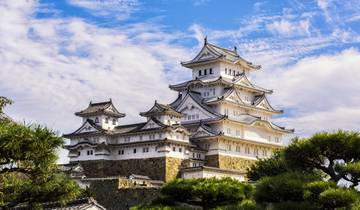
In-depth Cultural
Japan Golden Route with Hiroshima
"All tour members including tour leader friendly and made me feel welcomed. I would highly recommend this tour." Stephen, traveled in April 2023
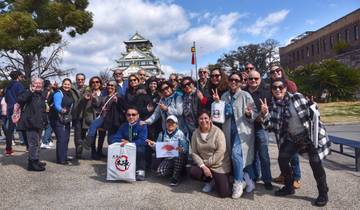
In-depth Cultural Family
8D Splendid Japan with Nagoya(private 3 star hotel rooms)
"Great trip around Japan in a week." James, traveled in April 2024

9D Splendid Japan with Nagoya (private 3 star hotel rooms)
"Price was affordable. Will recommend." Kyle, traveled in June 2024

In-depth Cultural Family Sightseeing Historical +2
Japan Discovery - 15 Days
"The itinerary of the tour was excellent, but sadly I caught Covid and missed the second week." Jeannette, traveled in April 2023

Explorer Historical
Japan Adventure
"Had an incredible experience. The incredible places in Japan." Alanna, traveled in June 2024

In-depth Cultural Active Explorer Christmas & New Year +2
Japan: Tokyo Nights & Kyoto Temples
"My expectations for the tour was exceeded. I had a really good time." Christa, traveled in June 2023
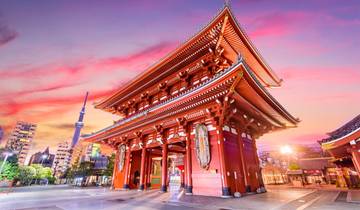
Explorer Family Historical Christmas & New Year +1
Essential Japan
"Itinerary was good, tour guides communication need improvement on volume since it was a big group." Anna, traveled in April 2024
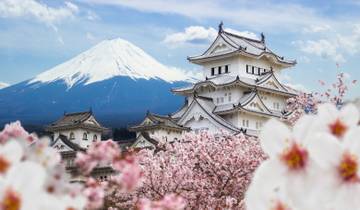
9 Days Splendid Japan Deluxe with Nagoya(4 star hotels)
"Hotel accommodation were outstanding. We liked everything about the tour including tour guide Haruto." Nina, traveled in June 2023

In-depth Cultural Family Explorer Coach / Bus Christmas & New Year +3
Wonders of Japan End Osaka
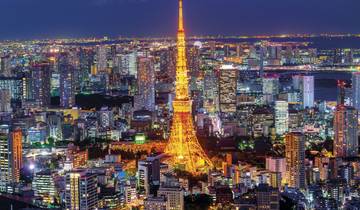
In-depth Cultural Family Explorer Historical Christmas & New Year +3
Tokyo, Kyoto and Hiroshima end Tokyo
"It was a great tour. My tour guides were very good." Kody, traveled in April 2023
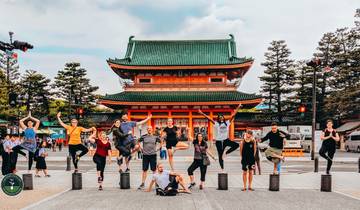
Explorer Sightseeing Historical +1
Japan One Life Adventures - 14 Days
"The tour was amazing and went to all the main sights in Japan. It was a great way to explore the country and see as much as possible in a short time." Sophie, traveled in June 2024
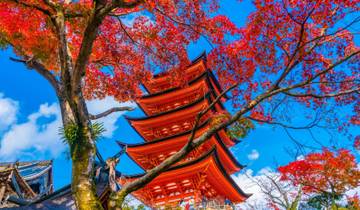
In-depth Cultural Family Explorer Coach / Bus Historical Christmas & New Year +4
South Japan Express
"The hotels were great, the food good, the stops interesting. Thanks for this great tour!" amanda, traveled in April 2023
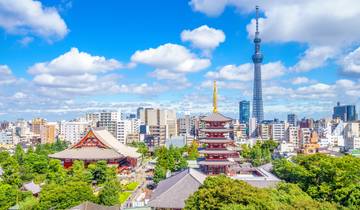
In-depth Cultural Active Family Historical Christmas & New Year +3
All Inclusive Japan Classics- 9 days
"It was a fantastic trip!" Konstantin, traveled in August 2023

In-depth Cultural Family Historical Christmas & New Year +2
Central Japan
"He was very friendly and helpful especially to our mom who is 88 years old. Thanks to him, she got the prompt treatment." haeyoung, traveled in July 2023
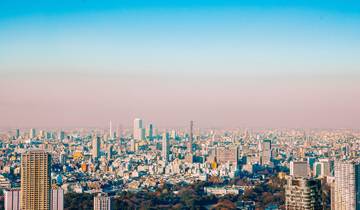
Food & Culinary Explorer Christmas & New Year +1
Japan Real Food Adventure
"The experience was fantastic and our group dynamic worked really well." Eric, traveled in March 2019
What people love about Fully Guided Tours in Japan
We had an amazing time on this tour. We visited so many places in such a short time. Our tour guide Yumi was friendly and fun, providing tips and helpful information along the way. Our bus driver Shingo was a great driver, manoeuvring his way through the traffic with ease. He was so much fun as well. The tour itself provided a diverse mix of activities and meals, as well as allowing some free time to explore. The hotels were of a good standard and size, always convenient to public transport.
The tour is perfect for a first time visitors to Japan with the best value you can find on the market. All hotels were equivalent of Holiday Inn or better with excellent services. The guide was knowledgable and the driver was experienced. Group size was kept at 24, which is perfect.
It was an amazing tour for the money I paid for. The hotels were comfortable and clean and better than we expected. The tour guide Jason was a lot of fun. The itinerary was perfect for first time visitors to Japan.
Regions in Japan
- Southern Japan (226)
- Central Japan (223)
- Honshu (221)
- Northern Japan (14)
- Mount Fuji (12)
- Kansai (10)
- Hokkaido (7)
- Shikoku (6)
Travel Styles
- Fully Guided
- Japan Travel Guide | All You Need to Know
- 2 Week (14 Days) Japan Travel Itineraries & Cost 2024/2025
- 1 Week (7 Day) Japan Travel Itineraries 2024/2025
- Best 3 Week (21 Days) Japan Travel Itineraries 2024/2025
- Discover the Best Japan Vacation Packages 2024/2025
- What is the best time to visit Japan in 2024/2025?
- Weather in Japan in 2024/2025
Discover TourRadar
- Kruger Park Safaris
- Sailing in Turkey
- Southern Ireland tours
- Training for Machu Picchu & How to Prepare (Updated )
- 10 Best Antarctica Tour Operators
- How to Plan the Ultimate USA Road Trip
- Camino de Santiago: Routes, Hiking & Distance
20 days, 19 nights
The following is a suggested itinerary for first time travelers to Japan who spend 20 days and 19 nights in Japan, and arrive/depart from Osaka 's Kansai Airport .
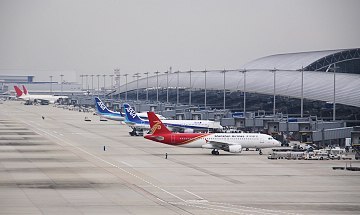
Regular train tickets will be cheaper than a Japan Rail Pass for this itinerary; however, travelers who do not mind paying extra for the convenience and flexibility of the pass' all-you-can-ride priviledge could consider using a 14-day Japan Rail Pass from day 7 to 20 or even a 21-day pass. Haruka 1-Way Tickets can be considered for access to/from the airport. Below are some sample budgets for the itinerary, excluding airfare. Find out more about the sample budgets and about the current yen exchange rates .
Questions? Ask in our forum .

20 Day Spectacular Japan And Kyushu
A portion of this tour runs as a group tour where you will be escorted by an expert tour leader. Another portion is self-guided, whether conducted by rail, cruise or land, and you will travel between destinations on your own, with free time to explore at your own pace.
This tour is conducted at a medium-fast pace. Some long travel days may be required to complete this itinerary and you will typically spend two nights at each destination, with some one night stays required. This trip includes a mix of sightseeing and free time to explore at your own pace. You will be required to move about unassisted, including getting on and off vehicles, walking up and down stairs and some activities will be conducted on uneven or steep terrain. You will be required to handle your own luggage.
Take advantage of our 7 day cooling-off period.
✓ Incredible sightseeing, including Japan’s beautiful shrines, gardens and temples, charming Shirakawa-go and Takayama Old Town, Kyoto’s ancient World Heritage Sites and Kyushu’s highlights including the Hells of Beppu ✓ 17 nights in comfortable 3-star accommodation ✓ 2 nights in traditional Japanese onsen ryokans ✓ Breakfast daily and 2 dinners ✓ Travel on the Shinkansen bullet train with your 7 day Japan Rail Pass ✓ Scenic cruise on Lake Ashi with spectacular views of Mount Fuji ✓ Escorted by a professional English-speaking tour guide (Day 1 to 14) ✓ Independent touring with local guides in Kyushu (Day 14 to 20) ✓ Comfortable, dedicated transportation throughout ✓ In-depth sightseeing and entrance fees as per the itinerary
✈ Needing international airfares to accompany your Inspiring Vacation? You will be able to access our flight portal after securing your package to add international airfares to your booking.
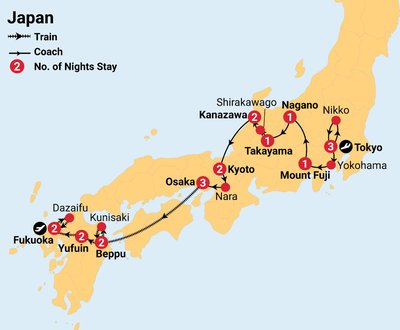
Travel with the experts for a carefully curated, value-packed discovery of the world's most iconic destinations. Our tours are bursting with must-see sights, rich experiences and quality inclusions, all at an unbeatable price. Bucket list dreams are ticked off on these all-encompassing journeys.
Day 1 Tokyo
Upon arrival into Tokyo, please make your own way to the starting point hotel.
Take the evening to relax after your flight and prepare for your first full day of touring tomorrow.
The easiest and most convenient way to travel from Haneda International Airport (HND) to Tokyo Central is by train or by monorail. The airport is also serviced by many 'Limousine Bus' services which offer shared shuttle bus service from around ¥1300 per person.
The best way to travel from Narita International Airport (NRT) to Tokyo Central is by the Narita Airport Express. The journey to most Tokyo stations takes approximately 1hr and the ticket costs ¥4070. The airport is also serviced by many 'Limousine Bus' services which offer shared shuttle buses from around ¥1300 per person. Airport transfers are not included. Our transfer portal offers the option to book your airport transfers for an easier arrival experience (additional charges apply). Access to this portal will be available through your Traveller Hub once your booking is confirmed.
Hotel Check-in:
Travellers will be arriving at various times throughout the day. If arriving prior to standard check-in time, which is generally 3pm local time, you are welcome to leave your luggage with hotel reception and explore your surroundings until check-in becomes available, as there are no scheduled activities on day 1 of the itinerary. The hotel may grant early check-in, however this is strictly subject to availability and at the hotel’s discretion.
Day 2 Tokyo
Our exploration of Tokyo begins with a visit to Asakusa Sensoji Temple – the oldest temple in Tokyo – famous for its huge hanging lantern at the Kaminarimon Gate (Thunder Gate). Then, we’ll explore the outer grounds of the Imperial Palace, the primary residence of the Emperor of Japan. Previously home to samurai warriors, it’s a sprawling complex with beautiful 17th century parks in the heart of the city. Built on the site of the old Edo Castle, it is surrounded by a large park, moats and massive stone walls. Come cherry blossom season, it is blanketed in a sea of pink blooms.
There is arguably no better place in Tokyo to have a fresh sushi breakfast or lunch than at the Tsukiji Outer Market. At the market, you can find processed and fresh seafood, along with culinary-related items such as specialty knives.
No trip to Tokyo is complete with a visit to the famous Shibuya Crossing – the famed icon of the district alongside the Hachiko statue.
Day 3 Tokyo Nikko Tokyo
We’ll leave Tokyo this morning after breakfast and head north to Nikko, one of Japan’s most famous mountain towns.
We’ll visit the Nikko Toshogu Shrine. Enclosed in dense forest and hailed as Japan’s most lavish shrine, it’s the final resting place of shogun Tokugawa Ieyasu. Most of the shrine complex was rebuilt in the 17th century and listed as a UNESCO World Heritage Site in 1999.
Whilst in Nikko, we visit Kinu-Tateiwa Otsuribashi and Oya History Museum, which is a museum built inside a former stone quarry. The caverns are from the Edo Period to mine Oya Stone, a soft but durable volcanic stone.
Day 4 Tokyo Yokohama Mount Fuji
Leaving Tokyo this morning we head to the national park region of Hakone. On the way we explore the Yokohama Red Brick Warehouse, a building complex that was erected a century ago as a customs house for Yokohama Port. Requisitioned by the US military after World War II, the buildings were repurposed as a cultural centre and shopping complex in 2002.
Enjoy a boat trip across the serene Ashinoko Lake, followed by taking a cable car up the mountains to the sulphur vents of Owakudani. You’ll have spectacular views, and on a clear day, you can catch a glimpse of nearby Mount Fuji.
Day 5 Mount Fuji Nagano
We’ll head to Kawaguchiko today, about a two-hour drive. Lake Kawaguchiko is the most accessible of the Fuji Five Lakes; popular sightseeing spots each offering an astonishing view of dramatic, iconic Mount Fuji. This is a great place to get back to nature.
Here we’ll visit Mountt Fuji 5th station to hopefully view the divine mountain before visiting Oishi Park on the north side of the lake. If you’re here in spring, seeing the cherry blossoms with Japan’s most famous mountain in the background really is an experience. This lake is also home to a cherry blossom festival held during the season, one of the most popular in the country. There are about 300 cherry trees on the northern shore, stretching for about a kilometre.
You’ll see the lakeside trail along the eastern shore of the lake that boasts many weeping cherry trees. There will be time for lunch.
Continue onto Nagano for the night, home of the 1998 Winter Olympics.
Day 6 Nagano Takayama
After breakfast, we will head to Hokusai Museum to discover the great artworks of Katsuhika Hokusai (1760-1849), one of Japan's leading Edo period ukiyo-e painters.
We’ll drive to the traditional city of Takayama today, still home to many Edo-period buildings.
For a taste of authentic, old Japan, we’ll enjoy a tour of Takayama old town, nestled in the Hida mountains. This city still retains a traditional feel, especially in its beautifully preserved old town (Sanmachi Suji). Here you’ll find quaint, old latticed wooden buildings and Sannomachi Street, with pretty homes, restaurants and sake breweries. We’ll see the Takayama Jin’ya, the former government headquarters under the Tokugawa Shogunate from 1692-1871.
Day 7 Takayama Shirakawa-gō Kanazawa
After breakfast we’ll travel to Shirakawa-gō Village, a UNESCO World Heritage Site that has more than 100 'Gassho-style' houses, which feature steeply-pitched roofs. Built many hundreds of years ago, these historic houses stand together in a beautiful natural setting. From the site’s observation deck you can enjoy a panoramic view of this unique village, its thatched-roof houses sitting among gorgeous mountain scenery.
Day 8 Kanazawa
Today we will explore the castle town of Kanazawa. First up is a visit to Omicho Market, where you can try some local favourites, such as fresh seafood and gold leaf ice cream.
Next, we visit Kenrokuen Garden. This is one of Japan's three best landscape gardens, and is considered the most beautiful of them all.
Finish up your day by taking a stroll down the streets of Higashi Chaya, a geisha district in Kanazawa known for its quaint old buildings and teahouses.
Day 9 Kanazawa Kyoto
Echizen Washi Village is located in the Imadate area, it is steeped in paper-washi making history dating back 1500 years. ‘Washi’ is a traditional Japanese paper.
There are over 60 paper mills in Echizen which you will be able to walk around and visit whilst here.
After your visit, we will continue to Kyoto.
Day 10 Kyoto
Today we’ll visit some of Kyoto’s most iconic sites, like the Kinkakuji (Golden Pavilion). This is a Zen temple and UNESCO World Heritage Site, with two floors covered entirely in thin layers of pure gold, set within a beautiful classical Zen garden.
Afterwards, we continue to the Arashiyama Bamboo Grove for an enchanting walk through the towering bamboo forest.
This afternoon is spent at your leisure – perhaps selecting one of the optional activities on offer in Kyoto.
Learn the secrets of Sado, the Japanese tea ceremony, from a qualified tea instructor.
Tea Ceremony The Japanese tea ceremony (known as sado or chado in Japanese) is a Japanese tradition that has become an art form. More than just about preparing and drinking tea, it is a formal way for a guest to enjoy a host's hospitality, far removed from the hustle and bustle of everyday life.
Itinerary Today enjoy your tea ceremony experience in the heart of Kyoto. Make your own way to the venue and enjoy this unique traditional Japanese experience.
The Japanese tea ceremony is a traditional ritual influenced by the principles of Zen Buddhism in which powdered green tea, or matcha, is prepared and served by a host in a quiet setting.
Enjoy tasting traditional Japanese confectionary with your green tea.
Start time: approx 3:00pm.
- Traditional Japanese Tea Ceremony
- Qualified tea instructor
- Taste Japanese traditional confectionary
- Transportation to the activity is not included and must be self-arranged
- Personal expenses and anything not stated
Kimonos are a traditional Japanese garment that were first introduced in Japan in the Heian period. You will be able to rent a Kimono and walk around the traditional streets of Kyoto to take iconic photos. Your guide will be able to provide you with directions to the venue.
Start time: approx 2:00pm. Duration: 45mins to 1 hour
Day 11 Kyoto Nara Osaka
After breakfast we’ll leave for a day tour of some of Japan’s icons before continuing onto historic Nara, ancient capital of Japan.
Our first stop in Kyoto is Fushimi Inari Taisha, one of the most iconic sights in Japan with its thousands of red Shinto shrine gates. We spend time here strolling through the gates and visiting the various shrines and temples.
No trip to Japan is complete without sampling the local tipple – sake. An expert will take you through the distilling process, flavours, styles and history of the beverage, before you will be able to sample some for yourself.
Next, we’ll visit Todaiji Temple, one of the oldest Buddhist temples in Japan and home to the country’s largest Buddha statue. We’ll then see Kasuga Shrine, featuring over 3000 stone and bronze lanterns.
Our last stop is at Nara Park, one of the oldest parks in Japan, to see over one thousand tame deer roaming freely in this vast, tranquil space.
The day will conclude, overnighting in Osaka.
Day 12 Osaka
Today is all about visiting one of Japan’s most famous landmarks, Osaka Castle.
Built in 1583 as a centre of a new, unified Japan, Osaka Castle is a wonderfully preserved example of Japanese architecture. We then continue to our centrally-located hotel in Osaka for a night at leisure.
You may wish to head out to experience the famous Osaka nightlife in the Dōtonbori area – one of the city's most popular tourist destinations, Dōtonbori Street runs parallel to the eponymous canal. It’s a popular shopping and entertainment district and an area famed for its street food and plentiful restaurants. At night the streets here are illuminated by hundreds of colourful neon lights and mechanised signs, including the famous running Glico Man sign and the Kani Doraku crab sign.
Day 13 Osaka
Today is spent at your leisure.
There are two optional activities which you can participate in, otherwise, feel free to pick your Tour Leader’s brain for some alternative ideas around/in the city:
Explore old backstreets, markets, and retail areas seldom seen by most tourists; discover the New York-inspired neighbourhood of Shinsekai and see what ghosts still linger in the streets. Wander through the flashy, glittering, famed district of Dotonbori and sample famous Osaka treats like kushi-katsu and takoyaki octopus balls; plus find out why Osaka is considered the heart and soul of the Kansai region. Start time: 5pm Finishing time: approx 8.30pm (This tour cannot operate on the same day as Hiroshima Day Tour. If you are wanting to do both tours, the Osaka Food Tour will operate the evening prior.)
Ride the shinkansen bullet train to Hiroshima today. On arrival, join your guide on a visit to the Hiroshima Peace Memorial Park and the Atomic Bomb Dome, before taking a cruise to Itsukushima Shrine on Miyajima Island, best known for its floating torii gate. Afterwards, return to Osaka via bullet train. Start time: 9am Finishing time: approx 8pm (This tour cannot operate on the same day as Osaka Food Tour. If you are wanting to do both tours, the Osaka Food Tour will operate the evening prior.)
Day 14 Osaka Beppu
This morning, make your own way to Osaka train station to board your bullet train to Beppu. On arrival in Beppu, make your own way to your centrally located hotel. The rest of the day is at your leisure to explore the local area or relax in your hotel.
Please note: The rest of the tour is unescorted. You will be met by local guides for your included sightseeing and provided with detailed itinerary instructions with your documentation.
Day 15 Beppu Kunisaki Beppu
After breakfast, you will be met by your local guide for a guided day tour of Kunisaki. Visit Usa Jingu, a famous Shinto shrine dedicated to Hachiman, the god of war. Then, visit Fukiji, a beautiful temple with a unique thatched roof and serene surroundings. Next, Maki Odo, another temple, is known for its ancient stone Buddha statues and historic architecture. Visit Kumano Magaibutsu, a Buddhist temple with large carvings of Buddha and other deities set into the rock face. Finally, visit Futagoji, a temple with stunning views over the surrounding countryside. Return to Beppu in the afternoon for time at leisure.
Day 16 Beppu Yufuin
Start the day with a half-day guided tour of Beppu, including a visit to the famous "Hells of Beppu," a group of geothermal hot springs and bubbling mud pools. You might like to try some Jigoku Mushi, a traditional way of cooking using the heat from the hot springs. In the afternoon, take a 1.5-hour train ride to Yufuin. Check into your traditional ryokan, the Yufuin Iyotomi, and enjoy dinner at the hotel. This evening, you might wish to experience the onsen at your ryokan.
Day 17 Yufuin
Spend the day at your leisure in Yufuin, a charming town known for its hot springs and beautiful scenery. You may want to consider an optional half-day tour of the town, which includes a visit to Lake Kinrin, a picturesque lake with a natural hot spring, and a local craft village. Alternatively, try a rickshaw tour of the town. In the evening, enjoy another traditional Japanese meal at your ryokan.
Day 18 Yufuin Fukuoka
After breakfast, take a 2.5-hour train ride to Fukuoka. Check into your hotel and spend the rest of the day at your leisure exploring the city or relaxing in your hotel. Fukuoka, Kyushu’s largest city, is a haven for food-lovers and the Hakata ramen is a dish not to be missed. Fukuoka is a laid-back and friendly city and is easy to explore with your Japan Rail pass.
Day 19 Fukuoka Dazaifu Fukuoka
Enjoy a guided day tour of Dazaifu, a historic town just outside Fukuoka. Visit Dazaifu Tenmangu, a famous Shinto shrine dedicated to the god of learning and scholarship, and the nearby Kyushu National Museum, which showcases the history and culture of the region. After Dazaifu, embark on a river cruise on the Yanagawa River, where you can enjoy a boat trip accompanied by the Funauta boatman's song, while taking in the beautiful scenery of each season.
Your return train ticket to Dazaifu is included.
Back in Fukuoka, spend your last evening in Japan at leisure. We recommend dining at a yatai, temporary restaurants that spring up and serve all kinds of delicious and inexpensive food options.
Day 20 Fukuoka
Today marks the end of your incredible tour through Japan. At the appropriate time, make your own way to Fukuoka Airport or your next destination using your Japan Rail Pass.
Airport transfers are not included. Our transfer portal offers the option to book your airport transfers for an easier arrival experience (additional charges apply). Access to this portal will be available through your Traveller Hub once your booking is confirmed.
What’s Included
- Incredible sightseeing, including Japan’s beautiful shrines, gardens and temples, charming Shirakawa-go and Takayama Old Town, Kyoto’s ancient World Heritage Sites and Kyushu’s highlights including the Hells of Beppu
- 17 nights in comfortable 3-star accommodation
- 2 nights in traditional Japanese onsen ryokans
- Breakfast daily and 2 dinners
- Travel on the shinkansen bullet train with your 7 Day Japan Rail Pass
- Scenic cruise on Lake Ashi with spectacular views of Mount Fuji
- Escorted by a professional English-speaking tour guide (Day 1 to 14)
- Independent touring with local guides in Kyushu (Day 14 to 20)
- Comfortable, dedicated transportation throughout
- In-depth sightseeing and entrance fees as per the itinerary
Sightseeing Highlights
- Tokyo – Enjoy the buzz and energy of one of the world’s great cities
- Tokyo – Visit Tsukiji Outer Market, a haven for foodies
- Tokyo – Visit Asakusa Sensoji temple – the oldest temple in Tokyo – famous for its huge hanging lantern at the Kaminarimon gate (Thunder Gate)
- Tokyo – Join the scramble across Shibuya Crossing, the world’s busiest pedestrian crossing
- Hakone – Cruise serene Lake Ashi with views of Mt Fuji
- Nikko – Marvel at UNESCO World Heritage Sites including Toshogu Shrine
- Nikko – Walk across the Kinu-Tateiwa Otsuribashi suspension bridge
- Nikko – Visit the underground Oya History Museum, housed in a massive former stone quarry
- Yokohama – Spend time wandering the shops and restaurants at the Yokohama Red Brick Warehouse
- Mount Fuji – Savour the views from halfway up this iconic mountain at the 5th Station (weather permitting)
- Nagano – Discover the works of one of Japan’s most revered artists at the Hokusai Museum
- Takayama – Experience the rustic charm of this quaint city with a walk through its beautifully preserved old town
- Shirakawa-go – Admire more than 100 traditional thatched houses in this historical alpine village
- Kanazawa – Visit celebrated Kenrokuen Garden, ranked as one of Japan’s top three gardens
- Kanazawa – Step back in time in the Higashi Chaya district, where geisha still live and perform today
- Kyoto – See this ancient capital’s most famous temples and shrines – Kinkakuji (Golden Pavilion) and Fushimi Inari
- Kyoto – Revel in the lush, peaceful green splendour of Arashiyama Bamboo Grove
- Kyoto – Enjoy a sake tasting in one of Japan’s premier sake producing regions
- Nara – Wander through Nara Park with over 1,200 freely roaming Sika deer
- Nara – Discover Todaiji Temple and its great Buddha
- Osaka – Visit the expansive grounds of Osaka Castle, a grand monument of feudal Japan
- Osaka – Stroll through the lively, colourful Dōtonbori area
- Beppu – Tour the Hells of Beppu, a stunning series of hot springs and bubbling mud pools
- Kunisaki – Explore the Kunisaki Peninsula’s stunning natural scenery and historic temples
- Dazaifu – Discover the history of Kyushu during your half-day guided tour
- Fukuoka – Spend time at leisure in this laid-back city famous for its culinary scene
Payment Terms
Secure your trip with a $99.00 deposit per person. Once we receive your deposit, we will send you an invoice with your remaining balance and payment options. Instalment Schedule:
- At the time of booking pay a $99.00 deposit per person.
- Pay a 1st installment of $566.00 per person within 28 days.
- Pay a 2nd installment of $1,132.00 per person within 90 days.
- You will then be invoiced for final payment 120 days prior to departure.
Visa & Passport
It is the traveller's responsibility to ensure they have a valid passport. The passport must be valid for a minimum of six months from the intended date of return. Visas may be required for your destination. For further visa information, click here .
Flight Information & Booking Options
This is a land only package.
This package does not include international airfares. If you would like to add airfares to your booking our flight portal will be available via your Traveller Hub. The flight portal will allow you to search for all available airfares to your destination. The function works like most general flight search engines allowing you to select your preferred airline, book different cabin classes (eg. Business class) and view flight durations and transit times to your destination.
The flight portal will be available via your Traveller Hub once the following criteria has been met:
- Your booking is confirmed
- Your departure date is within 11 months
- You have completed your passenger detail form
Visit our Flight Hub for more information on terms and conditions, amending your flights and information on luggage allowances.
Important Information
Fitness Requirements While the tour itinerary should give you some guidance and overview to the expected requirements, to determine if this tour is right for you we categorise each of our tours in terms of their intensity. These guidelines are to ensure that each tour group is conducted as expected and to ensure the overall satisfaction of all Inspiring Vacations customers.
As a general rule, porterage is not included, therefore at all times you are expected to handle your own luggage where help may not be available.
This particular tour is categorised as a”3”
Moderate Tour : A good level of fitness and mobility is required, as this tour includes a moderate level of physical activity and is considered a medium-fast paced tour. You should be able to walk up and down stairs, get on and off the coach and able to walk reasonable distances of approximately 2 kilometres per day or more with ease. Any physical ailments you may have must be disclosed at the time of booking to determine your suitability. If you have any form of walking aids, other than a walking stick or hiking poles, then this tour is not suitable.
Tipping A friendly reminder that tipping is not included in your package. While tipping is not customary, it's of great significance to the people who will take care of you during your travels, inspires excellent service, and is an entrenched feature of the tourism industry across many destinations. You may also consider tipping your tour leader and driver for outstanding service throughout your trip. Suggested amount for your guide, 500Y per person per day. Remember, a tip is not compulsory and should only be given when you receive excellent service.
Accommodation The accommodation listed is subject to change. Any changes will be of an equal or higher standard. Bedding configurations (double or twin) are requests only. All efforts will be made to meet your preferences, however, any changes are beyond our control.
Twin Share Bedding Configuration At any time, bedding configuration is subject to confirmation by the hotel and based on availability. While you have the option to select either twin or double bedding at time of booking, our recommendation when travelling to Japan is to choose twin bedding, as the rooms are often bigger than those that have a double bed. If insisting on double bedding, please note that the rooms will be smaller and more narrow. As a general expectation, we cannot always guarantee bedding at all hotel stays.
Single Supplement Single supplement is $1,533.00 per person, in addition to the twin-share price.
Please note when choosing Single Supplement for this deal that you will receive a single room, which is smaller in size than a twin/double room. Unfortunately this is typical for Japan, as the cost to solely occupy a double/twin size room is incredibly high. We appreciate your understanding.
Triple Share Not available.
Travel Insurance Travel insurance is compulsory for this tour to protect yourself against the unexpected. In addition to the support that a policy may provide, you may be asked to present a copy of your travel insurance documentation while traveling.
Group Size 20-40 people
Children Children must be 5 years old or above and share a room with parents at all times. Children are charged the same price as adults.
Tour Style To meet the needs of various types of travelers, we choose to operate various types of tours, and depending on your selected package will mean different services are provided throughout your trip. The following descriptions of each tour style we hope will ensure that each traveller has appropriate expectations before they start their travels:
- Partially Escorted - A portion of these packages runs as a group tour where you will be escorted by an expert tour leader. Another portion is independent, whether conducted by rail, cruise or land, and you will travel between destinations on your own, with free time to explore at your own pace.
Cherry Blossoms Please note: cherry blossoms are weather dependent and it is not guaranteed that they will be in bloom at the time of your arrival.
Health & Mobility Requirements
All participants must be in good physical condition to fully engage in this journey. For the safety and welfare of yourself and fellow travellers, if you are feeling unwell prior to departure, we advise staying home and contacting us to arrange alternate plans.
Prior to selecting your trip, carefully review the itinerary to assess your ability to comfortably manage our travel style. Please be aware that if, based on evaluation by our leader or local representative, a participant is deemed unable to safely complete the itinerary, we retain the right to exclude them from all or part of the trip without reimbursement.
It is advisable to consult your physician for current medical travel advisories and any required vaccinations before embarking. We recommend carrying a first aid kit and any necessary medications in their original packaging, as they may not be readily available during travel. For those carrying medication, it's essential to check your government's foreign travel guidelines for local restrictions or regulations.
Optional Tours
To enhance your journey, we are offering guests a choice of the following optional activities (prices are per person):
- Kyoto Tea Ceremony (Day 10) - $77 per person
- Kimono Fitting - Kyoto (Day 10) - $128 per person
- Osaka Food Tour (Day 13) - $119 per person
- Hiroshima Day Tour (Day 13) - $417 per person
Optional tours can be selected once you have finalised your tour purchase and paid your deposit. When completing your Passenger Booking Form, you will be asked if you would like to add Optional Tours, where any applicable cost will be added to your final balance. If you choose not to select them at this time, you can choose to add them later by logging in to your Account online.
Please note that you must select your Optional Tours no later than 70 days before departure, after which you will be required to purchase them on tour. Please keep in mind that anything purchased on-tour is subject to availability and prices may vary as you will be paying in local currency. We appreciate your understanding.
Please note that transportation to and from each optional tour is not included in the price. You will be required to make your own way to the starting point of the optional tour, as well as back to your hotel. Your tour guide can provide you with the direction and guidance needed to make your own way.
Pre and Post-Tour Accommodation & Extra Services
You can enhance your holiday by arriving or departing before or after the tour. On this tour you can choose from the following options:
Pre Tour Accommodation
- $204.00 per room, per night for double and twin share
- $341.00 per room, per night for solo travellers
Post Tour Accommodation
Please select the number of extra nights required in the 'Additional Nights Accommodation' field when making your purchase. The additional cost for these arrangements will be added to your final payment invoice and are subject to availability.
- International airfares
- Airport Transfers
- Travel insurance (compulsory)
- Optional activities
- Personal expenses
- Anything not mentioned in the itinerary
What Climate To Expect
Click HERE for more information on weather in Japan
You might also like
13 day cherry blossoms of japan, 14 day japan winter wonderland small group tour, experiences.
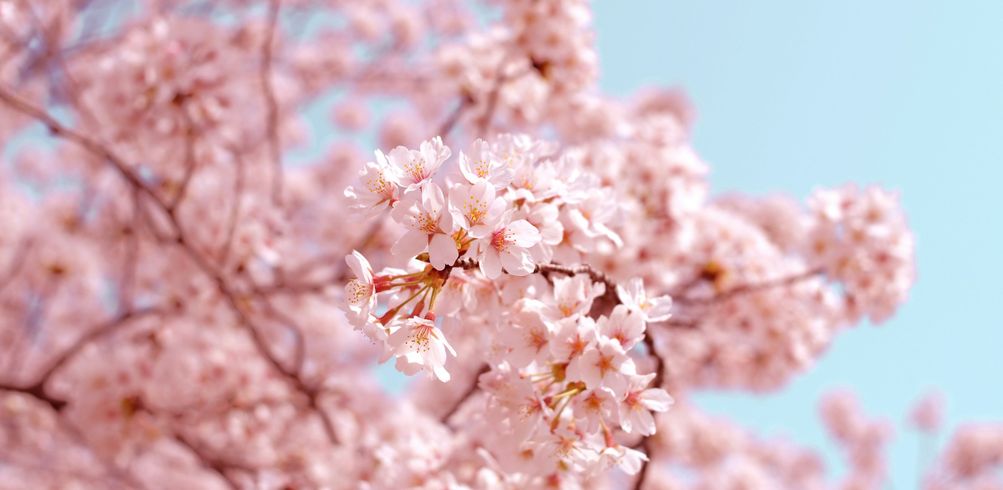
Five of the Best: Tokyo parks to see cherry blossoms

Customers on Tour: Nicole and Charlie on Inspiring Japan
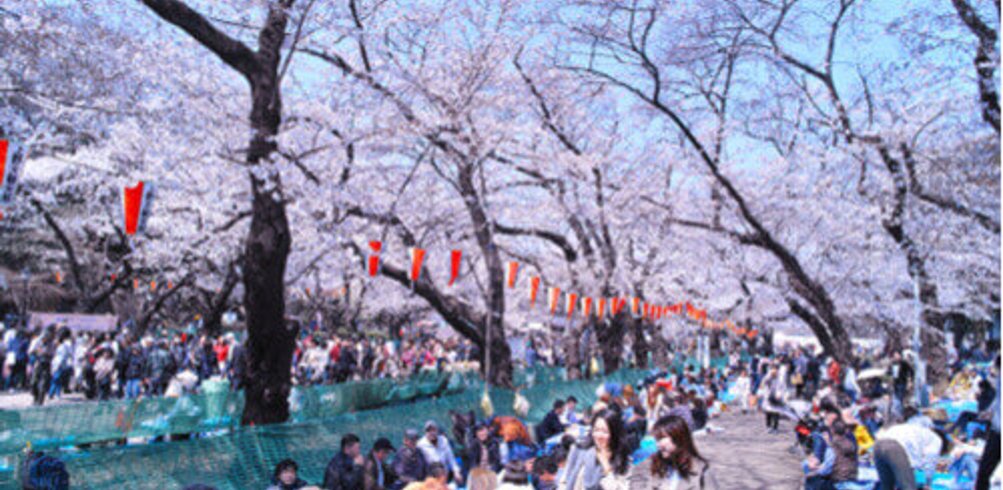
Customers on Tour: Unforgettable Japan
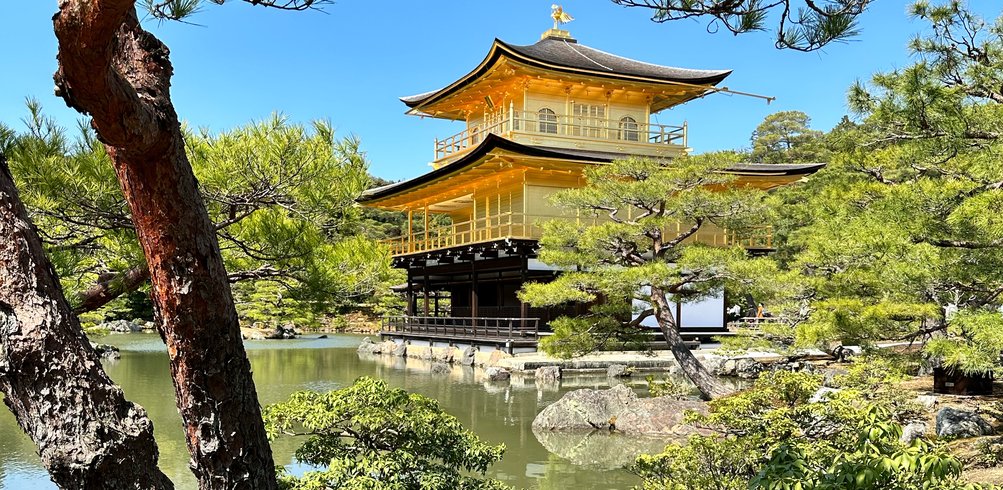
Customers on Tour: Rebecca and Leanne on Inspiring Japan
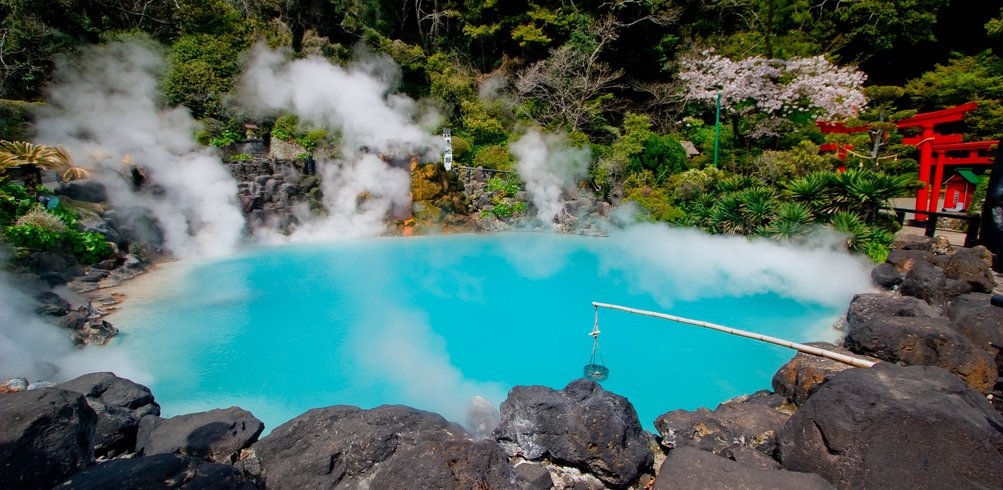
Spotlight: Oita
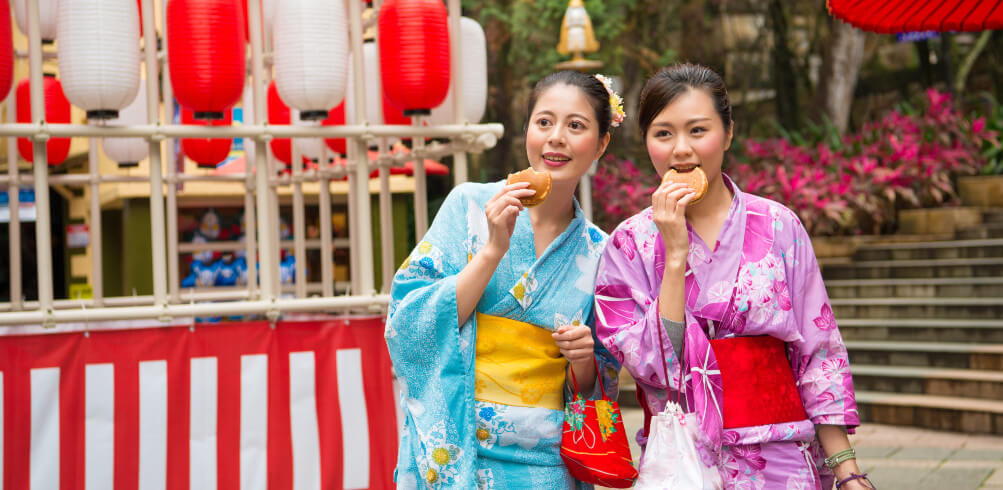
Know Before You Go: Japan
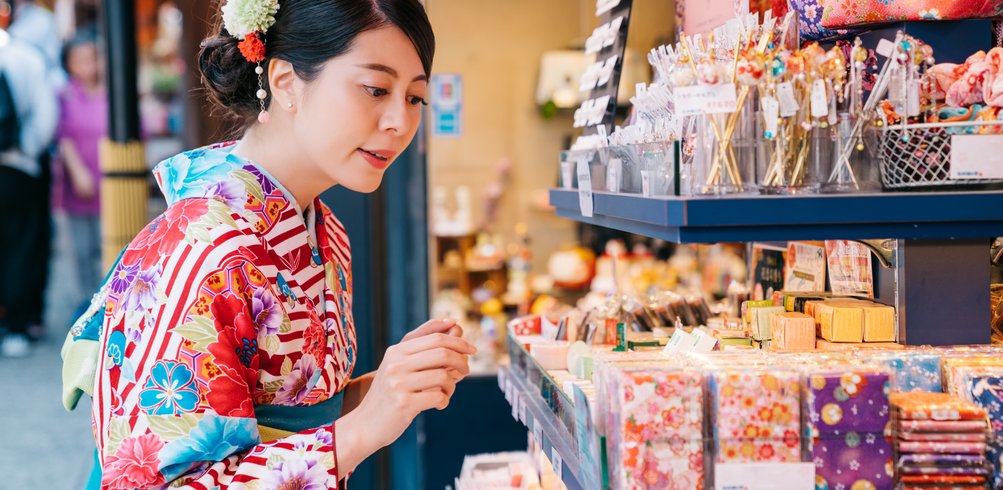
How to spend a free afternoon in Kyoto
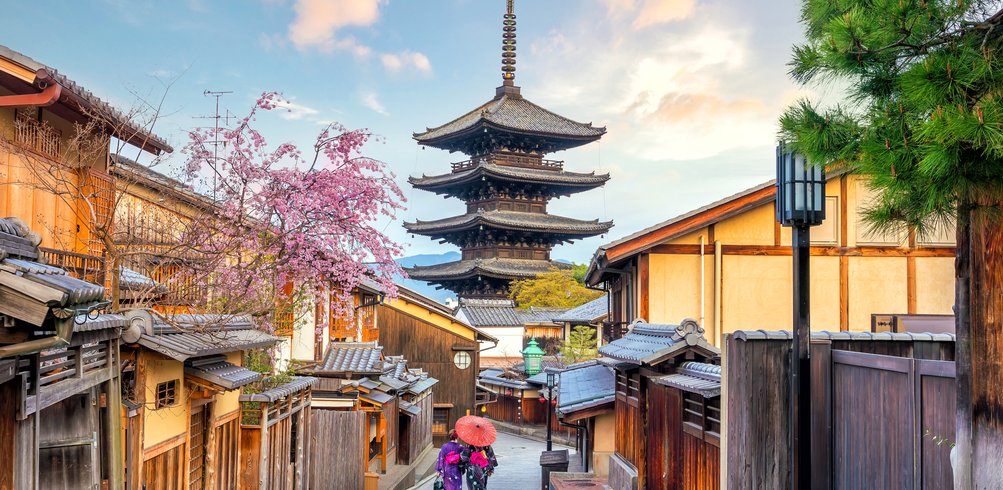
Staff On Tour: Japan

Customers On Tour: Unforgettable Japan
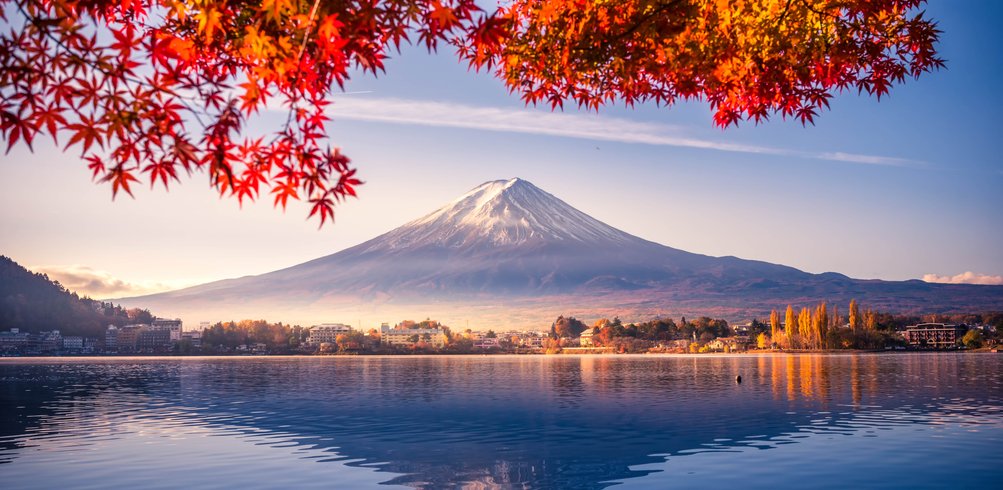
Best places to see Mount Fuji
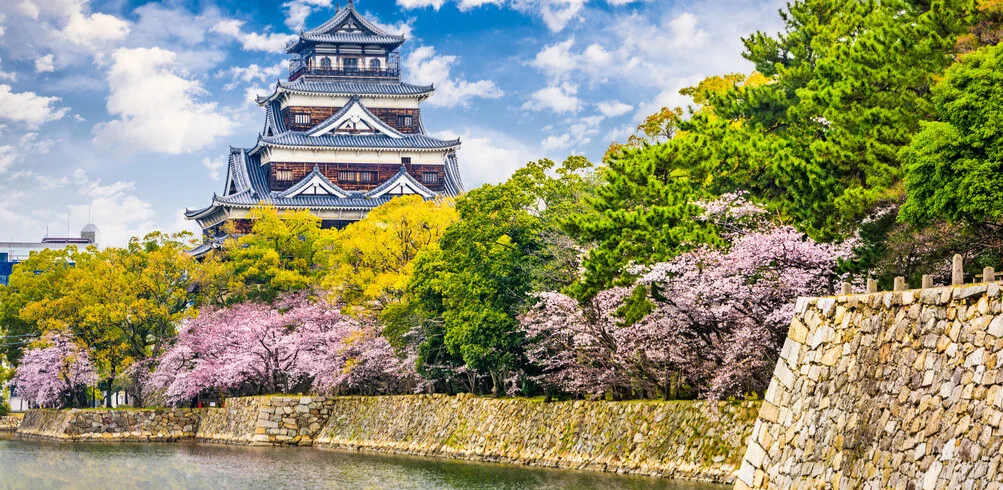
Snapshot: Hiroshima
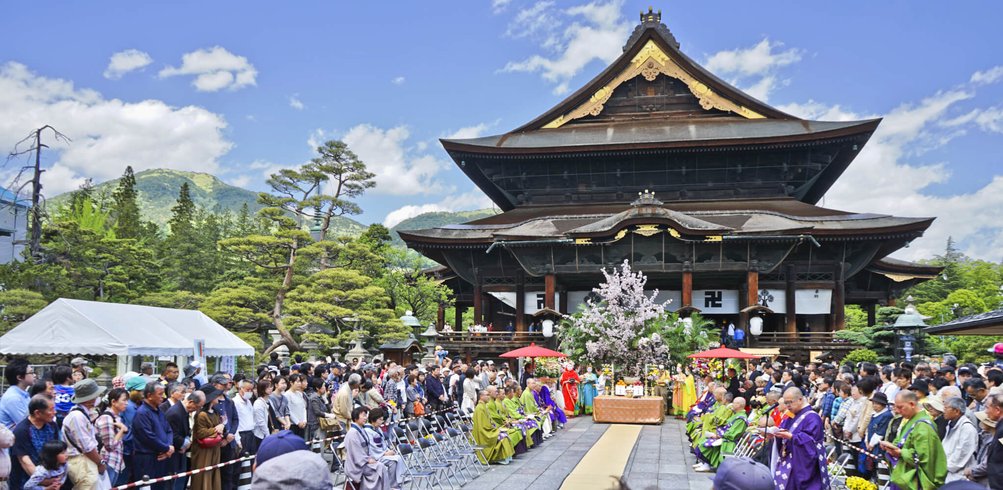
Snapshot: Nagano
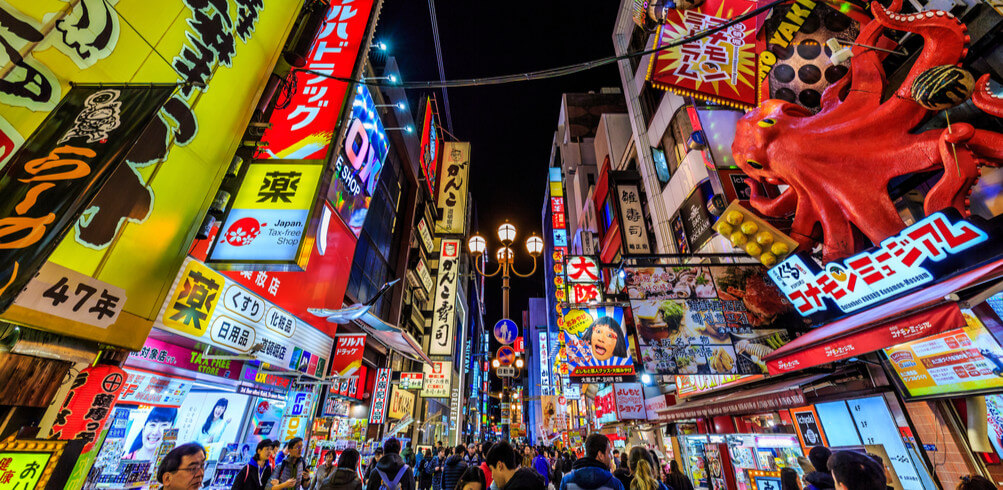
Snapshot: Osaka
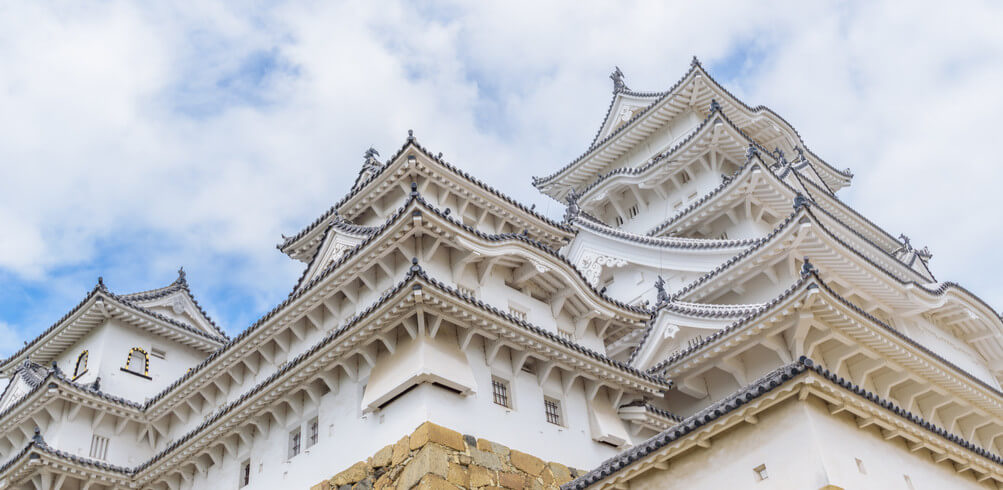
Snapshot: Himeji Castle
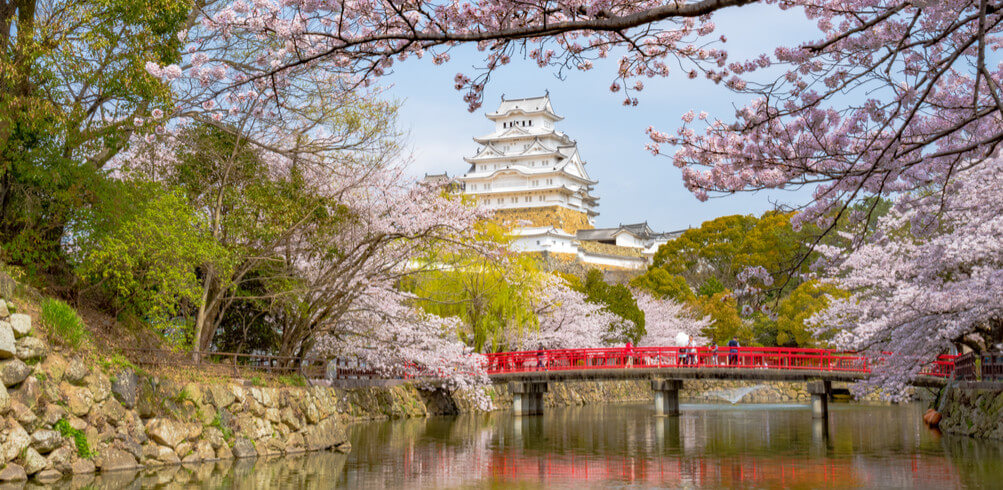
Five of the Best: Japanese castles

Snapshot: Kushiro
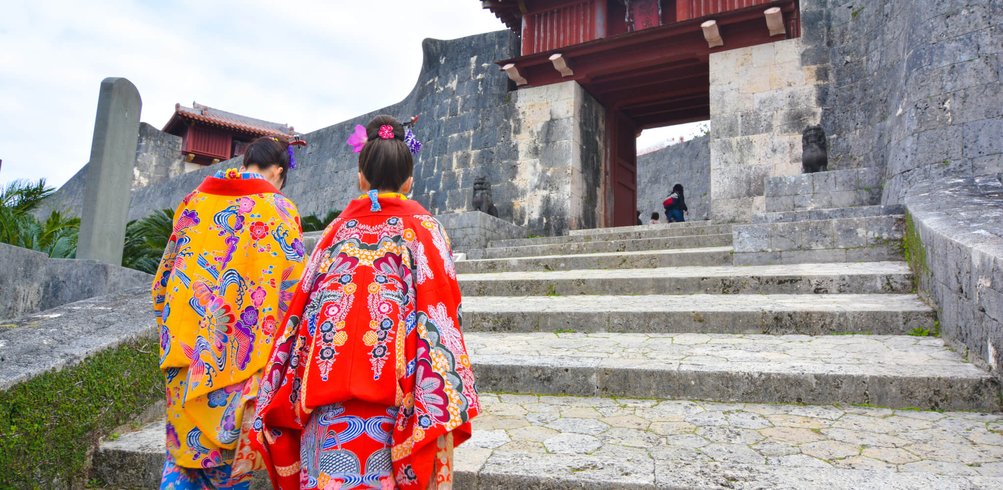
Snapshot: Okinawa Islands
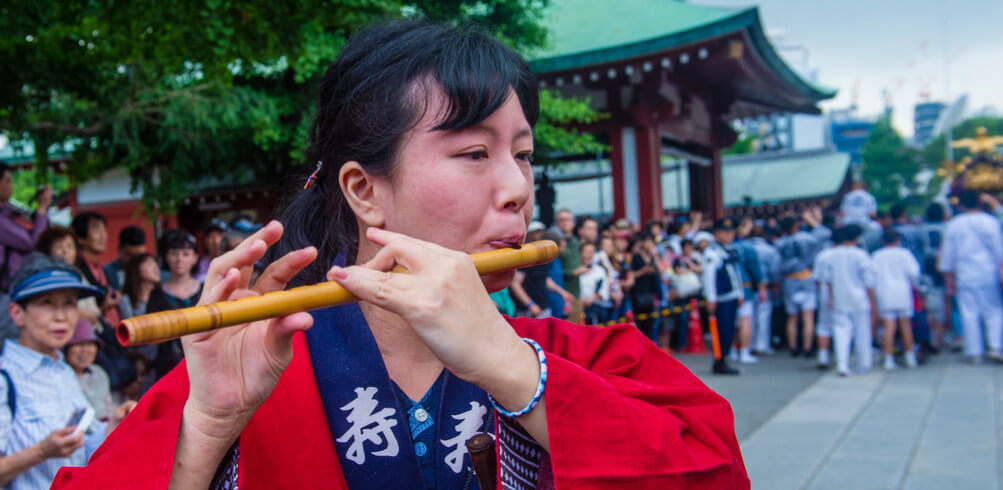
Snapshot: Kanda Matsuri
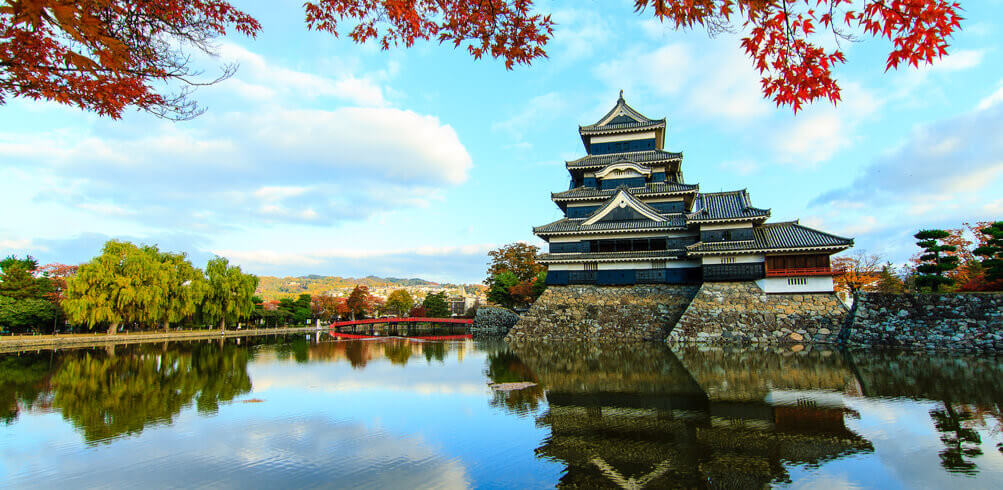
Snapshot: Scenic Central Honshu
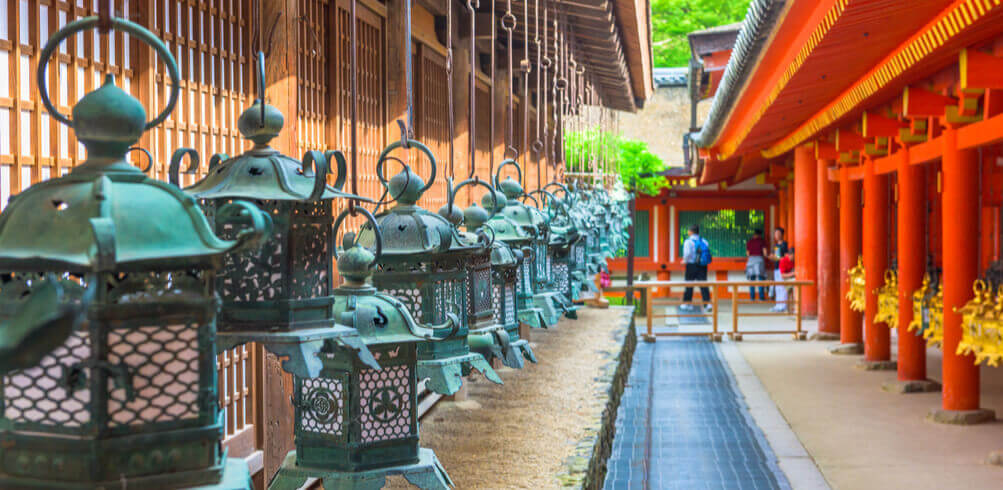
Snapshot: Nara
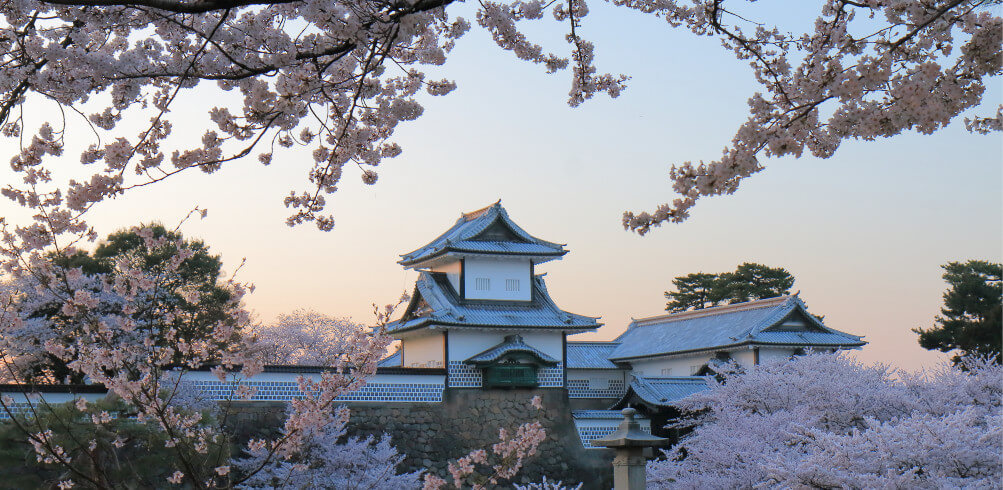
Snapshot: Kanazawa and Shirakawa-go

Snapshot: Fushimi Inari
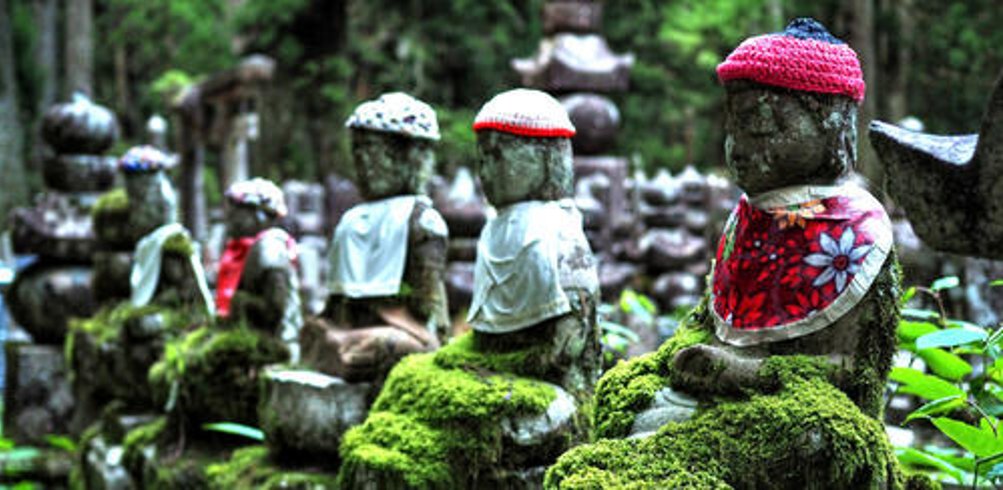
Snapshot: Mount Koya
Five of the best: japanese desserts.
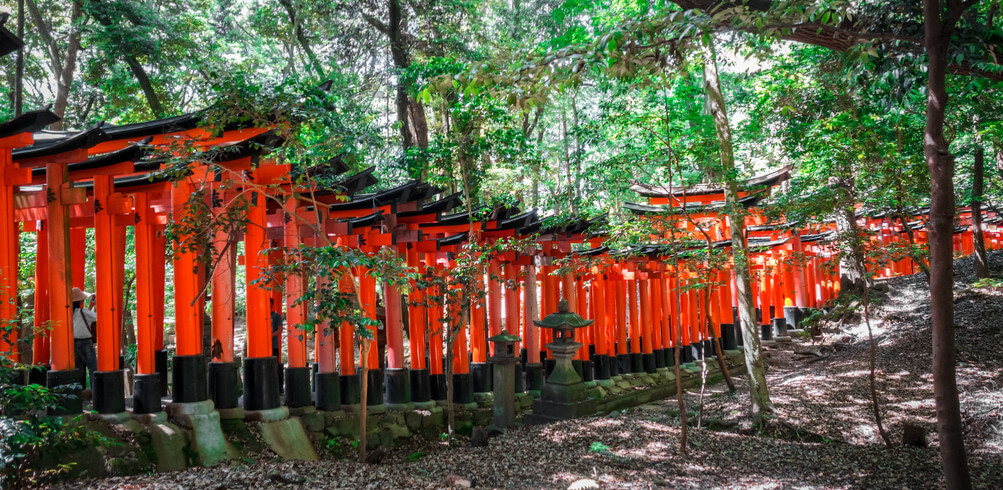
Snapshot: Kyoto

Five of the Best: Tokyo’s top sights
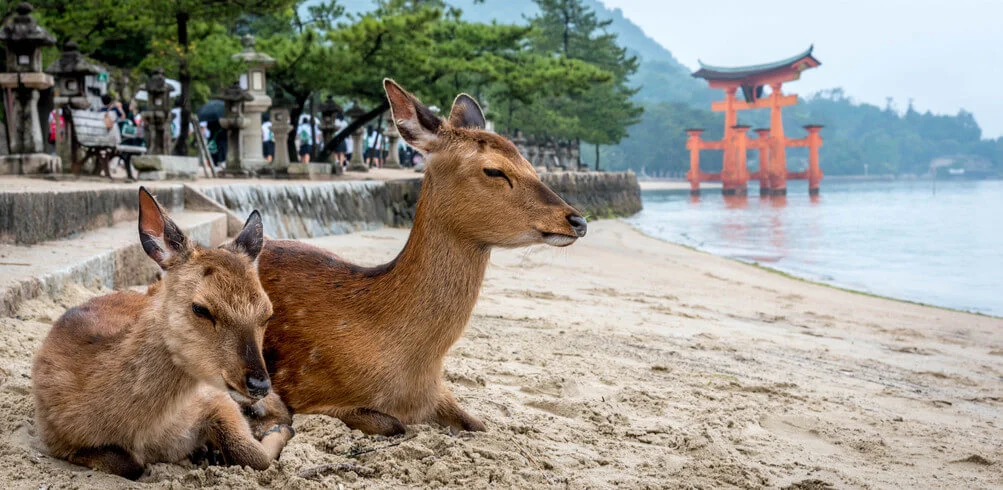
Snapshot: Miyajima Island

Snapshot: Tokyo

Snapshot: Nagasaki
Latest insights.
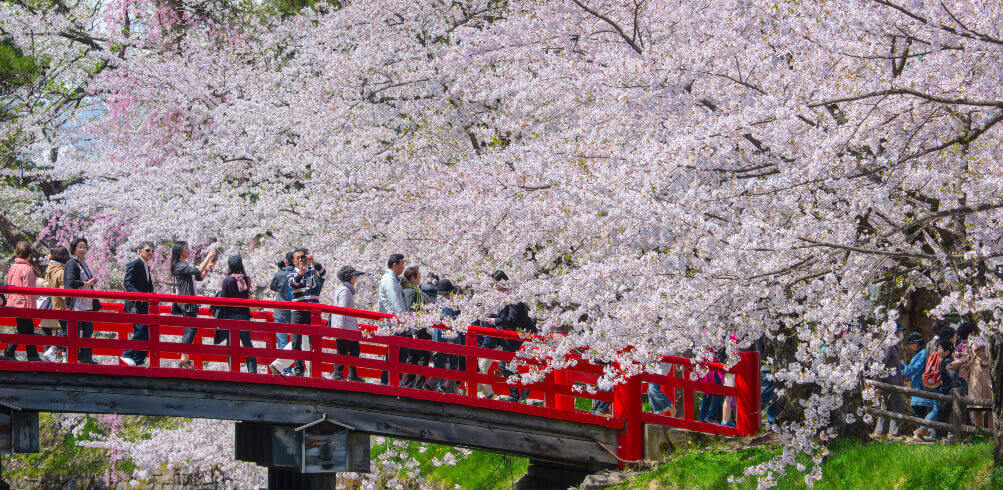
Everything you need to know about: Hanami
19 Mar 2024
The act of viewing flowers in bloom is a sacred Japanese past time that dates back centuries What is hanami? The term hanami is a combination of two words: hana meaning flowers and mi meaning viewing. While it sounds like a vague expression, the term has become synonymous with the annual flowering of cherry blossom t...

Guide to cherry blossom season in Japan
From March to April every year, millions head to Japan to see their famed cherry trees shower the landscape in pink and white petals The annual blooming of sakura (cherry blossom) trees in Japan is a sacred occurrence that has been celebrated for over 1,000 years. While its origins are somewhat disputed, with some so...

Blooming beauties: a seasonal guide to Japan’s flowers
From cherry blossoms to sunflowers and hydrangeas, Japan is a country in bloom The change of the seasons and the floral displays they bring are celebrated across Japan. From the keenly anticipated cherry and plum blossoms to the cheery sunflower, flowers hold a special place in Japanese society. There is even an anci...

15 places to see Japan's autumn leaves
17 Aug 2023
Where to experience the prettiest landscapes in Japan during the autumn foliage season Japan might be all about cherry blossom season, but once September hits, summer is farewelled and the focus shifts towards welcoming autumn and koyo zensen or tracking the progress of the leaves turning red. Much like the pink bloomi...
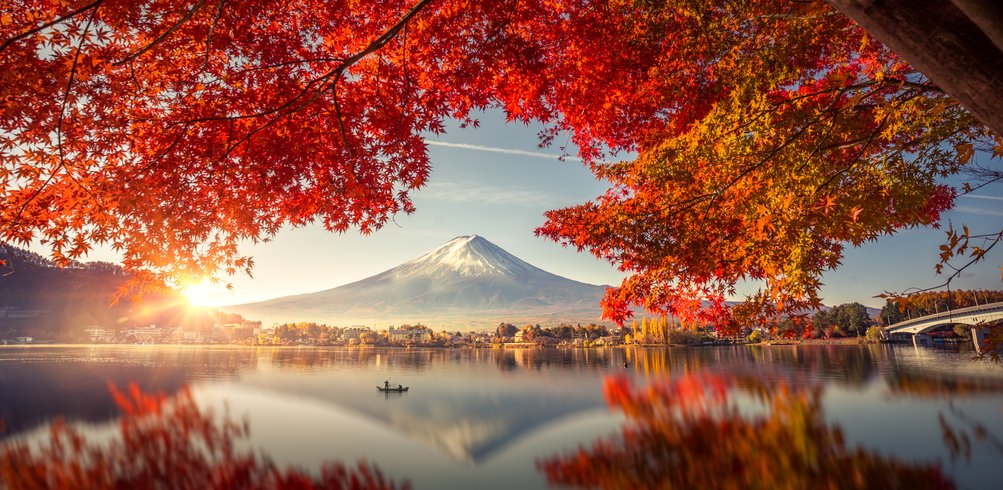
Fall in love with Japan in autumn
24 Feb 2023
From September to December every year, Japan's temples and ancient shrines are transformed by seas of crimson foliage After months of steamy weather, an epic transformation begins across Japan. Trees change seemingly overnight from green to red, orange and yellow, turning the landscape into an artist's palette of autum...
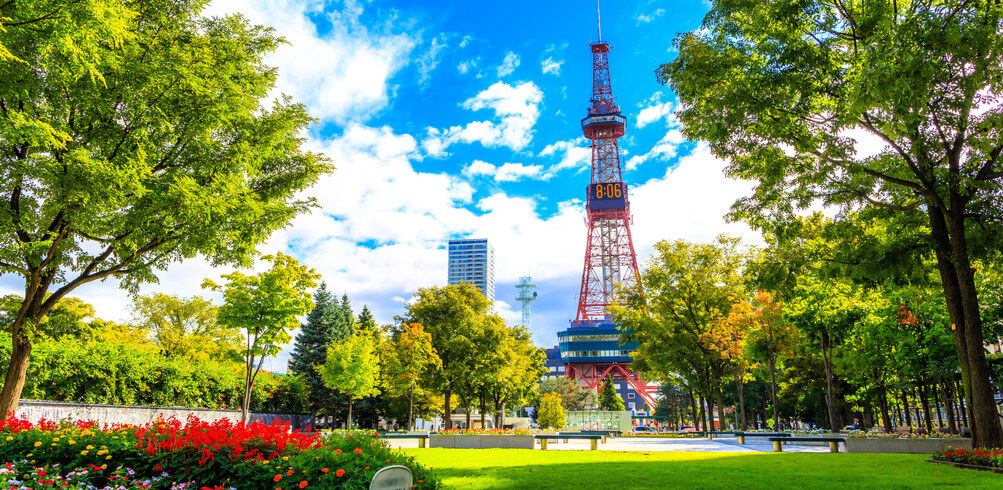
When is the best time to visit Japan
30 Jun 2021
Japan is one of East Asia's most beloved countries, with a cherished ancient culture and exquisite sights. But, when is the best time to go? Japan is an island country full of contrasts. From ultra-sleek modern cities, to soaring alps, traditional villages and ancient shrines. And with four distinct seasons that e...

Things to love about a Japanese winter
A country that charms in any season, you’ll find winter delights aplenty in this wonderland Japan really is a country for all seasons. Tourists have already cottoned onto the renowned beauty of sakura (cherry blossoms) in spring and the rich foliage of autumn, but winter brings a crisp, festive prettiness. Think snow-c...

Everything you need to know about: Sapporo Snow Festival
Deep into Japanese snow season, the northern city of Sapporo hosts the country’s largest winter festival Japan has long been considered a leading winter destination, thanks to its powdery slopes and heavy snowfall. From February 4-11, 2024, the Sapporo Yuki Matsuri (Snow Festival) turns the capital of Hokkaido into a f...
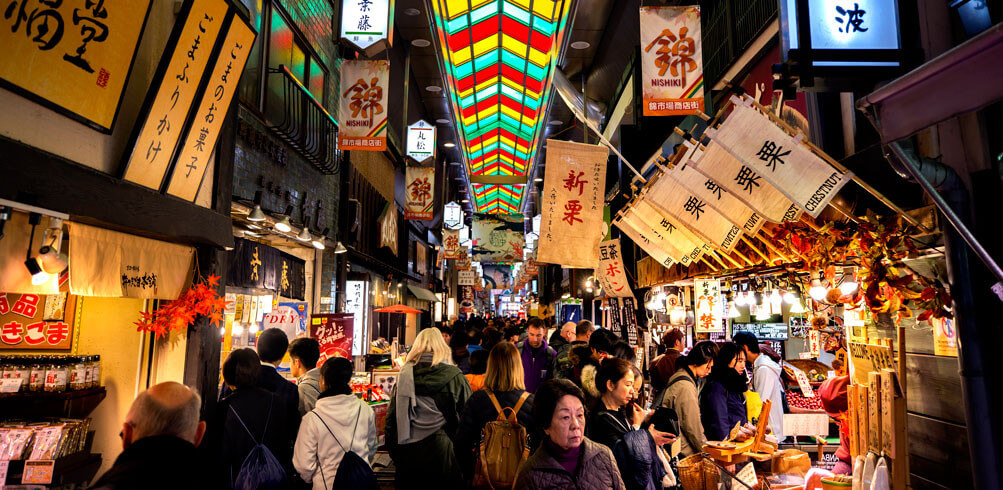
A first timer's guide to Japan
From sights to scenery and five-star fare, Japan is the ultimate Asian all-rounder Japan is undoubtedly one of the hottest destinations in the world right now, and for good reason. This geographically blessed country is spectacular year-round, easy to navigate and packed with ancient sights. In between attractions, d...
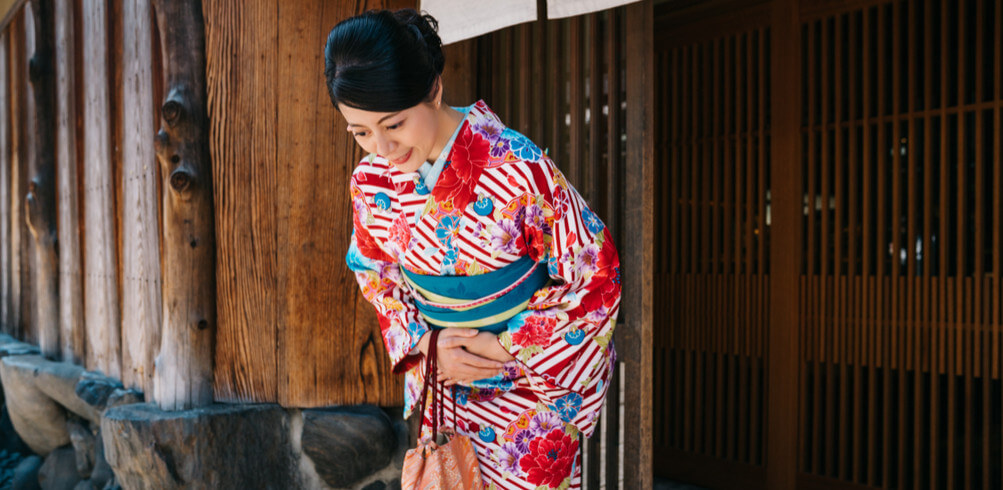
Japanese etiquette tips every visitor should know
Japan is a country with buckets of charm and ancient history, but its customs can be tricky to navigate There’s a lot to love about Japan. Its quirky streets, delicious cuisine and centuries-old castles attract millions of visitors each year, but while its culture intrigues, it also confuses. Manners and strict etiquet...

101 Things to do in Japan
From the delicious to the quirky, Japan is bursting with fun things to do If you're all templed-out or just have some time to kill while visiting Japan, here, 101 ideas to keep you busy. 1. Queue up for sushi at Daiwa Sushi in the Toyosu Market (Tokyo) Recently located to a new, larger location, the sprawling fish...
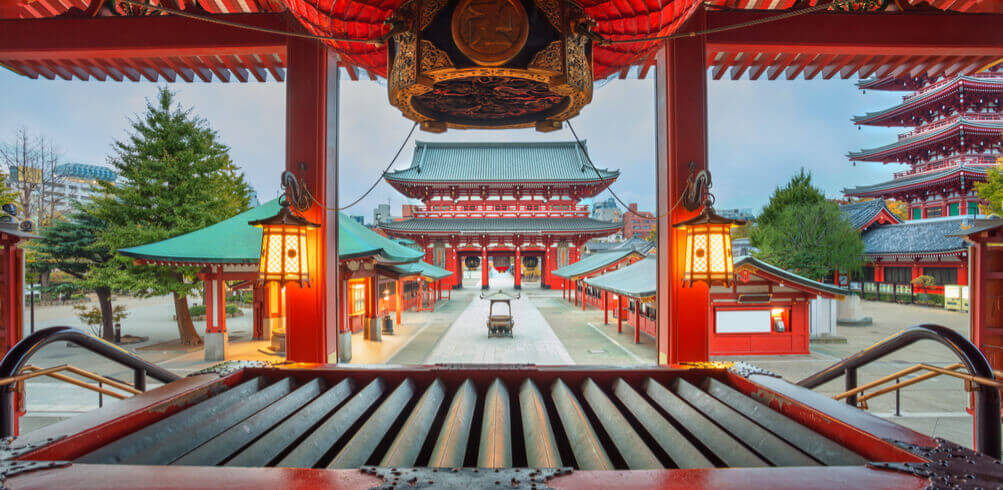
Tokyo in five ways, over five days
Discover five faces of Japan’s sprawling capital over as many days with a jaunt through these diverse areas Day 1 – Shinjuku and Harajuku Dive headlong into two of Tokyo’s most colourful neighbourhoods. Begin in youthful Harajuku, where edgy boutiques line Omotesando Avenue and Cat Street and all things cute reign on T...
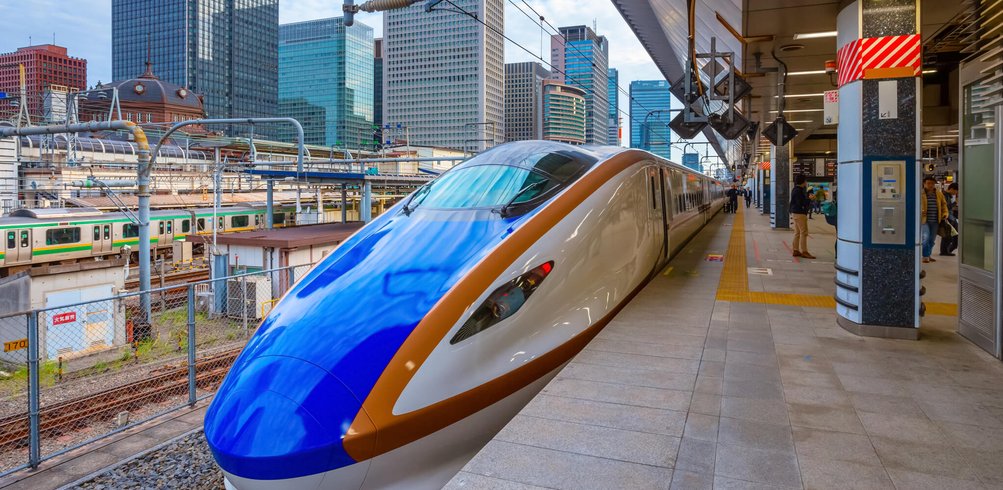
Everything you need to know about: bullet trains in Japan
Get familiar with the Japanese love of innovation through its impressive network of bullet trains A needle-nosed train speeds past the base of beloved Mount Fuji. It’s an image as synonymous with Japan as a geisha shuffling through the streets of Kyoto or a steaming bowl of ramen—and for good reason. The East Asian nat...
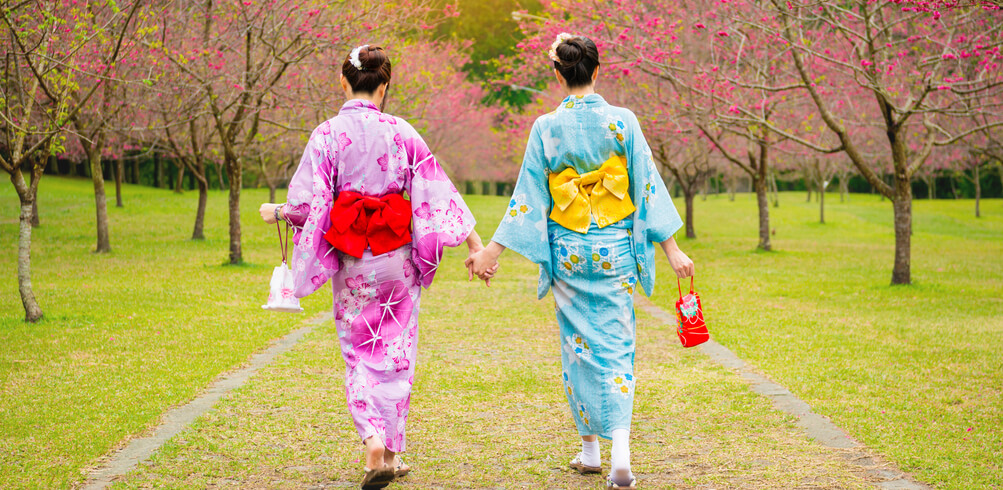
The four seasons: when should I travel to Japan?
Japan can be visited year-round, with each season showcasing its own special charm While its eclectic capital Tokyo exudes modernity and is one of the most technologically advanced cities in the world, there are many prefectures throughout Japan that resemble their traditional forms with wooden minka architecture and t...
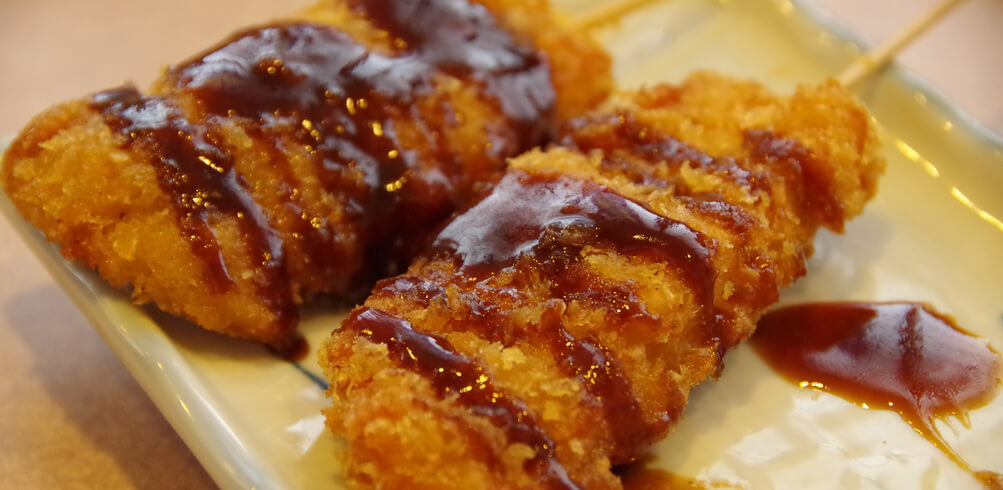
Eat like the Japanese: five must try regional dishes
Japanese food is treasured across the globe, but there’s much more to it than teriyaki chicken With such a vast array of flavours, dishes and regional specialties, it’s no surprise that Japan’s capital Tokyo, has been awarded the most Michelin Stars in the world, defeating culinary superpower Paris for 11 consecutive y...
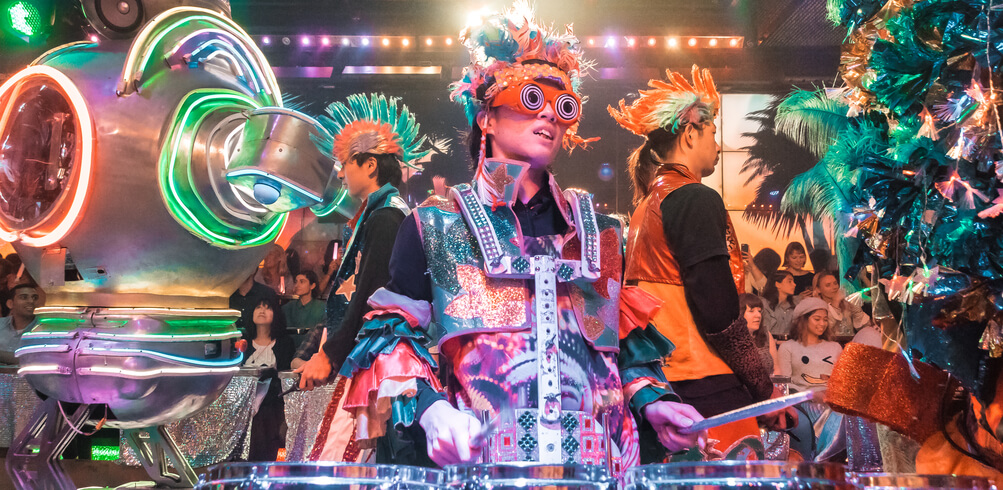
Five books to read before your trip to Japan
From modern classics to guides and memoirs, the many facets of Japan are best explored through literature These days, it seems like everything you need to know about a place can be found with a quick Google search. But sometimes, the best way to find out about the history or culture of a country is to turn to a good ol...
We see that you are based in but you are viewing that is meant for residents.

The Ultimate Japan Itinerary for First-Timers: From 1 to 3 Weeks

I’ve yet to meet a traveler who didn’t love their time in Japan . It’s just one of those countries that everyone loves. How can you not? The food is carefully crafted and delicious; the history and culture are both rich and long; the landscape breathtaking; and the people super friendly and polite.
Japan remains one of my favorite countries. No matter how long I visit, it’s never enough. I always leave wanting more.
But the country always seems forbidding to many travelers. It definitely still has that “exotic” stereotype that makes people think it’s hard to travel around.
Where should you go? What should you include in your Japan itinerary? Should you buy a JR Pass to help you get around?
To help you out, here are a few suggested itineraries based on my years of visiting that will ensure you see the best sites on your Japan trip — as well as get off the beaten path and get a real sense of Japanese culture!
Table of Contents
Japan Itinerary: Know Before You Go
Japan itinerary: one week, japan itinerary: two weeks, japan itinerary: three weeks.

Just be sure to get one BEFORE you go as you cannot purchase them on arrival. For more information on the pass, including how much they cost and how you can get one, read this blog post . It has everything you need to know!
Mobile Data in Japan In Japan, English isn’t widely spoken (especially outside of the major cities) so having access to the internet is vital for checking addresses, using translation apps, and looking up things to see and do. The easiest way to get data is through an international eSIM for Japan .
An eSIM allows you to access mobile data via a QR code so you can have internet wherever you are, without worrying about physical SIM cards or roaming charges. This will save you a lot of time and hassle when using apps like Google Maps, Google Translate, Instagram, and YouTube. It will also come in handy for checking menus at restaurants (since they are rarely in english).

Day 1 & 2: Tokyo Chances are you’ll be starting your trip in Tokyo , since it’s home to the country’s biggest international airport. If your trip is seven days long, activate your JR Pass right away, so that you can take advantage of the free JR trains that run through the city.
While you could easily spend your entire week in Tokyo and not get bored, here are some of the highlights:
Visit the fish market – In 2018, Tokyo’s main fish market moved to Toyosu, which is twice the size of the old one, Tsukiji, making it the largest in the world. While a lot of good restaurants moved too (Sushi Dai being the most famous), I find the place itself very stale, since you can no longer wander the floor (you look down via a walkway above; you also need a visitor’s pass to enter).
The old outer market in Tsukiji is still great though, and you can still find food and stores there too. You can wander alone and just eat and shop until you can’t anymore! Most businesses open at 6am, so it’s a perfect place to go in the morning when you wake up early because of jet lag. Food and drink tours of the Tsukiji Outer Market are available for around 13,500 JPY.
See Sensoji Temple – Sensoji is beautifully painted and sits in a scenic spot near a five-story pagoda and the famous Kaminari Gate. There’s a huge statue of Kannon, the goddess of mercy, inside the main hall. It’s always busy but is worth seeing with your own eyes. The temple is free to visit.
Drink in Golden Gai – This alleyway of back-street bars is a lively place to drink at night and has a bit of a red-light-district feel to it. It is not to be missed. Even if you don’t drink, be sure to wander about. Arigato Tours offers tours of the area where you’ll learn about the neighborhood while stopping to sample Japanese classics like sushi, yakitori, and ramen. Tours are 23,900 JPY and include a drink and dishes at four food stops.
Visit the Imperial Palace – When the emperor moved from Kyoto to Tokyo in 1869, he took Edo for his new residence and renamed it Tokyo. Though you can’t go inside (or get very close), the building is amazing. It is surrounded by lovely grounds and a park, and there’s a moat around the stone walls. You can also see the changing of the guard, though it’s a relatively low-key and unassuming ceremony.
Watch a sumo match – Kokugikan, Japan’s most famous sumo arena, hosts tournaments three times each year. The wrestling that we see today dates to the 17th century, though its origins go back even further, and it’s still one of the most popular traditions in the country. If you’re in town at the right time, this is a must-do! Tickets sell out quickly, so act fast. You can book a ticket online here (you’ll be accompanied by a guide too, so you can learn more about the tradition as it unfolds before your eyes).
If you have more time, consider taking a day trip to Kamakura to see the giant Buddha statue (Daibutsu). It is over 13 meters (42 feet) tall and dates back to the 13th century. The journey is around 90 minutes each way — and free with the JR Pass !
For delicious food, some of my favorite bars and restaurants include: Uogashi Nihon-Ichi (Standing Sushi Bar), Nemuro Hanamaru KITTE Marunouchi, Motodane, Tokyo Whisky Library, Ichiran Shibuya, and Uohama.
WHERE TO STAY IN TOKYO : Hostel Chapter Two – A small, family-run hostel not far from Skytree Station in Asakusa. I really like the shared kitchen and common room, as there’s a real social feel to them.

With its beauty come lots of crowds though, so try to visit outside of the busy summer months. Even with lots of tourists, though, the city is still magnificent and has a lot to offer. Some things to see and do that you shouldn’t miss are the following:
Visit the Golden Pavilion – This famous (and picturesque) temple dates to the 1950s, when a monk burned down the previous temple (from the 14th century) while trying to commit suicide. It’s a UNESCO World Heritage Site and one of the most-visited destinations in the country!
Explore Gion – Gion, the historic geisha district, is renowned as being one of the most iconic and atmospheric areas of town. It’s known for its traditional wooden machiya houses, narrow alleyways, cobblestone streets, and preservation of geisha (known locally as geiko) culture. Lining the main street are ochayas (teahouses where geishas entertain), small shops, and many restaurants, ranging from upscale kaiseki restaurants serving traditional Kyoto cuisine to casual eateries.
To really learn more about this amazing party of town and its past, take a walking tour of Gion . You’ll learn a ton and get a lot of context. They cost around 1,800 JPY.
Wander in the Bamboo Forest – For a relaxing break, head to Arashiyama and let the dense and towering stands of bamboo envelop you. Located near the famous Tenryu-ji temple, it’s one of the most beautiful places in the entire country. It’s not that big, but there are some hidden areas to explore. Just make sure to arrive early if you want to enjoy it without the crowds (it fills up fast after sunrise).
While there, I would also recommend visiting the Okochi Sanso Garden, which (along with the home) belonged to the famous Japanese actor Denjir? ?k?chi (1898–1962). It’s not free (it’s 1,000 JPY), but it’s really nice and has some wonderful views.
Admire Ryoan-ji temple – This is my favorite temple in Kyoto. Originally established in 1450 as a residence for a high-ranking samurai, it was soon converted into a Zen temple and is now a UNESCO World Heritage Site, with a mausoleum that houses the remains of seven emperors. Its traditional rock and sand garden is considered one of the best in the country. There’s also a teahouse where you can experience the traditional Japanese tea ceremony ( chanoyu ) as you overlook the Kyoyochi reflecting pool.
Wander the Nishiki Market Nishiki Ichiba is now one of the biggest indoor markets in town. Known as “Kyoto’s Kitchen” and spanning over five blocks, it is full of vendors selling traditional dishes from the region, classic Kyoto souvenirs, and really just about anything else. There are over a hundred stalls here, many of which have been in the same family for generations. Opening hours depend on the shop but are typically from 9am to 6pm.
To dive deeper into Japanese food culture, you can take a food tour of the market . It’s the best way to learn about all the food you’ll see, as well as the market’s history.
For a half-day trip, you can also visit Nara. It’s a small city just one hour from Kyoto. Nara was the capital of Japan in the eighth century, so there are lots of buildings and temples here that are upwards of a thousand years old (which is rare in Japan, due to fires, as well as World War II). But the real draw in Nara are the deer.
Since the 17th century, those in and around the city have been considered sacred. You can buy crackers to feed them or just watch them stroll around carefree. A guided half-day walking tour that includes all of Nara’s highlights as well as a traditional lunch is 11,500 JPY.
While you’re here, don’t miss a visit to Todai-ji. It’s the world’s largest wooden building and is home to a 16-meter (52-foot) Buddha statue. It was built in 738 CE and is now a UNESCO World Heritage Site. Admission is 600 JPY.
WHERE TO STAY IN KYOTO : Backpacker Hostel K’s House – A fun, social backpacker hostel in a great central location. The rooftop terrace is a cool spot to hangout and meet other travelers after a day of exploring.

Don’t miss Osaka Castle though. While it’s not the original (this version dates to 1931), it’s nevertheless an impressive sight. It’s home to a small but insightful museum and an observation deck that offers some picturesque city views.
And be sure to stroll down Dotonbori (ideally at night), the main street, which is lined with restaurants, stores, and tons of neon lights and signs. A guided walking tour that includes Dotonbori as well adjacent neighborhoods is 6,500 JPY.

Today, Hiroshima is thriving . Don’t miss the Atomic Bomb Museum, which depicts the history of the city before and after that fateful day. It has photos, artifacts, videos, and information about the effect of radiation on the population. It’s a sobering experience but one that should not be missed.
If you feel like getting out of town afterward, head to Miyajima , an island that offers a place to hike and enjoy nature. You can also take a cable car to the peak of the mountain to take in the view. A one-way ferry ride to the island takes 10 minutes and is free to JR Pass holders.
WHERE TO STAY IN HIROSHIMA : Roku Hostel – A cozy, small hostel with a rustic atmosphere and design. It feels like you’re staying with a friend here, and the beds are super comfy too.

If you like history, don’t miss the Hida Minzoku Mura Folk Village, home to a collection of traditional thatch-roof houses that you can enter to further immerse yourself in the country’s past.
This city (and region, really) is famous for its Hida beef, a high-fat variety that’s even better than any A5 Wagyu you might have. It just melts in your mouth. Be sure to have some while you are here!
The Japanese Alps are not far from here as well, so if you love hiking and want to extend your time in the region, head to Kamikochi for a day hike or overnight trip. It’s just an hour away and has both easy and moderate trails, which are open from April to November. Hiking trails can also be found in Hakusan National Park (also just one hour away by car).

One of the more unique temples in Japan is here too: Ninja (Myoryuji) Temple. While the temple wasn’t home to actual ninjas, Myoryuji was built as a defensive structure (strict laws forbade local lords from building defenses, so they were hidden in the temple to circumvent the rules). These include hidden rooms, secret tunnels, and a maze of staircases and halls to confuse enemies.
If you need a break from exploring cities, Hakusan National Park, home to Mount Haku, one of the three holy mountains, is just an hour south of town.

If you’re here in April, there are incredible cherry blossom displays that are famous in the region. And, just like Takayama, Matsumoto is close to the Japanese Alps, so you’re just a stone’s throw from some of the best hiking in the country.

There are tons of hotels (both modern and traditional) that have their own hot springs (often both indoors and outdoors). It’s the perfect place to wrap up a trip, relax, and take in the views.
In addition to getting a copious amount of R&R, be sure to ride the cable car up the mountain for even more amazing views. The area is surrounded by craters from an inactive volcano that erupted 80,000 years ago (not to be confused with nearby Mount Fuji, which is an active volcano), and you’ll find lots of vendors at the top selling eggs cooked in the sulfurous waters. It’s said the eggs prolong one’s life by seven years, so feel free to give them a try!
If you prefer to hike up instead, the trail is open between July and September, with the trek taking anywhere from 5 to 12 hours, depending on your level of fitness. Typically, hikers leave at night in order to arrive at the summit by dawn. There are little shops along the way that sell food and even beds you can rent in advance if you want to split your journey up. Just make sure you do your research and prepare in advance as it’s a tough hike!
If you really want to play tourist, you can also ride a mock pirate ship around the lake for more views of the mountains, and Mount Fuji in particular.
Full-day tours around Hakone that include all the main sights cost 14,800 JPY.
WHERE TO STAY IN HAKONE : Hotel Green Plaza – With gorgeous views of Mount Fuji, a huge buffet dinner (with both Western and Japanese options), and a private onsen where you can relax and enjoy the view, this is one of the best places to stay in Hakone if you want value but don’t want to break the bank.

Using the suggestions above, here’s how I would organize your itinerary:
- Days 1-3 : Tokyo
- Day 4 : Mount Fuji or Hakone
- Day 5 : Takayama
- Days 6 & 7 : Kanazawa
- Days 8 & 9 : Matsumoto
- Days 10-12 : Kyoto
- Days 13 & 14 : Osaka
- Days 15 & 16 : Hiroshima

If you do want to spend a few hours in Hakodate, don’t miss the Morning Market, where you can find lots of fresh seafood. You can also visit Fort Goryokaku, the first “Western”-style fort in the country.

Be sure to stop in at the local Beer Museum too, owned by Sapporo Breweries (the oldest beer company in the country). It showcases the history of beer in Japan and how the business got its start. If you’re a whiskey fan, stop by The Bow Bar, home to some rare (and expensive) whiskeys and considered one of the best such bars in the world.
What I love about the city is its location. This region has some of the best hiking in the country. There are plenty of hills and mountains, offering options for both day hikes as well as overnight trips. Some highlights include Mount Me-akan, Mount Asahim, Mount Mashu, and Nishibetsu-dake. For the best views of the city, head to Mount Moiwayama. It’s just a 30-60-minute hike to the top, though there is a cable car you can take as well.
And if you’re visiting in the winter, hit the slopes! There are over a hundred ski resorts in Hokkaido. You can rent skis (or a snowboard) for around 10,000-18,000 JPY. Lift prices are usually 4,000-6,000 JPY per day. In the winter, don’t miss the annual Sapporo Snow Festival. It’s held every February and draws over two million visitors. There are ice sculptures, igloos, live music, and delicious local foods on offer.
Additionally, be sure to take a day trip to Otaru, where you’ll find some of the freshest uni in the whole country (this is the main area where the famed Hokkaido uni is caught). Go hungry and visit the markets, stalls, and shops around there.
WHERE TO STAY IN SAPPORO : Waya Hostel – This is a laid-back, colorful hostel with a social atmosphere that makes meeting people a breeze. It has a homey, DIY feel and is perfect for budget travelers looking for a no-frills place to crash.

There is a ton to see and do in Japan , and you could easily spend another month here and still just scratch the surface (we didn’t even get to Okinawa and the islands!). And while these itineraries are a bit fast-paced, Japan isn’t cheap, so budget travelers need to move around the country quickly to avoid breaking the bank.
But no matter how long you visit, you won’t be disappointed. Japan is an amazing, beautiful, and unique destination that I never get tired of visiting. While it’s not as affordable as its neighbors, there are still plenty of ways to save money , and it’s definitely worth spending the time (and money) visiting. You won’t be disappointed!
Just make sure to get your Japan Rail Pass before you go!
Book Your Trip to Japan: Logistical Tips and Tricks
Book Your Flight Find a cheap flight by using Skyscanner . They are my two favorite search engines, because they search websites and airlines around the globe, so you always know no stone is left unturned!
Book Your Accommodation You can book your hostel with Hostelworld as they have the most comprehensive inventory so they are best for booking a hostel. If you want to stay in a hotel or guesthouse in Japan, use Booking.com as it consistently returns the cheapest rates for guesthouses and hotels.
Don’t Forget Travel Insurance Travel insurance will protect you against illness, injury, theft, and cancelations. It’s comprehensive protection in case anything goes wrong. I never go on a trip without it, as I’ve had to use it many times in the past. My favorite companies that offer the best service and value are:
- Safety Wing (best for everyone)
- Insure My Trip (for those over 70)
- Medjet (for additional evacuation coverage)
Looking for the Best Companies to Save Money With? Check out my resource page for the best companies to use when you travel! I list all the ones I use to save money when I travel — and I think they will help you too!
Be sure to check out the Japan Rail Pass if you’ll be traveling around the country. It comes in 7-, 14-, and 21-day passes and can save you a ton of money!
Looking for More Travel Tips for Japan? Check out my in-depth Japan travel guide for more ways to save money; information on costs; tips on what to see and do; suggested itineraries, reading, and packing lists; and much, much more!
Got a comment on this article? Join the conversation on Facebook , Instagram , or Twitter and share your thoughts!
Disclosure: Please note that some of the links above may be affiliate links, and at no additional cost to you, I earn a commission if you make a purchase. I recommend only products and companies I use and the income goes to keeping the site community supported and ad free.
Related Posts

GET YOUR FREE TRAVEL STARTER KIT
Enter your email and get planning cheatsheets including a step by step checklist, packing list, tips cheat sheet, and more so you can plan like a pro!

REQUEST INFORMATION
Don't know which tour is suitable for you.
Let us help you. Please tell us more about your interests. We will send some suggestions based on your needs.

- Trip Finder
- Saved Tours

Grand Tour of Japan

Fully Escorted

Local Cuisine

Guaranteed Departure

From US$8898.00
- Our California office it's now
- 12:22 PM(Thu) - We Are Open
- Tel: 1-909-988-8885 Toll free : 1-855-325-2726 (USA & CANADA)
- Whatsapp: Website Line : 1-909-818-5901

- Monday to Friday 8:30AM - 5:30PM (PST) Saturday 9:00AM - 3:00PM (PST)
Tour Highlights
- Journey through all four main islands of Japan: Hokkaido, Honshu, Shikoku, and Kyushu.
- Perfect for travelers looking for a general introduction to the entire country.
- Visit historical landmarks, modern city attractions, rural villages, and scenic destinations.
- Make sushi with a professional sushi chef and watch a kimono fashion show.
- Experience a traditional tea ceremony and meet an apprentice geisha (maiko).
- Explore Nikko, a place renowned for its scenic beauty and shrines.
- Take the longest railroad tunnel in the world that travels under water.
- Chances to see cherry blossoms, spring flowers, autumn leaves, festivals, and more.

Sapporo - Otaru - Shiraoi - Noboribetsu - Lake Toya - Hakodate - Seikan Tunnel - Aomori - Towada - Morioka - Hiraizumi - Matsushima - Nikko - Tokyo - Hakone - Mt Fuji - Takayama - Shirakawa-go - Kanazawa - Kyoto - Nara - Osaka - Himeji - Kurashiki - Takamatsu - Shimanami Kaido - Hiroshima - Kitsuki - Beppu - Takachiho - Kumamoto - Nagasaki - Fukuoka
21 Nights | From US$8898.00
Departure Months:
Experience a grand vacation to japan by visiting all four of its main islands; the perfect introduction to the entire country..
All Japan Tours has organized our longest and most comprehensive guided group tour providing a true introduction to the entire country of Japan. Our Grand Tour of Japan offers a three-week long excursion, traveling to all four main islands of Japan from the Northern Island of Hokkaido to the Southern Region of Kyushu. This itinerary caters to a wide variety of interests regarding Japanese culture, festivals, architecture, nature, rural villages, and modern city attractions. This tour is pe... View More
All Japan Tours has organized our longest and most comprehensive guided group tour providing a true introduction to the entire country of Japan. Our Grand Tour of Japan offers a three-week long excursion, traveling to all four main islands of Japan from the Northern Island of Hokkaido to the Southern Region of Kyushu. This itinerary caters to a wide variety of interests regarding Japanese culture, festivals, architecture, nature, rural villages, and modern city attractions. This tour is perfect for travelers who wish to discover the whole country and see all that Japan has to offer. Let All Japan Tours provide the transportation, comfortable accommodation, and an English-speaking guide, as we take you on the Grand Tour of Japan. Starting in Hokkaido, visit the highlights of the Northern Island which include Sapporo, Otaru, Hakodate, and more. You will have the chance to see amazing attractions in the highlighted cities, including the Sapporo Clock Tower, the famous Otaru glassware shop: Kitaichi Garasukan, and fresh food morning markets in Hakodate. Take in the views from Mt. Hakodate and visit Goryokaku Fort, a western-style fort surrounded by beautiful cherry blossoms in spring. Before leaving the island of Hokkaido, take the bullet train through the Seikan Undersea Tunnel which connects Hokkaido to the Japan's main island, Honshu. Once on the main island of Honshu make your way through Matsushima and Nikko, both known for their scenic views, temples, and shrines. In Nikko, visit Toshogu Shrine, where you will see the famous carving of the “See no Evil, Hear no Evil and Speak no Evil” monkeys. Visit famous attractions in Tokyo, Japan's capital, such as Tokyo Tower and Asakusa Sensoji Temple. Unwind at your Japanese-style inn, where you can enjoy the natural bath waters of the hot springs before heading to the ancient city of Kyoto. You will have exclusive access to the city’s top gardens, temples, and shrines, and will enjoy a traditional green tea ceremony hosted by an apprentice geisha (maiko). Travelers will also cross the Inland Sea to Shikoku Island by a scenic drive across Shimanami Kaido highway and visit Takamatsu, where you can visit one of Japan’s most beautiful landscape gardens. Pay a visit to Hiroshima, a city destroyed by an atomic bomb during World War II. Today, the city flourishes and offers shopping centers, beautiful gardens, and the Memorial Peace Park. Travel to Kyushu to visit hidden-gems in Beppu, Takachiho, Nagasaki, and Fukuoka. Watch 1,500 wild Japanese macaques monkeys in their natural habitat in Beppu and enjoy a trip to the mythological town of Takachiho, where you can watch as performers reenact the legend of Amaterasu, the Shinto Sun Goddess. Enjoy your last night in Japan with a Wagyu Beef dinner. Each Grand Tour incorporates seasonal attractions such as cherry blossoms, baby blue eye flowers, wisteria, festivals, and more! For those looking for a thorough introduction to the country, this tour is a wonderful choice. Immerse yourself in the culture and be surrounded by the rich history of Japan. Please click on the tours below to learn more about our Grand Tour of Japan itinerary and its seasonal changes.

8 trips through Japan

Grand Tour of Japan: Autumn Leaves & Cherry Blossoms
Sapporo / Otaru / Shiraoi / Noboribetsu / Lake Toya / Hakodate / Seikan Tunnel / Aomori / Towada / Morioka / Hiraizumi / Matsushima / Nikko / Tokyo / Mt Fuji / Hakone / Obara / Takayama / Shirakawa-go / Kanazawa / Kyoto / Nara / Osaka / Himeji / Kurashiki / Takamatsu / Shimanami Kaido / Hiroshima / Kitsuki / Beppu / Takachiho / Nagasaki / Fukuoka
22 Days 21 Nights | from US $8898.00
Explore Japan's all four main islands: Hokkaido, Honshu, Shikoku, & Kyushu...plus enjoy the Obara Shikizakura Festival, where fall foliage and cherry blossoms appear at the same time.

Grand Tour of Japan (Reverse): Cherry Blossoms & Wisteria
Nagasaki / Takachiho / Beppu / Kitsuki / Hiroshima / Shimanami Kaido / Takamatsu / Kurashiki / Himeji / Kobe / Nara / Kyoto / Kanazawa / Shirakawa-go / Takayama / Matsumoto / Mt Fuji / Hakone / Tokyo / Ashikaga / Nikko / Matsushima / Hiraizumi / Kitakami / Morioka / Seikan Tunnel / Hakodate / Lake Toya / Noboribetsu / Shiraoi / Otaru / Sapporo
22 Days 21 Nights | from US $8998.00
Follow a cherry blossom route through Kyushu, Shikoku, Honshu, & Hokkaido and see Japan's beautiful wisteria flowers too.

Grand Tour of Japan: Cherry Blossoms, Baby Blue Eyes & Aoi Festival
Sapporo / Otaru / Shiraoi / Noboribetsu / Lake Toya / Hakodate / Seikan Tunnel / Morioka / Hiraizumi / Matsushima / Nikko / Hitachi Seaside Park / Tokyo / Mt Fuji / Hakone / Hikone / Koka / Kyoto / Nara / Osaka / Himeji / Kurashiki / Takamatsu / Shimanami Kaido / Hiroshima / Kitsuki / Beppu / Takachiho / Nagasaki
Take the ultimate journey to Japan during cherry blossom season, see the baby blue eye flowers, and view the elegant Aoi Festival.


Grand Tour of Japan (Reverse): Takayama Spring Festival & Cherry Blossom Tour
Saga / Nagasaki / Takachiho / Beppu / Kitsuki / Hiroshima / Shimanami Kaido / Takamatsu / Kurashiki / Himeji / Kobe / Nara / Kyoto / Kanazawa / Shirakawa- go / Takayama / Mt Fuji / Hakone / Tokyo / Omiya / Nikko / Matsushima / Hiraizumi / Kitakami / Morioka / Seikan Tunnel / Hakodate / Lake Toya / Noboribetsu / Shiraoi / Otaru / Sapporo
Celebrate the cherry blossom season by traveling to all four of Japan's main islands plus the Takayama Spring Festival.

Grand Tour of Japan (Reverse): Takayama Autumn Festival & Autumn Leaves
Nagasaki / Takachiho / Beppu / Kitsuki / Hiroshima / Shimanami Kaido / Takamatsu / Kurashiki / Himeji / Kobe / Nara / Kyoto / Kanazawa / Shirakawa-go / Takayama / Mt Fuji / Hakone / Tokyo / Nikko / Matsushima / Hiraizumi / Morioka / Towada / Aomori / Seikan Tunnel / Hakodate / Lake Toya / Noboribetsu / Shiraoi / Otaru / Sapporo
Exploring Japan's all four main islands: Kyushu, Shikoku, Honshu, & Hokkaido, as well as the Takayama Hachiman Autumn Festival.

Grand Tour of Japan (Reverse): Cherry Blossoms & Wisteria with Expo 2025 Osaka
Nagasaki / Takachiho / Beppu / Kitsuki / Hiroshima / Shimanami Kaido / Takamatsu / Kurashiki / Himeji / Kobe / Osaka / Nara / Kyoto / Kanazawa / Shirakawa-go / Takayama / Matsumoto / Mt Fuji / Hakone / Tokyo / Ashikaga / Nikko / Matsushima / Hiraizumi / Kitakami / Morioka / Seikan Tunnel / Hakodate / Lake Toya / Noboribetsu / Shiraoi / Otaru / Sapporo
23 Days 22 Nights | from US $9298.00
Follow a cherry blossom route through Kyushu, Shikoku, Honshu, & Hokkaido and see Japan's beautiful wisteria flowers too, plus a visit to Expo 2025 Osaka Kansai!

Grand Tour of Japan: Cherry Blossoms, Baby Blue Eyes & Aoi Festival with Expo 2025 Osaka
Take the ultimate journey to Japan during cherry blossom season, see the baby blue eye flowers, and view the elegant Aoi Festival, plus visit the Expo 2025 Osaka Kansai!

Grand Tour of Japan (Reverse): Takayama Autumn Festival & Autumn Leaves with Expo 2025 Osaka
Nagasaki / Takachiho / Beppu / Kitsuki / Hiroshima / Shimanami Kaido / Takamatsu / Kurashiki / Himeji / Kobe / Osaka / Nara / Kyoto / Kanazawa / Shirakawa-go / Takayama / Mt Fuji / Hakone / Tokyo / Nikko / Matsushima / Hiraizumi / Morioka / Towada / Aomori / Seikan Tunnel / Hakodate / Lake Toya / Noboribetsu / Shiraoi / Otaru / Sapporo
Exploring Japan's all four main islands: Kyushu, Shikoku, Honshu, & Hokkaido, as well as the Takayama Hachiman Autumn Festival and Expo 2025 Osaka Kansai.
Travel Styles
Deluxe-Plus
Spring Tours (Mar - May)
Summer Tours (Jun - Aug)
Autumn Tours (Sep - Nov)
Winter Tours (Dec - Feb)
Cherry Blossom Tours
Autumn Leaves Tours
Festival Tours
Special Interest Tours
Best Japan Tours
Tours for First Timers
Tours for Repeaters
Family Friendly Anime Tours
Anime Tours
Small Group Tours
Luxury Small Group Tours
Small Group Departures
Walking Tours
Seasonal Flowers Tours
Art & Architecture Tours
Photography Tours
Birding & Wildlife Tours
Garden Tours
Pottery Tours
Japanese Ancestry Tours
Pre & Post Cruise Tours
Starting City
Sapporo to Sapporo
Sapporo to Kushiro
Sapporo to Tokyo
Sapporo to Osaka
Sapporo to Fukuoka
Sapporo to Okinawa
Kushiro to Kushiro
Kushiro to Memanbetsu
Tokyo to Sapporo
Tokyo to Tokyo
Tokyo to Kyoto
Tokyo to Osaka
Tokyo to Hiroshima
Tokyo to Fukuoka
Tokyo to Okinawa
Tokyo to Seoul
Tokyo to Kushiro
Kyoto to Tokyo
Kyoto to Kyoto
Kyoto to Osaka
Okinawa to Okinawa
Osaka to Sapporo
Osaka to Tokyo
Osaka to Osaka
Osaka to Kotohira Onsen
Osaka to Fukuoka
Osaka to Okinawa
Fukuoka to Sapporo
Fukuoka to Tokyo
Fukuoka to Osaka
Fukuoka to Fukuoka
Fukuoka to Okinawa
Seoul to Tokyo
Taipei to Tokyo
Beijing to Tokyo
Hong Kong to Tokyo
5 Day Japan Tours
6 Day Japan Tours
7 Day Japan Tours
8 Day Japan Tours
9 Day Japan Tours
10 Day Japan Tours
11 Day Japan Tours
12 Day Japan Tours
13 Day Japan Tours
14 Day Japan Tours
15 Day Japan Tours
16 Day Japan Tours
17 Day Japan Tours
18 Day Japan Tours
19 Day Japan Tours
20 Day Japan Tours
21 Day Japan Tours
22 Day Japan Tours
Departure Month
Japan Tours in January
Japan Tours in February
Japan Tours in March
Japan Tours in April
Japan Tours in May
Japan Tours in June
Japan Tours in July
Japan Tours in August
Japan Tours in September
Japan Tours in October
Japan Tours in November
Japan Tours in December
Hokkaido Tours
Tohoku Tours
Kanto Tours
Chubu Tours
Kansai Tours
Shikoku Tours
Chugoku Tours
Kyushu Tours
Okinawa Tours
Must-See Cities
Kiso Valley
Sado Island
Akan National Park
Shirakawago
Kinosaki Onsen
Seasonal Attractions
Sanja Festival
Cherry Blossom Viewing at Yoshinoyama
Sendai Aoba Festival
Cherry Blossoms
Cherry Blossoms in Hokkaido
Cherry Blossoms in Tohoku
Cherry Blossom Festival at Matsumae Park
Cherry Blossom Festival at Ueno Park
Cherry Blossoms at Maruyama Park
Cherry Blossoms & Azaleas at Mifuneyama Rakuen
Shibazakura Festivals
Shibazakura Festivals of Hokkaido
Fuji Shibazakura Festival
Great Wisteria at Ashikaga Flower Park
Baby Blue Eyes Flowers at Hitachi Seaside Park
Takayama Spring Festival
Kyoto Aoi Festival
Tateyama Kurobe Alpine Route
Miyako Odori
Tenjin Festival
Tohoku 3 Great Summer Festivals
Aomori Nebuta Festival
Akita Kanto Festival
Sendai Tanabata Festival
Gion Summer Festival
Awa Odori Dance Festival
Lavenders in Hokkaido
Tanabata Fireworks
Karatsu Kunchi Festival
Jidai Festival
Jingu Gaien Ginkgo Avenue
Lake Kawaguchi Momiji-Kairo
Autumn Leaves
Takayama Autumn Festival
Obara Shikizakura Festival
Japan Winter Festivals
Sapporo Snow Festival
Lake Shikotsu Ice Festival
Asahikawa Winter Festival
Sounkyo Ice Waterfall Festival
Ice Breaker Cruise
Wakasagi Smelt Fishing
Kawazu Cherry Blossom Festival
Things Not to Miss
Hakone Open-Air Museum
Gion Geisha District
Kyoto Cuisine with Maiko
Green Tea Ceremony
Shikoku Pilgrimage Route
Takayama Festivals
Green Tea Ceremony with Maiko Interaction
Sushi-Making Experience
Tokyo SkyTree
Ghibli Museum
Kiyomizu Temple
Kenrokuen Garden
Hikone Castle
Zen Meditation (Zazen)
Calligraphy Lesson (Shodo)
Ikebana Lesson (Flower Arrangement)
Kimono Experience
Taiko Lesson
Dotonbori Street Food Tour
Nakasendo Hike
Ise Grand Shrine
Shiretoko Nature Cruise
Seikan Undersea Tunnel
The Omiya Bonsai Art Museum
Asakusa Sensoji Temple
Kinkaku-ji Temple (Golden Pavillion)
Todaiji Temple
Fushimi Inari Shrine
Miho Museum
Koka Ninja Mansion
Mikimoto Pearl Island
Himeji Castle
Izumo Grand Shrine
Naoshima Island
Gunkanjima Island
Mt Takasaki Monkey Park
Matsumoto Castle
Tokyo Tower
Snow Monkeys
Most Beautiful Places in Japan
Otaru Snow Light Path
Arashiyama Bamboo Forest
Kurashiki Canal Area
Miyajima Island
Shimanami Kaido
Takeda Castle
Motonosumi-Inari Shrine
Adachi Museum of Art
Takachiho Gorge
Oirase Stream
Tottori Sand Dunes
Wisteria Tunnel at Kawachi Fuji Gardens
Why Travel on Our Group Tours
Lorem Ipsum is simply dummy text of the printing and typesetting industry. Lorem Ipsum has been the industry's standard dummy text ever since the 1500s, when an unknown printer took a galley of type and scrambled it to make a type specimen book.
Best Itinerary
Planned by experts, based on seasonal favorites and must-see sites.
Budget-friendly
Choose your style and split cost with other passengers
Hand-picked Accommodations
Chosen by our experienced staff
Fully Guided
Guide is available to you 24/7 and sleeps in the same hotel
Unique experiences
Learn to create your own Sushi, meet a geisha or maiko, and more
Meet locals and visit rural areas of Japan you might miss on other tours
What our customers say
4.9 stars based on 522 REVIEWS
We had a great tour guide (Miharu). Very sweet and knowledgeable she gave us alot of history but also insight into Japanese culture. It was an amazing experience with so many different places and activities.
The best decision we made was to book a tour through AJT. Our guide, Miharu, did an excellent job and provided information and history before we arrived at each stop on our tour. She kept the itinerary focused and gave us just enough time at each location to get a taste of it. We cannot wait to return to Japan and visit some new places.
This tour was amazing. It allowed us to see so much of Japan and learn facts about the people & culture along the way. Our tour guide and drivers were professional & helpful. Before the tour, AJT helped answer my questions and helped arrange pre-tour transportation from the airport to the hotel. We would recommend to anyone searching for a tour to use AJT.
Loved it all! Wish we would of had more time! Made some great memories and would definitely go again! Size of the group was perfect and made the experience easier!
We gained great appreciation for the culture and history of Japan through the sites we visited. The transportation was comfortable and convenient, and our guide, Trend, was outstanding, knowledgeable and entertaining. The accommodations were terrific, and it was so convenient to have two meals included each day. We enjoyed every aspect of the tour and we'd highly recommend it to others!
Don't know which tour is best for you? Let us help you.
- Request Information
- share trip finder saved tours inquiry book now

Email Signup
REQUEST INFORMATION
Don't know which tour is suitable for you.
Let us help you. Please tell us more about your interests. We will send some suggestions based on your needs.

- Trip Finder
- Saved Tours

Signature: Classic Japan

Fully Escorted

Local Cuisine

Guaranteed Departure

From US$8698.00
- Our California office it's now
- 12:22 PM(Thu) - We Are Open
- Tel: 1-909-988-8885 Toll free : 1-855-325-2726 (USA & CANADA)
- Whatsapp: Website Line : 1-909-818-5901

- Monday to Friday 8:30AM - 5:30PM (PST) Saturday 9:00AM - 3:00PM (PST)
Tour Highlights
- Immerse yourself in Japan's unique culture during this longer two-week tour.
- Visit popular destinations, including Tokyo, Kyoto, Mt. Fuji, and Hiroshima.
- Discover less touristed locales like Kurashiki and Naoshima Island.
- Admire a selection of must-see UNESCO World Heritage Sites, including idyllic Shirakawa-go.
- Explore a range of sightseeing options as you take advantage of a free afternoon in lovely Kanazawa.
- Experience time-honored traditions first-hand with lessons in ikebana, calligraphy, tea ceremony, and Zen meditation.
- Experience the culture of Japan at a slower pace with groups of maximum 14 people
- Tour variations including cherry blossoms, autumn leaves, Takayama Spring and Autumn festivals, and more.

Tokyo - Hakone - Mt Fuji - Matsumoto - Takayama - Shirakawa-go - Kanazawa - Osaka - Nara - Kyoto - Hiroshima - Naoshima - Kurashiki - Himeji - Kobe
13 Nights | From US$8698.00
Departure Months:
Book the finest group travel experience while spending more time in japan and engaging in unique cultural activities..
Our Classic Japan itineraries offer travelers more time to enjoy the country’s highlights and must-see sites. Explore popular attractions in renowned cities, as well as Japan’s rural, yet charming landscapes. We offer various itineraries according to seasonal attractions, so you can enjoy “Classic Japan” at different times of the year. Begin your tour in Tokyo, where you will explore the heart of Japan while you visit world-famous attractions and historical landmar... View More
Our Classic Japan itineraries offer travelers more time to enjoy the country’s highlights and must-see sites. Explore popular attractions in renowned cities, as well as Japan’s rural, yet charming landscapes. We offer various itineraries according to seasonal attractions, so you can enjoy “Classic Japan” at different times of the year. Begin your tour in Tokyo, where you will explore the heart of Japan while you visit world-famous attractions and historical landmarks. Also enjoy an authentic Shinto ceremony at one of the city's most important shrines, officiated by a priest or miko (priestess). Explore Japan's largest and busiest fish market, learn how to make your own sushi with a professional sushi chef and savor your delicious creations. Then, head to Hakone for a scenic interlude, where you will take a Lake Ashi Cruise and visit the Open Air Museum. Stop by Japan’s most iconic mountain, Mt. Fuji, and travel through picturesque scenery to the remote Japanese Alps. Here, you will visit the famous Matsumoto Castle in Matsumoto, the Old Town of Takayama, and the UNESCO-designated villages of Shirakawa-go. These areas hold a unique and traditional atmosphere with their beautifully preserved buildings and secluded location. Take in the local atmosphere in Kanazawa with a visit to one of Japan's Three Great Gardens - Kenrokuen Garden, then explore the houses and history of Japan's feudal samurai warriors. While in Kanazawa, enjoy an afternoon of leisure where you will choose your own afternoon activity, including a visit to the 21st Century Museum of Contemporary Art, Kutani Kosen Kiln, and a Gold Leaf Workshop. Continue on an express train to Osaka to participate in a Taiko Drum Experience. Enjoy Nara's world- renowned Todaiji Temple and meet some of the freely-roaming Sika deer at Nara Park. Then spend three nights in Kyoto, the former capital of Japan and experience activities for further insight into Japan’s rich culture and history. Our travel group will have a chance to learn the arts of calligraphy and ikebana in a wooden townhouse. Try on a traditional kimono, learn to meditate like a Zen Buddhist monk, participate in a traditional green tea ceremony, and enjoy Kyoto cuisine while accompanied by an apprentice geisha (maiko). Take a bullet train to Hiroshima, where you will visit the scenic Miyajima Island before touring the Peace Memorial Park. Then examine the thought-provoking exhibits of Benesse House, Chichu Art Museum, and Art House Project while on Naoshima Island. Many of these buildings were cleverly designed by famed Japanese architect Tadao Ando. Spend time in Kurashiki at its nostalgic canal area, a quaint district with former storehouses converted into shops and cafes. Continue to Himeji for its elegant White Heron Castle (Himeji Castle), a national treasure and designated World Heritage site. Finally, visit Kobe to try the city’s famous Kobe beef, a prized delicacy that will be cooked teppanyaki style. Interested in this tour package? We offer various departure dates in spring, summer, and autumn with slight variations according to the season. Tour versions include a chance to Japan’s beautiful cherry blossoms, striking autumn leaves, wisteria and the Fuji Shibazakura Festival, the Takayama Spring Festival, and the Takayama Autumn Festival.

6 trips through Japan

Signature: Classic Japan Autumn Tour
Tokyo / Hakone / Mt Fuji / Matsumoto / Takayama / Shirakawa-go / Kanazawa / Osaka / Nara / Kyoto / Hiroshima / Naoshima / Kurashiki / Himeji / Kobe
14 Days 13 Nights | from US $8898.00 (Limit to 16 guests)
The finest Japan group travel experience with a maximum group size 16 guests.

Signature: Classic Japan Autumn Leaves Tour
14 days 13 nights | from us $9098.00 (limit to 16 guests).

Signature: Classic Japan Tour - Wisteria & Fuji Shibazakura Festival
Tokyo / Ashikaga / Mt Fuji / Matsumoto / Takayama / Shirakawa-go / Kanazawa / Osaka / Nara / Kyoto / Hiroshima / Naoshima / Kurashiki / Himeji / Kobe

Signature: Classic Japan - Takayama Autumn Festival Tour
14 days 13 nights | from us $9298.00 (limit to 16 guests).

Signature: Classic Japan Cherry Blossom Tour

Signature: Classic Japan - Takayama Spring Festival & Cherry Blossom Tour
Travel styles.
Deluxe-Plus
Spring Tours (Mar - May)
Summer Tours (Jun - Aug)
Autumn Tours (Sep - Nov)
Winter Tours (Dec - Feb)
Cherry Blossom Tours
Autumn Leaves Tours
Festival Tours
Special Interest Tours
Best Japan Tours
Tours for First Timers
Tours for Repeaters
Family Friendly Anime Tours
Anime Tours
Small Group Tours
Luxury Small Group Tours
Small Group Departures
Walking Tours
Seasonal Flowers Tours
Art & Architecture Tours
Photography Tours
Birding & Wildlife Tours
Garden Tours
Pottery Tours
Japanese Ancestry Tours
Pre & Post Cruise Tours
Starting City
Sapporo to Sapporo
Sapporo to Kushiro
Sapporo to Tokyo
Sapporo to Osaka
Sapporo to Fukuoka
Sapporo to Okinawa
Kushiro to Kushiro
Kushiro to Memanbetsu
Tokyo to Sapporo
Tokyo to Tokyo
Tokyo to Kyoto
Tokyo to Osaka
Tokyo to Hiroshima
Tokyo to Fukuoka
Tokyo to Okinawa
Tokyo to Seoul
Tokyo to Kushiro
Kyoto to Tokyo
Kyoto to Kyoto
Kyoto to Osaka
Okinawa to Okinawa
Osaka to Sapporo
Osaka to Tokyo
Osaka to Osaka
Osaka to Kotohira Onsen
Osaka to Fukuoka
Osaka to Okinawa
Fukuoka to Sapporo
Fukuoka to Tokyo
Fukuoka to Osaka
Fukuoka to Fukuoka
Fukuoka to Okinawa
Seoul to Tokyo
Taipei to Tokyo
Beijing to Tokyo
Hong Kong to Tokyo
5 Day Japan Tours
6 Day Japan Tours
7 Day Japan Tours
8 Day Japan Tours
9 Day Japan Tours
10 Day Japan Tours
11 Day Japan Tours
12 Day Japan Tours
13 Day Japan Tours
14 Day Japan Tours
15 Day Japan Tours
16 Day Japan Tours
17 Day Japan Tours
18 Day Japan Tours
19 Day Japan Tours
20 Day Japan Tours
21 Day Japan Tours
22 Day Japan Tours
Departure Month
Japan Tours in January
Japan Tours in February
Japan Tours in March
Japan Tours in April
Japan Tours in May
Japan Tours in June
Japan Tours in July
Japan Tours in August
Japan Tours in September
Japan Tours in October
Japan Tours in November
Japan Tours in December
Hokkaido Tours
Tohoku Tours
Kanto Tours
Chubu Tours
Kansai Tours
Shikoku Tours
Chugoku Tours
Kyushu Tours
Okinawa Tours
Must-See Cities
Kiso Valley
Sado Island
Akan National Park
Shirakawago
Kinosaki Onsen
Seasonal Attractions
Sanja Festival
Cherry Blossom Viewing at Yoshinoyama
Sendai Aoba Festival
Cherry Blossoms
Cherry Blossoms in Hokkaido
Cherry Blossoms in Tohoku
Cherry Blossom Festival at Matsumae Park
Cherry Blossom Festival at Ueno Park
Cherry Blossoms at Maruyama Park
Cherry Blossoms & Azaleas at Mifuneyama Rakuen
Shibazakura Festivals
Shibazakura Festivals of Hokkaido
Fuji Shibazakura Festival
Great Wisteria at Ashikaga Flower Park
Baby Blue Eyes Flowers at Hitachi Seaside Park
Takayama Spring Festival
Kyoto Aoi Festival
Tateyama Kurobe Alpine Route
Miyako Odori
Tenjin Festival
Tohoku 3 Great Summer Festivals
Aomori Nebuta Festival
Akita Kanto Festival
Sendai Tanabata Festival
Gion Summer Festival
Awa Odori Dance Festival
Lavenders in Hokkaido
Tanabata Fireworks
Karatsu Kunchi Festival
Jidai Festival
Jingu Gaien Ginkgo Avenue
Lake Kawaguchi Momiji-Kairo
Autumn Leaves
Takayama Autumn Festival
Obara Shikizakura Festival
Japan Winter Festivals
Sapporo Snow Festival
Lake Shikotsu Ice Festival
Asahikawa Winter Festival
Sounkyo Ice Waterfall Festival
Ice Breaker Cruise
Wakasagi Smelt Fishing
Kawazu Cherry Blossom Festival
Things Not to Miss
Hakone Open-Air Museum
Gion Geisha District
Kyoto Cuisine with Maiko
Green Tea Ceremony
Shikoku Pilgrimage Route
Takayama Festivals
Green Tea Ceremony with Maiko Interaction
Sushi-Making Experience
Tokyo SkyTree
Ghibli Museum
Kiyomizu Temple
Kenrokuen Garden
Hikone Castle
Zen Meditation (Zazen)
Calligraphy Lesson (Shodo)
Ikebana Lesson (Flower Arrangement)
Kimono Experience
Taiko Lesson
Dotonbori Street Food Tour
Nakasendo Hike
Ise Grand Shrine
Shiretoko Nature Cruise
Seikan Undersea Tunnel
The Omiya Bonsai Art Museum
Asakusa Sensoji Temple
Kinkaku-ji Temple (Golden Pavillion)
Todaiji Temple
Fushimi Inari Shrine
Miho Museum
Koka Ninja Mansion
Mikimoto Pearl Island
Himeji Castle
Izumo Grand Shrine
Naoshima Island
Gunkanjima Island
Mt Takasaki Monkey Park
Matsumoto Castle
Tokyo Tower
Snow Monkeys
Most Beautiful Places in Japan
Otaru Snow Light Path
Arashiyama Bamboo Forest
Kurashiki Canal Area
Miyajima Island
Shimanami Kaido
Takeda Castle
Motonosumi-Inari Shrine
Adachi Museum of Art
Takachiho Gorge
Oirase Stream
Tottori Sand Dunes
Wisteria Tunnel at Kawachi Fuji Gardens
Why Travel on Our Group Tours
Lorem Ipsum is simply dummy text of the printing and typesetting industry. Lorem Ipsum has been the industry's standard dummy text ever since the 1500s, when an unknown printer took a galley of type and scrambled it to make a type specimen book.
Best Itinerary
Planned by experts, based on seasonal favorites and must-see sites.
Budget-friendly
Choose your style and split cost with other passengers
Hand-picked Accommodations
Chosen by our experienced staff
Fully Guided
Guide is available to you 24/7 and sleeps in the same hotel
Unique experiences
Learn to create your own Sushi, meet a geisha or maiko, and more
Meet locals and visit rural areas of Japan you might miss on other tours
What our customers say
4.9 stars based on 522 REVIEWS
We had a great tour guide (Miharu). Very sweet and knowledgeable she gave us alot of history but also insight into Japanese culture. It was an amazing experience with so many different places and activities.
The best decision we made was to book a tour through AJT. Our guide, Miharu, did an excellent job and provided information and history before we arrived at each stop on our tour. She kept the itinerary focused and gave us just enough time at each location to get a taste of it. We cannot wait to return to Japan and visit some new places.
This tour was amazing. It allowed us to see so much of Japan and learn facts about the people & culture along the way. Our tour guide and drivers were professional & helpful. Before the tour, AJT helped answer my questions and helped arrange pre-tour transportation from the airport to the hotel. We would recommend to anyone searching for a tour to use AJT.
Loved it all! Wish we would of had more time! Made some great memories and would definitely go again! Size of the group was perfect and made the experience easier!
We gained great appreciation for the culture and history of Japan through the sites we visited. The transportation was comfortable and convenient, and our guide, Trend, was outstanding, knowledgeable and entertaining. The accommodations were terrific, and it was so convenient to have two meals included each day. We enjoyed every aspect of the tour and we'd highly recommend it to others!
Don't know which tour is best for you? Let us help you.
- Request Information
- share trip finder saved tours inquiry book now

Email Signup

A detailed 21-day Japan itinerary
W hen travel is concerned, I firmly believe that you should always, always stay in a place at least as long as it took to get there—especially when that place is halfway across the world. You’ve got to make it worth your while! With that in mind and with 19 hours of transit ahead of me, I set out to put together my three-week Japan itinerary which, as a first timer in the land of the rising sun, would take me to all the main sights.
From Edo-era castles to metropolises, from shogun villages to iconic volcanoes, and from tranquil temples to surprising wildlife, here’s what I did in the space of three weeks.
TOKYO // 4 days
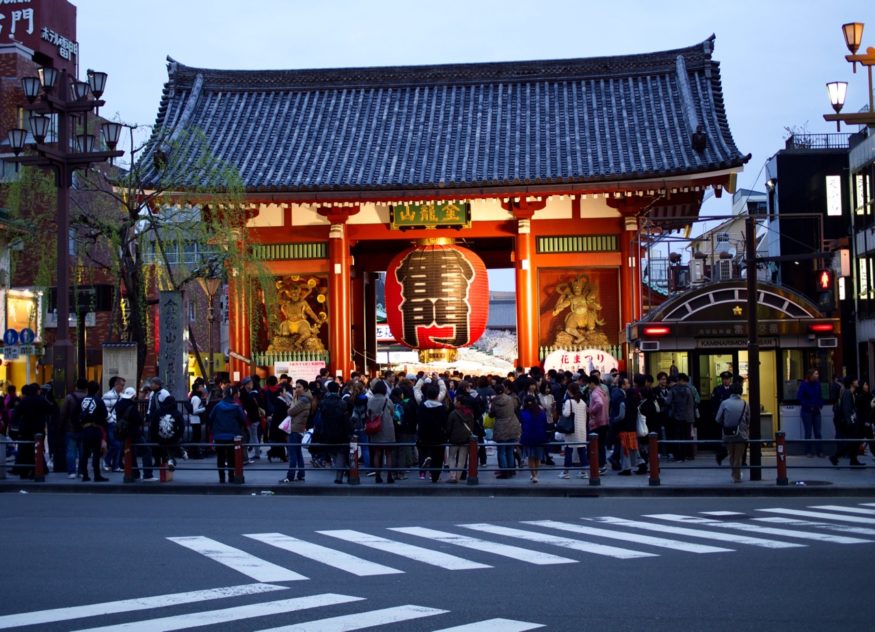
With most flights landing into Narita airport, it only made sense to spend a little time in the Japanese capital; plus, it’s the kind of mega city you’ve just got to be in to fully grasp its tremendous size and significance. Nevertheless, I was hesitant about spending too much time in Tokyo, however fascinating it may be, as I wanted to cover as much ground as possible.
Regardless of how much or how little time I was in Tokyo for, I simply would not forego drinks at New York Bar atop the iconic Park Hyatt: totally worth the expense, the best possible way to conclude (or begin!) this epic Japanese odyssey. This is where they filmed Lost in Translation .
Useful tip: if you’re budget-strapped, skip the prohibitively expensive observation deck fees and go to Sky Tree East Tower instead where you get can to the 31st floor free of charge; not quite as high, but still impressive (see city view photo above).
Where I stayed in Tokyo
- Millennium Mitsui Garden Hotel Tokyo
Tokyo guided tours & day trips:
- Old and nostalgic Tokyo: Yanaka walking tour
- Samurai experience
- Geisha experience + Kaiseki course dinner
- Tsukiji fish market tour with sushi making experience
+ japan travel tips
Everything you need to know about the japan rail pass, nikko // 1 day.
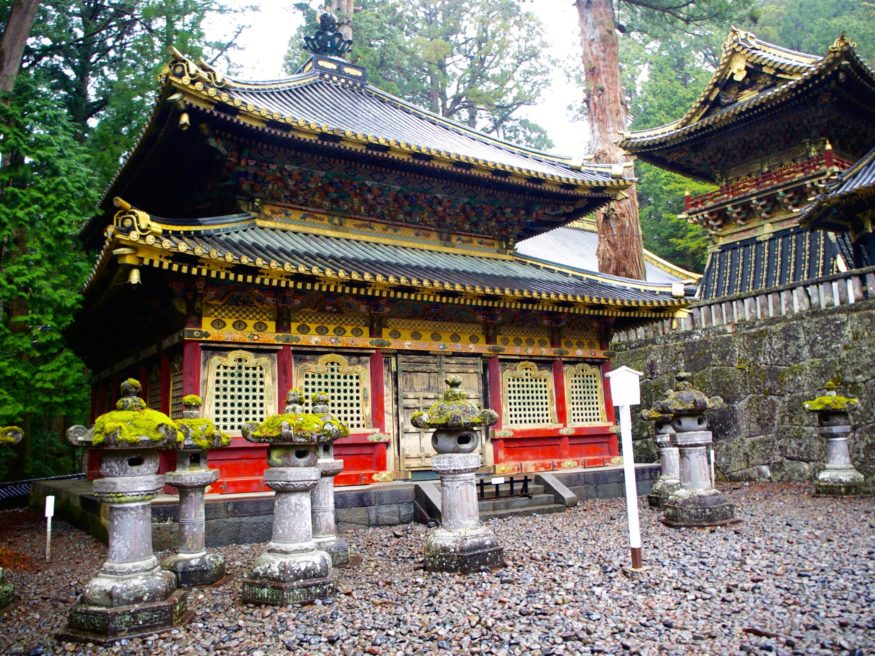
The small city of Nikko is located in a mountainous area north of Tokyo called the Tochigi Prefecture, and is home to some of the most famous and esteemed shrines in the country: UNESCO World Heritage Site of Toshogu Shrine, erected in 1617 to commemorate the founding ruler of the Tokugawa shogunate and ultimate feudal military government, Tokugawa Ieyasu. It’s a stretch on any typical Japan Itinerary but it’s well worth the trip.
Here, you will find luxuriant woodlands with rows and rows of stone lanterns, occasionally dotted with vermillion gates. A truly spiritual and grandiose place and one of the most popular day trips from Tokyo, although it is possible to stay overnight.
Where I stayed in Nikko
- Okunoin Hotel Tokugawa
Day trips to Nikko
- Morning hike and birdwatching around Nikko Toshogu Shrine
+ Japan travel tips
First time in japan: 11 things that surprised me, mount fuji // 1 day.
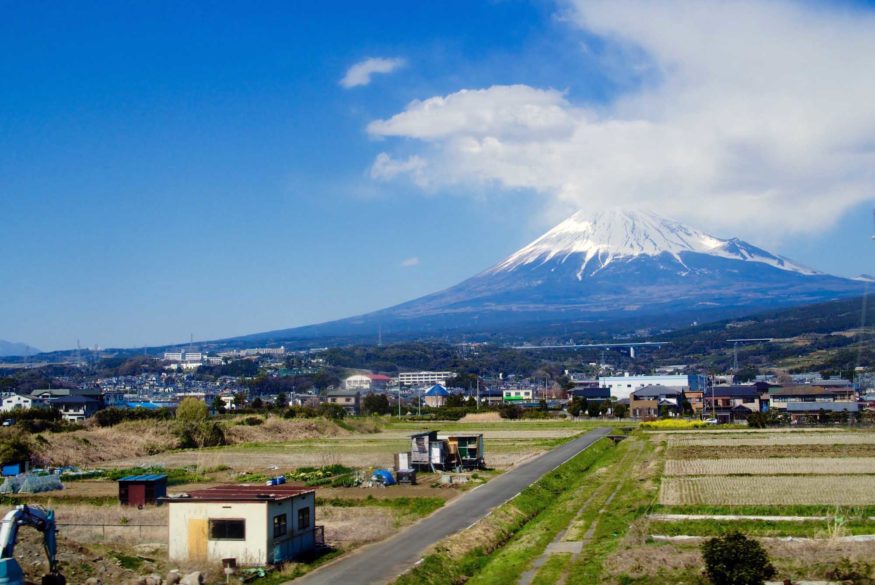
Located right outside Tokyo, the majestic mountain is one of the most popular day trip destinations in the area. Rightfully so; the stratovolcano is Japan’s highest peak at 12,389 feet tall as well as both a Special Place of Scenic Beauty (a great page to bookmark if you want to hit Japan’s prettiest sights, by the way) and a UNESCO World Heritage Site.
The easiest and most cost-efficient way to admire Fujisan is by sitting on the right-hand side of the shinkansen travelling between Tokyo and Kyoto. The mountain majestically soars into the picture about 45 minutes into the journey.
Day trips to Mount Fuji
Many tour operators offer day trips to the sacred mountain; should you wish to travel to Mount Fuji independently , note that hiking trails are only officially open in July and August. You can also book this VIP experience in Mount Fuji with local priests .
+ kyoto travel tips
Things to do in kyoto: highlights for first-time visitors, kyoto // 5 days.
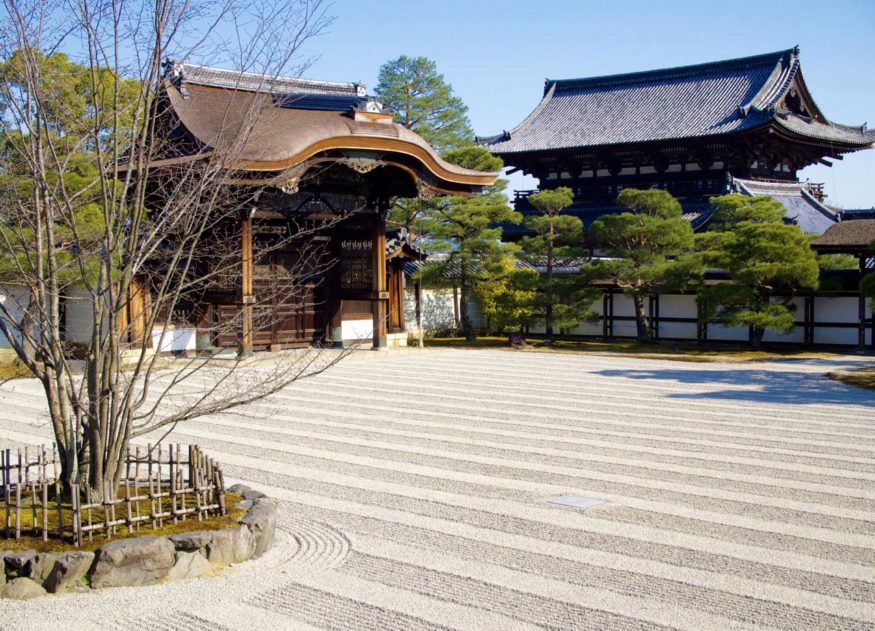
Not only does Kyoto hold an impressive quantity of temples and castles, it is strategically located on the Tokaido Shinkansen line for easy side trips and has plenty of mouth-watering restaurants to keep your appetite satisfied. Speaking of which, most of the noteworthy temples are located in the same area north-west of the main train station, making it easy to visit all of them on a single day: I’m specifically thinking of Kinkakuji (the Golden Temple), Ryoanji and Toji-in temples.
Other fun things to do in Kyoto? Arashiyama (bamboo grove, monkey park, splendid hiking opportunities), Ginkakuji (the Silver Pavilion), Toji Temple (believe it or not, it’s an entirely different temple), Philosopher’s Walk and Higashiyama historic district.
Handy tip: if you’re planning on wearing sandals or go commando in your shoes, bring a pair of socks with you; this being Japan, you won’t be authorised to enter temples with your shoes on or barefoot.
Also, a side note about maikos and geishas in Gion: whatever you do, remember to be respectful to geishas you encounter. If you want to take a picture of them, just ask – a lot of geishas have complained in recent years that tourists act like ruthless paparazzi. Please don’t be that person!
Where I stayed in Kyoto
- Hotel Granvia Kyoto
Kyoto guided tours & day trips:
- Kyoto full-day sightseeing tour
- Kyoto Imperial Palace, Golden Pavilion and Nijo Castle
- Samurai school
- Arashiyama & Sagano bamboo private tour with nationally-licensed guide
- Nighttime all-inclusive local eats and streets, Gion and beyond
- Fushimi Inari hidden hiking tour
- Traditional tea ceremony wearing a kimono in Kyoto
- Izakaya-style cooking class
- Japanese archery experience in Kyoto
Fushimi Inari shrine in Kyoto – in photos
Nara // 1 day.
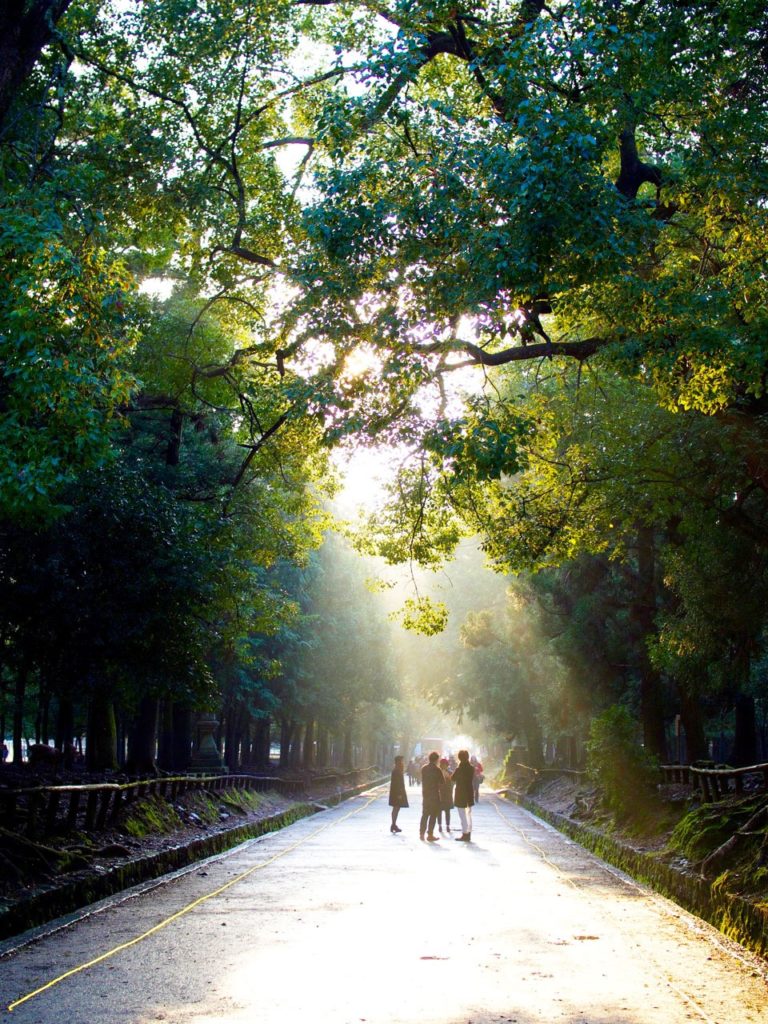
It just ticked all the boxes of things you expect to find in a place like Japan: cute animals, wareshinobu -clad maikos, immense Buddhist temples, and mystical forests. I found all that here, in this small city just outside Kyoto. Although a destination in its own right (there are a few hotels near the train station), Nara is a worthwhile day trip from the ancient capital. It was Japan’s first permanent capital in the year 710; as such, it is home to over eight UNESCO World Heritage Sites, second only to Kyoto as a directory of Japan’s cultural heritage.
Things to do in Nara
- Tōdai-ji : the largest wooden building in the world, which, astonishingly enough, is actually a mere two-thirds of its estimated original size. It contains the Great Buddha (not an understatement, at 16 metres high and 437 tonnes of bronze) is housed inside.
- Horyuji Temple
- Nara Park and its equal parts tame, hungry, and adorable deer
Day trips to Nara from Kyoto
- Highlights of Nara by bike
- Nara craft beer and sake walking tour
HIMEJI // 1 day
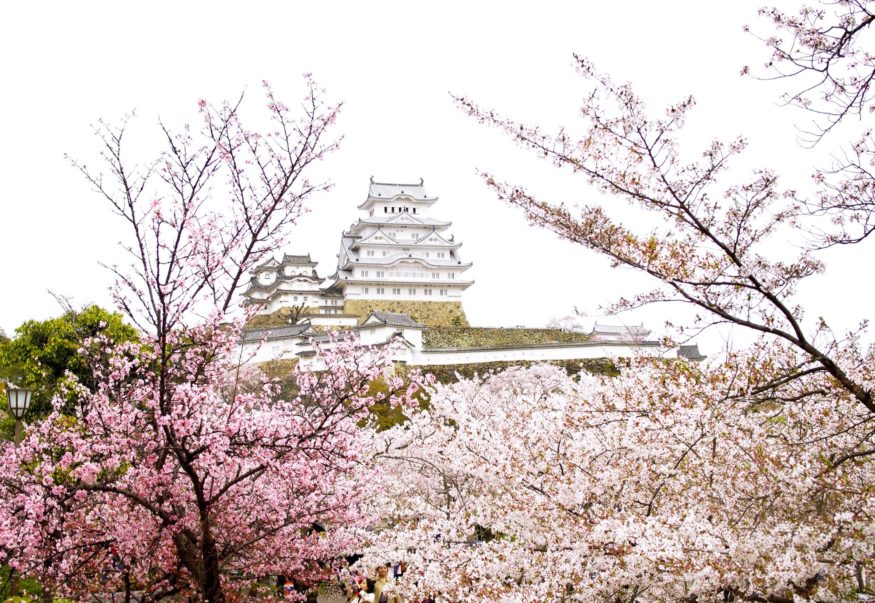
Confession time: I didn’t actually go inside Himeji Castle . I unknowingly turned up two days after the castle had reopened following massive renovations, and frankly I wasn’t too keen on the three-hour long queue. I decided to stick to the flowery gardens instead, knowing that another fabulous castle was on my itinerary later in the week.
Where I stayed in Himeji
- Daiwa Roynet Hotel Himeji
Day trips to Himeji
- Himeji full-day private tour with nationally-licensed guide
+ himeji travel tips
Why you should visit japan during cherry blossom season, hiroshima // 1 day.

You simply can’t travel along the southern coast of Honshu Island — or plan any Japan Itinerary — and not spend some time in Hiroshima. Even though Hiroshima was largely obliterated by an atomic bomb —ironically named Little Boy— during World War II, the city is now thriving and well. Hiroshima Castle and Shukkeien Garden, two major monuments pertaining to Hiroshima’s historical heritage, were destroyed during the bombing and were later on reconstructed; they can be visited today.
The UNESCO A-Bomb Dome acts as a stark symbol of Hiroshima’s newfound peace, as only the skeleton of what once was Hiroshima Prefectural Industrial Promotion Hall building remains. Nearby is the lush and leafy Peace Memorial Park, built over the former business district, which commemorates people who lost their lives on that fateful day in 1945.
Hiroshima guided tours & day trips:
- Hiroshima half-day private custom tour with licensed guide
- Hiroshima cycling peace tour with local guide
- Okonomiyaki cooking class
- Hiroshima bar-hopping food tour
MIYAJIMA // 1 day

Almost right across the bay from Hiroshima is the quaint island of Miyajima , home to the iconic Itsukushima Temple. Its claim to fame is undoubtedly the bold Itsukushima Shrine , which dramatically soars 16 metres high out of the water; it’s often referred to as a “floating torii gate” in popular culture. Interestingly, it’s possible to walk right up to the shrine at low tide—which is why I highly recommend spending a full day on Miyajima.
Aside from the shrine, there are plenty of exciting hiking trails in Miyajima , most specifically around Mount Misen . For great views with zero physical effort, try Shishiiwa Observatory which is only accessible by cable car .
Miyajima guided tours & day trips:
- Authentic tea ceremony experience while wearing Kimono in Miyajima
- Visit World Heritage site Itsukushima Shrine by sea
- Oyster harvest with local oyster farmers
KANAZAWA // 1 day
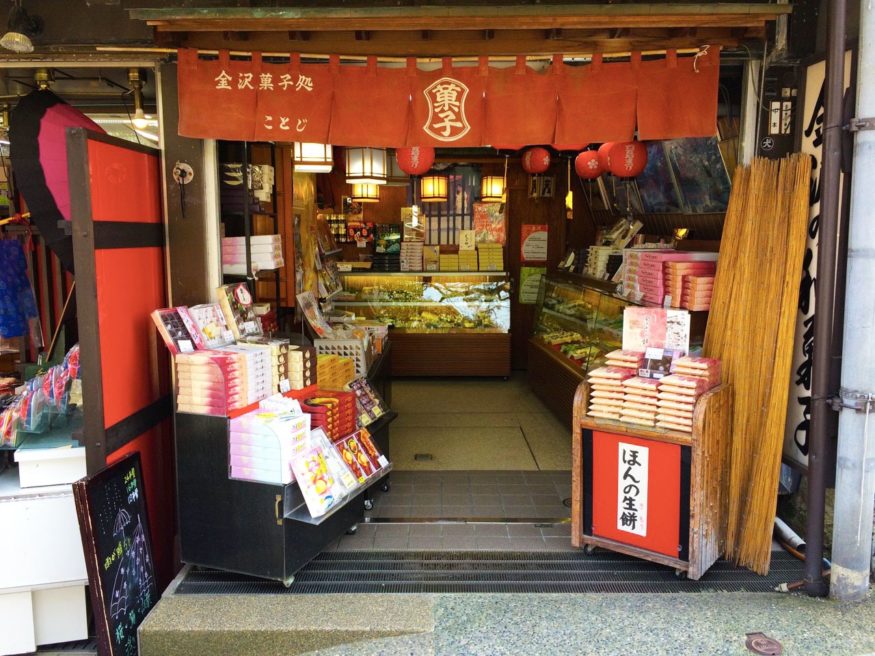
I wanted to visit Kanazawa because of its famously well-preserved heritage from the Edo Period when it served as the seat of the powerful Maeda feudal Clan. It was one of the wealthiest clans in terms of fief sizes and rice production, but with great power come equally great threats. The Maeda clan, therefore, employed several samurais and offered them property at the foot of Kanazawa Castle in Nagamachi District , which can still be visited today.
Japan’s most celebrated landscape garden, Kenrokuen , as well as Higashi Chaya District , filled with ancient wooden teahouses where geishas work and perform, are both well worth a few hours.
Hotels in Kanazawa
The Square Hotel KANAZAWA
+ nagano travel tips
Where i stayed in nagano: yamanouchi ryokan, japanese alps // 2 days.
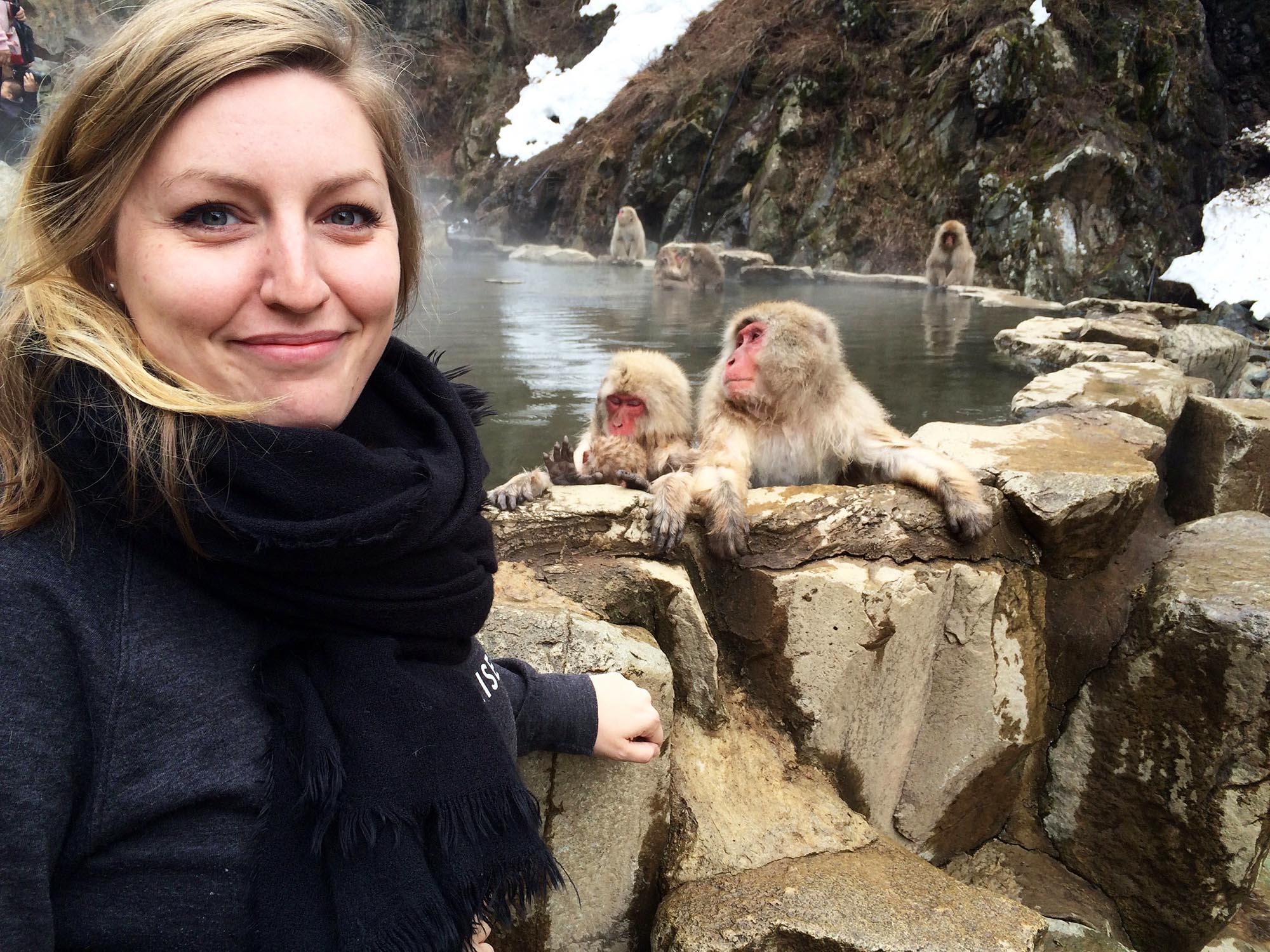
Moving on to the Japanese Alps for the last few days of this Japan itinerary, where I had planned on hanging out with snow monkeys and experience a ryokan with an onsen and a traditional dinner.
It was absolutely perfect and even though I was terrified of committing a cultural faux-pas I managed to make it out unscathed, and infinitely more appreciative of my time in the Nagano prefecture.
Janapese Alps guided tours & day trips:
- Full-day tour of snow monkeys, Zenko-ji Temple and sake in Nagano
- Explore Jigokudani snow monkey park with local guide
- Nagano private 2-day tour with guid and overnight at ryokan
Hiking to Jigokudani and meeting monkeys in Japan
Matsumoto // 1 day.
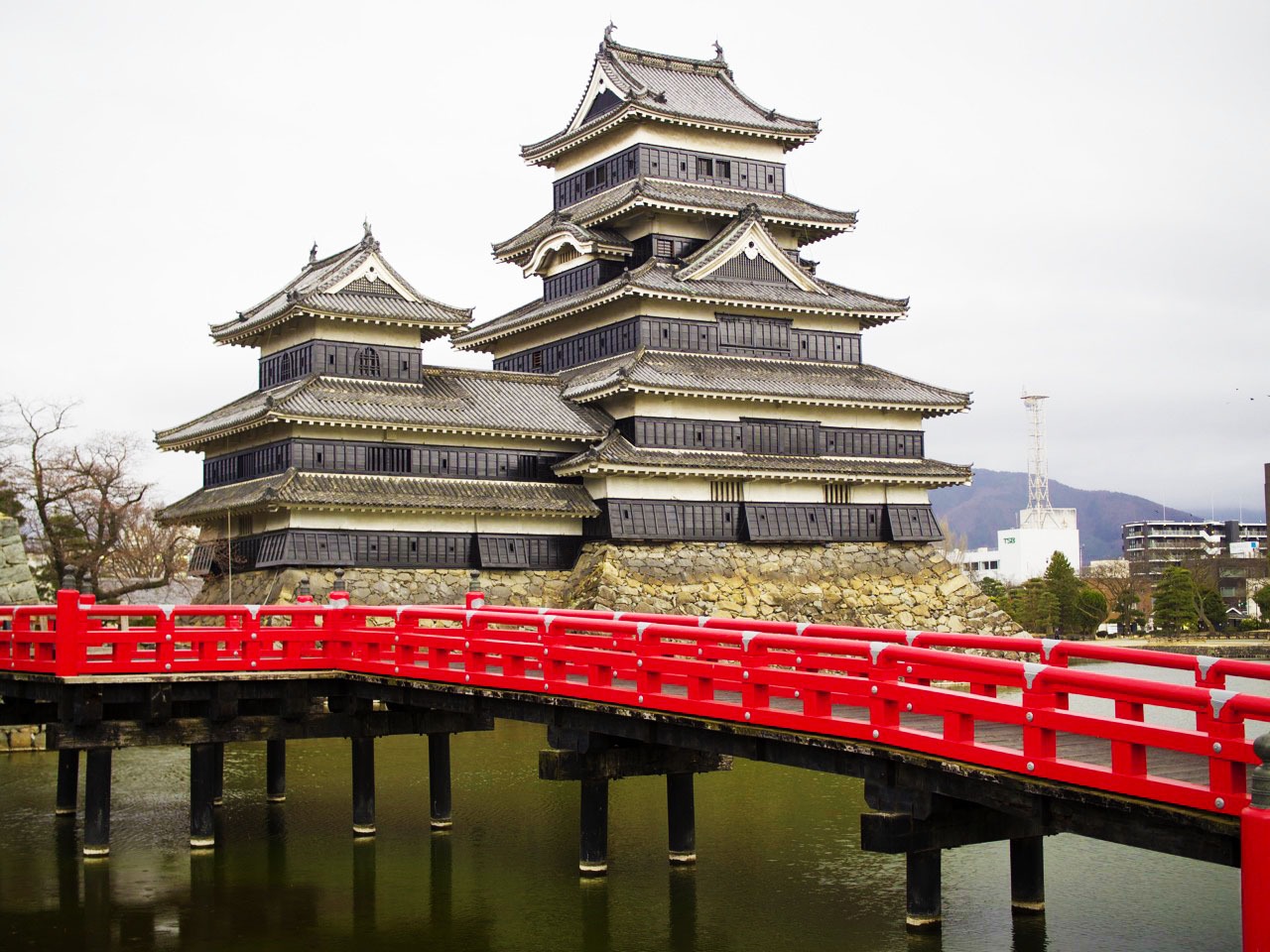
The detour on this Japan Itinerary by this somewhat underrated portion of Honshu Island was mainly to visit Matsumoto Castle , one of Japan’s premier historic castles and a splendid work of art. Its value is simply inestimable, as it still contains original wooden interiors and external stonework. It really was a fascinating journey into the history of the military in Japan; the castle is awash with secret passageways, tricky steep stairs, and other secrets that only samurais were privy to. I think I ended up having a much better and more informative time at Matsumoto than I would have at Himeji, which was way too crowded.
Hotels in Matsumoto
Matsumoto Hotel Kagetsu
Matsumoto day trips and guided tours
- Matsumoto half-day private tour
- Matsumoto castle, sake, food & craft beer walking tour
- Matsumoto castle tour & samurai experience
- Japanese Alps Kamikochi day hike from Matsumoto
Marie-Eve is a native Montrealer trying to balance a deep love for her hometown and an unquenchable thirst for travel and discovery. She has been to more than 36 countries, lived abroad in both France and the U.K., and is always on the lookout for authentic experiences wherever she travels -- especially if it involves wine.
Similar Posts
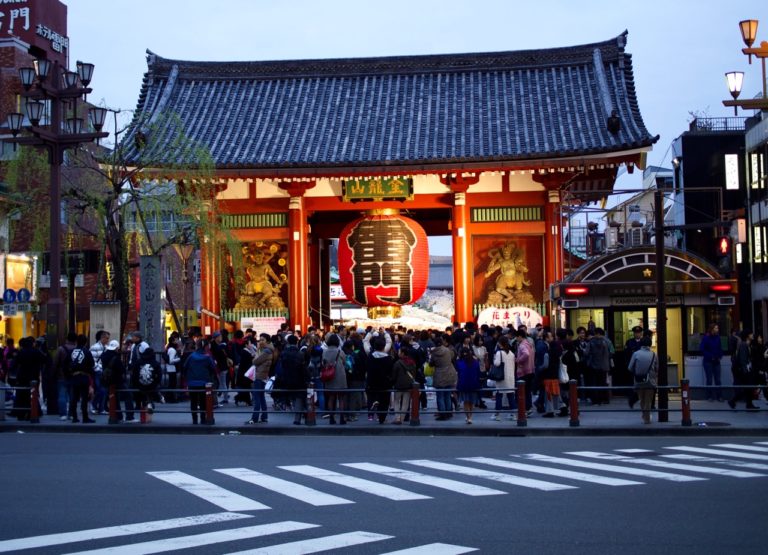
I admittedly knew very little about Japan before I stumbled upon extremely cheap tickets to Tokyo last year and impulsively…
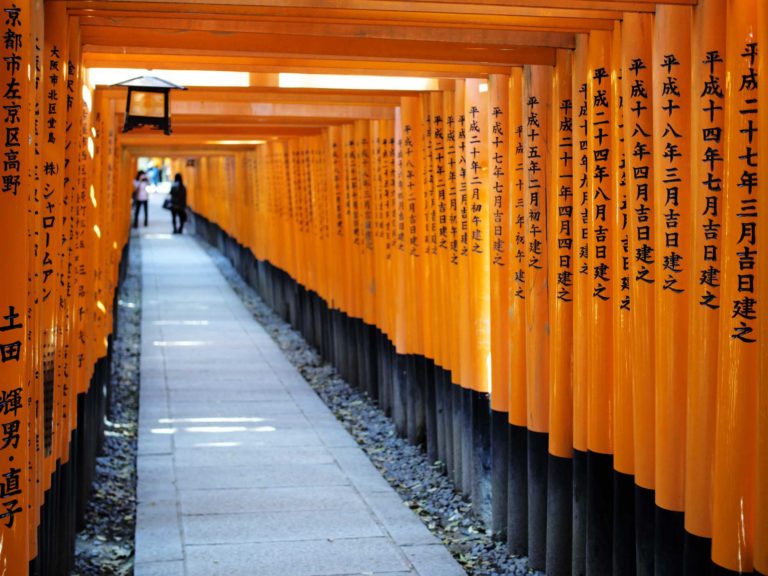
5 useful tips for visiting Fushimi Inari shrine in Kyoto
I woke up to the best intentions that day; get ready in five minutes and head straight to the Fushimi…
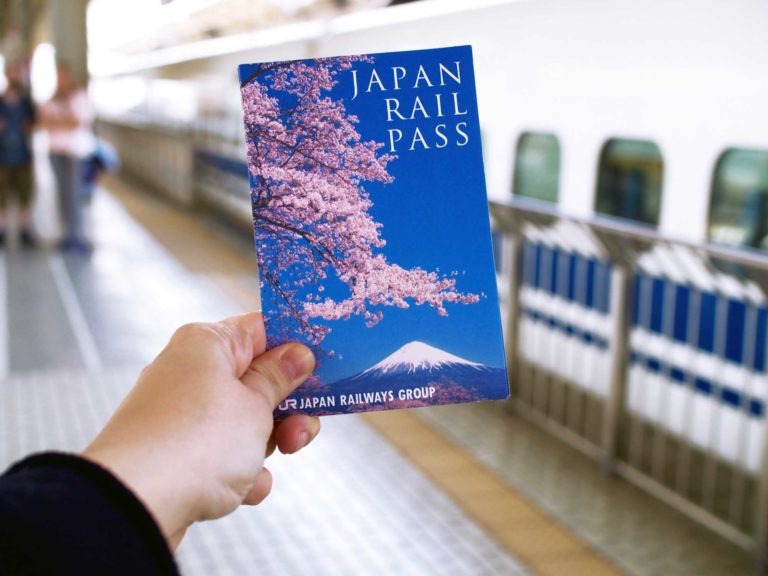
When you think of transportation in Japan, obviously the Japan Rail Pass comes to mind. Experiencing the world-famous bullet trains…
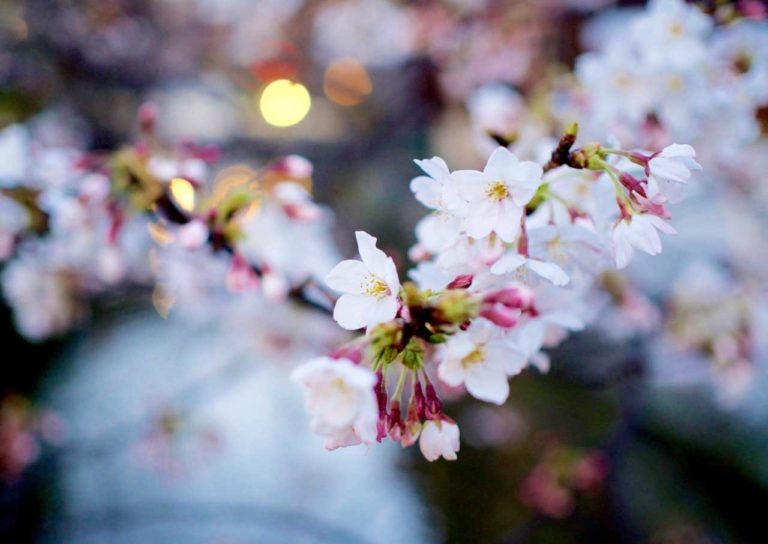
Where and when to see cherry blossom in Japan
Did you know that cherry blossom in Japan is a WHOLE THING? Not only does the Japanese meteorological office dedicates…
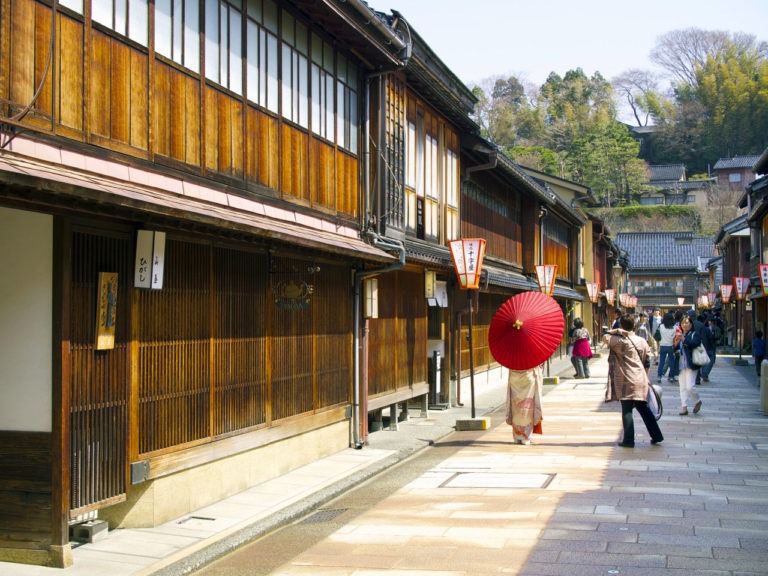
Things To Do in Kyoto: Highlights For First-Time Visitors
Travelling to Japan for the first time, but unsure where to start? The land of the rising sun, still deeply…
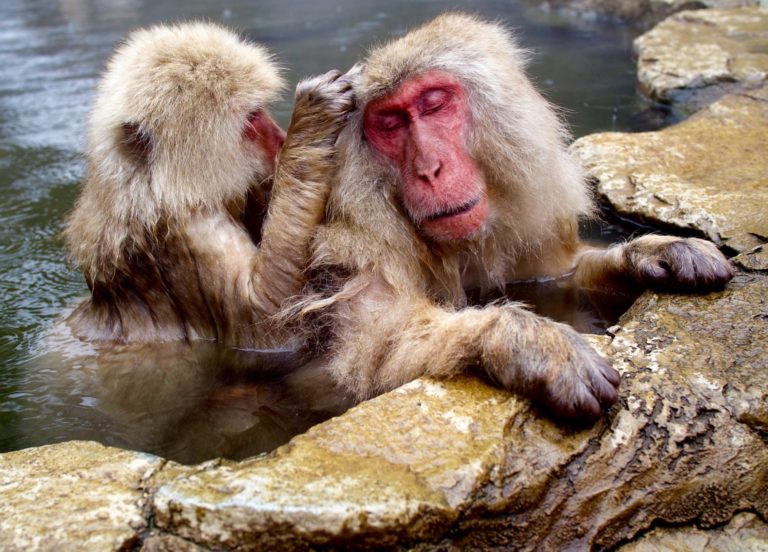
It was misty and bitingly humid that morning in the Japanese Alps, much like what I had anticipated. As I…

- Destinations
- Trip Styles
- Customize Trip
South-East Asia
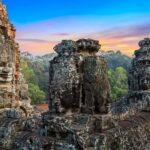
Travel Guide
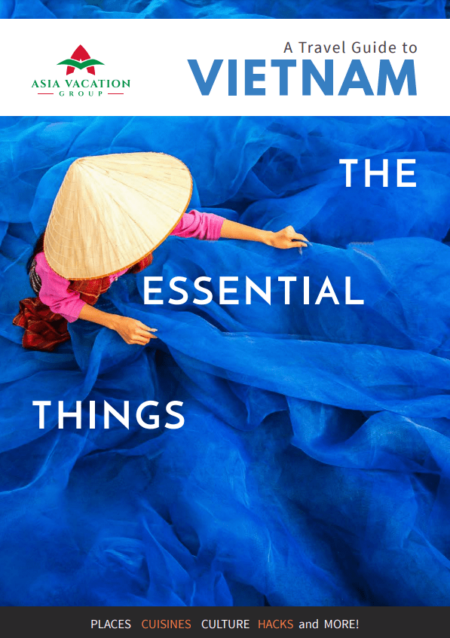
Trip Styles Including

Get more useful information
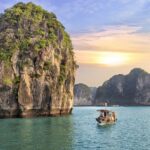
20 Day Trails Of Japan
Australian Company Owned
Small Group Size (from 10 pax to 16 pax)
Relaxed Itinerary
7 Day Change of Mind to get the full Refund
Day by day itinerary.
Sapporo, Hakodate, Sendai, Kanazawa, Osaka, Hiroshima, Kyoto, Tokyo

- Shinkansen train included (must try in Japan)
- Visit the iconic Sapporo Beer Museum
- Incredible sightseeing, including breathtaking Mount Fuji, Hiroshima Peace Memorial Park, beautiful temples, shrines and castles like UNESCO World Heritage Sites Golden Pavilion, Himeji Castle, Itsukushima Shrine and relax time in Sapporo.
- Standard 3-star hotel accommodations
- Daily breakfasts in the category chosen or similar (subject to availability)
- All transfers & admission as mentioned
- Escorted by professional, English-speaking guide
- All entrance fees to the sites listed (except optionals)
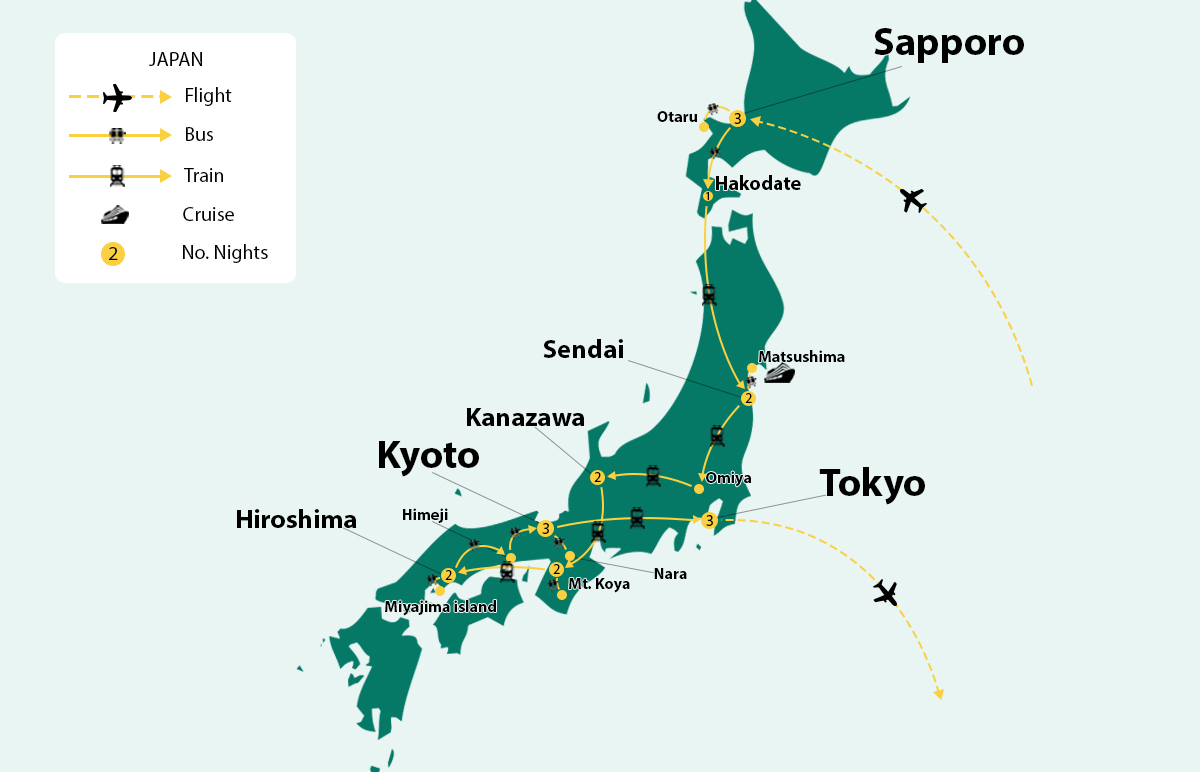
Hokkaido Arrival
You will board a flight from your home to Hokkaido. Welcome to Japan, our driver will meet and take you to your hotel for check in. If time permits, you will visit Odori Park. You will stay overnight in Sapporo Meal: In-flight meals. Accommodation: Ibis styles Sapporo 3* or similar
Remark: You might depart your home one day earlier depend on the flights.
Sapporo City Tour
After your breakfast, you will have a full day to visit Sapporo Clock tower – the oldest clock tower in Japan, Sapporo beer Museum – a museum located in the Sapporo Garden Park in Higashi-ku, Sapporo, Hokkaido that is registered as one of the Hokkaido Heritage sites in 2004, the museum is the only beer museum in Japan and visit Susukino – Japan’s largest entertainment district north of Tokyo. It is packed with stores, bars, restaurants, karaoke shops, pachinko parlors and red light establishments.
In the afternoon, you will return to your hotel and stay overnight in Tokyo. Meals: Breakfast Accommodation: Ibis styles Sapporo 3* or similar
Sapporo Otaru Sapporo
Today, you will a full day to visit Otaru Canal – a central part of the city’s busy port in the first half of the 20 th century, Kitaichi glass museum, Music box museum, Sakaimichi (shop) and Susukino (Shop). Late afternoon, you will return to your hotel. Meal: Breakfast. Accommodation: Ibis styles Sapporo 3* or similar
Sapporo Hakodate
After breakfast, you will have a day to visit Motomachi area (Strolling outside), Kanemori redbrick warehouse – a commercial complex consisting of four facilities, which were built after renovating an old red brick warehouse built in 1909. Next to visit to Mt Hakodate – an inactive volcanic mountain in Hakodate, Hokkaido. The mountain is renowned for its view of the surrounding bay and city. Afternoon, you return to your hotel. Meal: Breakfast Accommodation: Hotel Resol Hakodate 3* or similar
Remark: Please collect the luggage in front of the lobby before 08.00 am, Luggage transfer Next day Included to Sendai to Hakodate.
Hakodate Sendai
After breakfast, you will head to Goryokaku (Photostop/Tentative do to the train) and then will take from Shinkanshen to Sendai Miyagi JR.
On arrival Sendai Station, you visit to Sendai Castle – a Japanese castle located in Sendai, Miyagi Prefecture. Throughout the Edo period, Aoba Castle was home to the Date clan, daimyo of Sendai Domain. The castle was also known as Sendai-jo. In 2003, the castle ruins were designated a National Historic Site, next to spend your time at the shopping area called Sunmalla Ichibancho. Overnight at hotel. Meal: Breakfast. Accommodation: Hotel Vista Sendai 3* or similar
Sendai Matsushima Sendai
After breakfast, you will have a day to explore Matsushima, enjoy your time on Matsuhima Cruise and visit Zuiganji Temple – a Rinzai Zen Buddhist temple in located in the town of Matsushima, Miyagi Prefecture, Japan. Belonging to the Myōshin-ji-branch of Rinzai Zen, it was founded in 828 during the Heian period by Jikaku Daish. Late afternoon, you return to your hotel and spend your free time. Meal: Breakfast. Accommodation: Hotel Vista Sendai 3* or similar
Sendai Omiya Kanazawa
After breakfast, you will check out your hotel and take train from Omiya Station to Kanazawa Station. On arrival, you will visit Higashi Chaya District before being checked in your hotel. Meals: Breakfast Accommodation: Hotel Vista Kanazawa 3* or similar
Remark: Please collect the luggage in front of the lobby before 08.00 am, Luggage transfer Next day Included to Osaka.
Kanazawa City tour
After breakfast you will have a full bustling day to explore Kanazawa such as: Kenrokuen Garden – one of only 3 ‘perfect gardens’ in Japan, this park is designed to be beautiful during every season, Omicho Market – spacious, indoor complex with stalls selling fresh produce, seafood & meat, plus specialty dishes and lastly Hogahsi Chaya District (Shop). Return to your hotel in the afternoon and stay overnight in Kanazawa. Meals: Breakfast Accommodation: Hotel Vista Kanazawa 3* or similar
Kanazawa Osaka
After breakfast, you will check out to get the train from Kanazwa Station to Osaka. On arrival, our driver will meet and take to Dotonbori and Shinsaibashi – one of the principal tourist destinations in Osaka, running along the Dotonbori canal from Dotonboribashi Bridge to Nipponbashi Bridge in the Namba district of the city’s Chuo ward. Stay overnight in Osaka. Meal: Breakfast. Accommodation: Sarasa Hotel Shin-Osaka 3* or similar
Osaka Mt.Koya Osaka
After breakfast, you will head to Mt. Koya – a large temple settlement in Wakayama Prefecture, Japan to the south of Osaka, Okonoin Temple, torodo and Gokusho (Strolling) and then return to Osaka. Stay overnight in Osaka. Meal: Breakfast. Accommodation: Sarasa Hotel Shin-Osaka 3* or similar
Remark: – Next day Luggage transfer to Hiroshima – Bring only 1 Luggage to Koya
Optional tour: Osaka Food Tour
Osaka hiroshima.
Today, you will go to Shin Osaka Station to get the Shinkanshen to Hiroshima. On arrival, you will have time to explore Hon dori before being checked in your hotel and overnight in Hiroshima. Meal: Breakfast. Accommodation: Hotel MyStays Hiroshima Peace Park 3* or similar
Hiroshima {cruise} Miyajima {cruise} Hiroshima
After breakfast, you will visit Hiroshima Peace Memorial Museum – a museum located in Hiroshima Peace Memorial Park, in central Hiroshima, Japan, dedicated to documenting the atomic bombing of Hiroshima in World War II. The museum was established in August 1955 with the Hiroshima Peace Memorial Hall. Next to get the ferry to visit Miyajima a small island in Hiroshima Bay, western Japan. It is known for its forests and ancient temples. Just offshore, the giant, orange Great Torii Gate is partially submerged at high tide. It marks the entrance to the Itsukushima Shrine, which was first built in the 12th century. Nearby, the Museum of History and Folklore has cultural artifacts in a 19th-century merchant’s home. Late afternoon, you return to your hotel. Meal: Breakfast. Accommodation: Hotel MyStays Hiroshima Peace Park 3* or similar
Hiroshima Himeji Kyoto
Today, you will head to a city in the Kansai region of Japan – Himeji and visit Himeji Castle – a hilltop Japanese castle complex situated in the city of Himeji which is located in the Hyōgo Prefecture of Japan. Then, you will leave Hiroshima for Kyoto. Check in and stay overnight in Kyoto. Meal: Breakfast. Accommodation: Urban Hotel Kyoto Nijo Premium 3* or similar
Today, you head to Nara to visit the Todaiji Temple – a Buddhist temple complex that was once one of the powerful Seven Great Temples, located in the city of Nara, Kasuga taisha – bright vermillion columns support the roof of this Shinto shrine originally established in 768 A.D, next to visit Nara Deer Park – a public park located in the city of Nara, Japan, at the foot of Mount Wakakusa. Established in 1880 it is one of the oldest parks in Japan. Lastly, you will visit Gion/Nishiki Market. Return to Kyoto in the late afternoon. Overnight at hotel in Kyoto. Meal: Breakfast. Accommodation: Urban Hotel Kyoto Nijo Premium 3* or similar
Kyoto Nara Kyoto
Kyoto city tour.
After breakfast, you will have a full day to explore Higashimaya District – one of the eleven wards in the city of Kyoto, Kiyomizudera – a Buddhist temple located in eastern Kyoto, a part of the Historic Monuments of Ancient Kyot UNESCO World Heritage site and next to explore Nishiki Market – a marketplace in downtown Kyoto, located on the east end of Nishikikoji Street, one block north and parallel to Shijo Street and west of Teramachi Street. Overnight at hotel in Kyoto. Meal: Breakfast. Accommodation: Urban Hotel Kyoto Nijo Premium 3* or similar
- Please collect the luggage in front of the lobby before 08.00 am
- Next Day Luggage Transfer to Tokyo
Kyoto Tokyo
After breakfast, you will check out your hotel and leave for Tokyo by a Shinkanshen.
On arrival, our tour guide will take you to explore the bustling city of Japan such as: Asakusa Sensoji Temple – an ancient Buddhist temple located in Asakusa, Tokyo. It is Tokyo’s oldest temple, and one of its most significant. Formerly associated with the Tendai sect of Buddhism, it became independent after World War II and explore Nakamise Street. Continue to visit Tokyo Skytree and Meji shrine – a Shinto shrine in Shibuya, Tokyo that is dedicated to the deified spirits of Emperor Meiji and his wife. After that, spend your time to explore Shibuya. Late afternoon, you return to your hotel. Meal: Breakfast. Accommodation: Hotel Villa Fontaine Kayabacho 3* or similar
Optional tour: Kyoto - Cycling Tour
Take a spin down the Path of Philosophy on this Kyoto tour that gives you an overview of the city while using a mode of transport preferred by locals: the humble bicycle. See shrines, temples and mountains — this is an enlightening escape from the city. Cycle along the ancient canals of Kyoto, stroll through the expansive grounds at Nanzenji Temple and discover the meaning of tranquillity along the famous Path of Philosophy.
Today, you will have full day to explore and shopping at Shinjuku, Akihabara – a buzzing shopping hub famed for its electronics retailers, ranging from tiny stalls to vast department stores like Yodobashi Multimedia Akiba, Ginza – one of the city’s top shopping districts, Ginza is packed with upmarket boutiques and ritzy cocktail and sushi bars. Overnight at hotel in Tokyo. Meal: Breakfast. Accommodation: Hotel Villa Fontaine Kayabacho 3* or similar
Today, you are free time at leisure until we transfer to the airport for flight back home. Meal: Breakfast. Accommodation: On Plane
Optional tour: Nikko Sightseeing
Take a coach ride to see some of Japan’s most picturesque scenery in the Nikko region. Chuzenjiko Onsen is a hot spring resort town on the shores of Lake Chuzenji at the foot of Mount Nantai. The small town offers some beautiful sightseeing spots, including Chuzenji Temple, a Futarasan Shrine, a nature museum and Kegon Waterfall. It is also the departure point of sightseeing cruises on the lake. The almost 100 meter tall Kegon Waterfall (Kegon no taki) is the most famous of Nikko’s many beautiful waterfalls.
Optional tour: Disneyland and Disney Sea
The Japanese love all things Disney. Tokyo Disneyland was the first Disney theme park outside of the United States. It is made up of seven themed lands and Mickey is always in attendance.Tokyo DisneySea is a fantasy water themed park and is part of Tokyo Disney Resort, unique to Japan. It too, is made up of seven themed “ports of call”.
This morning, you will arrive your home and end of your memory trip in Japan with Asia Vacation Group.
- Shinkansen Train
- Shinkanshen Hakodate – Sendai, Sendai – Kanazawa
- Next day Luggage Transfer Sendai – Kanazawa
- Shinkanshen Reserved Seat Kanazawa to Osaka
- Next Day Luggage Transfer Kanazawa to Osaka
- Next Day Luggage Transfer Kyoto to Tokyo
- Shinkanshen Reserved Seat Osaka to Hiroshima
- Next Day Luggage Transfer Osaka to Hiroshima
- International Flight
- Meals and drinks are not mentioned in the program
- Tipping for driver and tour guide (suggestion: 10AUD/pp/day)
- Travel insurance (we strongly recommend you hold a valid travel insurance policy for all domestic and overseas travel)
- Trip delay or interruption by airline schedule change
- Extra cost or missing tour caused by flight delay or cancel
- Any service not clearly mentioned in the program
- Luggage transport service – Next day service by courier JPY 3000 per luggage – Same day service by luggage truck KAWAGUCHIKO – OSAKA JPY 96,800 (2 ton/ max 50 luggage)
- Optional standard meal (Lunch: JPY 1800/pax/ lunch; Dinner: JPY 3500/pax/dinner )
How to book and Payments
Asia Vacation Group offers you a “3 Instalment Payment Plan”, you will be required to settle a small deposit followed by a series of instalments when you select to book your departure tour
- First payment: You will be required to settle $300 per person deposit online through our website link.
- Second payment: You will be required to settle second payment at $2,000 per person after 7 days deposit.
- Final payment: Final payment will be collected at 120 days before your travel and you will only pay when you receive our company invoice.
Flexible Cancellation If you change your mind within 7 days of making your booking online, you can request a refund of your initial deposit payment. Once your purchase date falls outside of the 7-day period, our standard terms and conditions will apply.
Please ensure that any request to cancel your booking is received via email to [email protected] , including the reason for cancellation .
Flight Information
This package excludes international flights.
Airfare Information – Airline: Cathay Pacific, Singapore Airlines or similar (20kg for checked baggage per passenger and 7kg hand luggage per passenger, 01-piece check-in baggage each person only – Some flights will require a minimum of 1 transit (maximum 2). – All tickets will include 20 kilos checked baggage per person, along with 7 kilos of hand luggage. – Despite the airlines baggage allowance, we recommend travelling with 20 kilos per person due to restrictions with internal flights (where applicable), as well as coach and train transportation. Also, you will be responsible for handling your luggage at all times as the services of porters is not included. If travelling over this amount, you will be liable for any excess baggage fees enforced by the airline, payable direct. – Once ticketed, flights are non-refundable. Any changes will be subject to the airline rules and change fees. – Full names as per passport (including all middle names) are required. – Any airline schedule changes or cancellations are beyond our control. – Any airline ‘extras’ such as pre-allocated seating is at your own arrangement (additional charges apply)
Important Information
Travel Insurance Travel insurance is required to protect yourself against the unexpected. We have partnered with NibTravel Insurance to offer you competitive rates for your travel insurance. You can book comprehensive or budget cover simply to arrange your policy.
Tipping A friendly reminder that tipping is not included in your package. Please be advised that tipping for tour guides, drivers and bellmen are required and will be collected by your travel consultant 7 days before you depart. A gratuity of $10 per person/day can make a big difference to locals employed in the tourism industry as they have done an impeccable job to serve you through your holiday.
Accommodation The accommodation listed is subject to change. Any changes will be of an equal or higher standard. Bedding configurations (double or twin) are requests only. All efforts will be made to meet your preferences however any changes are beyond our control.
Single Supplement Single supplement is $2,450 per person in addition to the twin share price.
Paired Solo Traveler Not available.
Group size: min from 10-16 pax
Triple Share Upon your request except for cruises
Visa & Passport information It is the traveler’s responsibility to ensure they have a valid passport. The passport must be valid for a minimum of six months from the intended date of return and must have more than 2 blank pages.
Australian passport holders do not need a visa to travel to Japan, for stays less than 90 days.
Tour Documentation Final documentation, including e-tickets and hotel details, will be provided approximately 30 days prior to travel.
Children Children must be 2 years old or over and share a room with parents at all times. Children are the same price as adults.
Tour Length The total length of the tour in days includes time spent in flight and is subject to change depending on the flight schedule, please refer to the day by day itinerary for the time spent on land.
Cherry Blossoms Please note that Cherry Blossoms are weather dependent and it is not guaranteed that they will be in bloom at the time of your arrival.
Luggage Policy:
1 Passenger is limited to carrying a maximum of 2 Suitcases with following Dimensions;
1 Suitcase having measurement of L 51 cm x W 31 cm x H 77 cm, with maximum weight 30 KG
1 Common Carry on Cabin Suitcase having L 38cm x W 23cm x H 60cm, with maximum weight of 10kg
Extra Charge for transfers is needed for any overweight and over quota luggages
* Drivers’ working hours are regulated by Ministry of Land, Infrastructure, Transport and Tourism
* Driver’s daily working hours may not exceed 12 hours, including leaving/returning/standby time (average service hours: 09.00 – 20.00)
* Daily driving time shall not exceed 9 hours. In addition to this, driver must have a daily rest period of at least 8 consecutive hours.
* Daily driving distance shall not exceed 500 KM.
* ONLY 1 piece of large suitcase per guest will be accepted to be loaded in coach trunk.
* Should there the bus trunk capacity is FULL, Guests have to bear the luggage transfer cost according to their respective dimension or weight.
* If over 35 pax/coach, luggage transfer truck is required on Arrival and Departure.
* Regarding current official government guidelines in safe coach operation, passengers may be required to wear masks and body temperature screening will be conducted whenever it is necessary.
* There is also a possibility of changing in passenger capacity per coach to keep passengers apart from each other. (ex. Maximum 25 pax per coach) Therefore, with this in mind, please note that price may change based on government measures.
How to Extend Your Stay
Some customers like to enhance their holiday by extending their stay before/behind and/or post-tour. $200 per person is applied for trip extension or early arrivals. If you wish to do so, please follow these steps:
- Follow the “Book Now” prompts, until you reach the “Anything else we need to know?” field
- Here, please specify your preferred flight arrangements and if you require additional accommodation, with the number of nights needed.
- After finalising your purchase and submitting your booking form, a member of our Reservation team will be in contact with you via email to verify your request.
The additional cost for these land arrangements will be added to your final payment invoice, due 90 days prior to departure, and is strictly subject to availability. From $200 per person is applied for trip extension or early arrivals (subject to availability and applicable fare difference).
Dates & Prices

Real Travelers Reviews
Wide variety of well priced tours of asia. i found the tours available to choose.
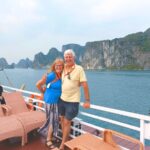
Our holiday was an amazing experience we enjoyed the scheduled tours all were very interesting.
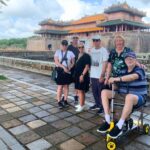
We were very happy and had no problem at all when booking
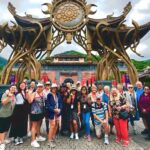
This is the 2nd time that I have booked with Asia Vacation
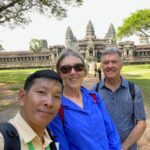
A Hanoi Interlude with Asia Vacation Group

14 Day Vietnam and Cambodia tour.

Latest Travel Guides
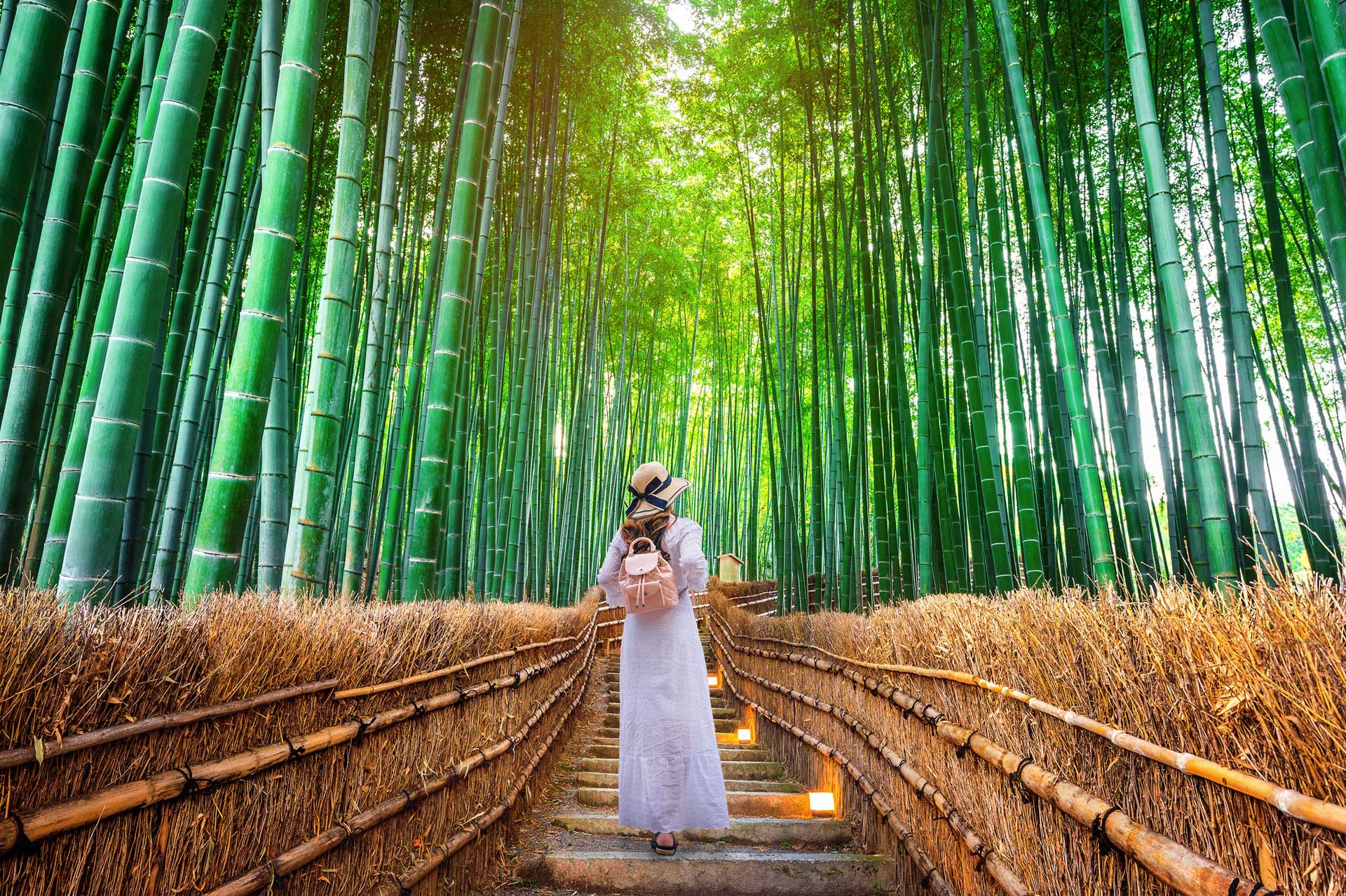
Japan – a place you don’t wanna miss!
May 20, 2024
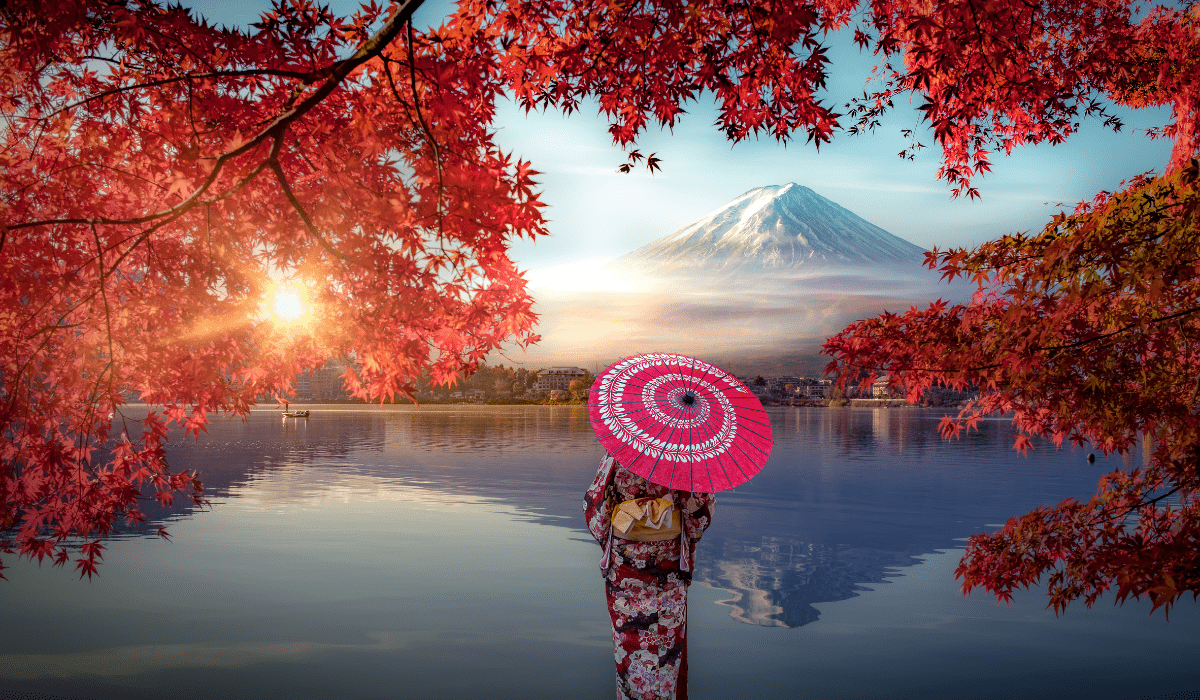
Japan in Autumn Foliage – A Guide For Your Visit
April 1, 2024
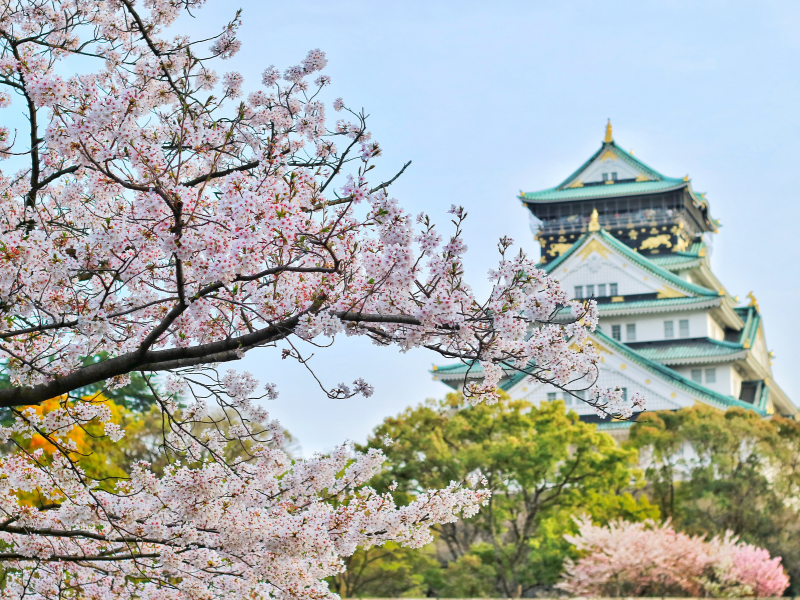
4 Unique & Best Places to Visit in Japan for Every Traveler
February 22, 2024
Let’s planning your vacation
RESERVE YOUR SEAT NOW
Reserved your seat with a small deposit and you can change your mind in 7 days.

Register an account
Remember Me
Forgot your password?
Sign in with Facebook
Sign in with Google
EOFY SALE TODAY
Sign up to stay updated on our best price ever deals to incredible destinations. Don't miss out!
No Spam. Plus, unsubscribe anytime.
Early booking offers ending in
CALL US FREE ON 01695 577 961
OPEN AGAIN AT 09:00 - 17:30
Classic escorted tours.
- 11-day The Golden Triangle & Ranthambore Tour
- 14-day Golden Triangle & Goa Tour
- 14-day Splendours of Kerala Tour
- NEW! 17-day Indian Wildlife Adventure Tour
- NEW! 19-day The Very Best of Southern India Tour
- 25-day Grand Tour of India
- 13-day Temples & Tigers Tour
- NEW! 16-day Highlights of Southern India Tour
- 17-day Temples, Tigers & Goa Tour
Private Tours
- NEW! 14-day Deccan Odyssey’s Grand Heritage Tour
- NEW! 15-day Deccan Odyssey’s Cultural Discovery Tour
River Cruise
- NEW! 17-day The Brahmaputra River & Darjeeling Tour
- 17-day The Very Best of Sri Lanka Tour
- NEW! 14-day Treasures of Sri Lanka Tour
Holiday Extension
- 3-night Sri Lanka Beach Stay
- 19-day Essential Australia Tour
- 22-day Wonders of Australia Tour
- 26-day Christmas & New Year in Australia Tour
- NEW! 27-day Australia’s East Coast Jewels
- 29-day Treasures of Australia Tour
- 29-day The Very Best of Australia Tour
- 24-day Magnificent New Zealand Tour
- 24-day Natural Wonders of New Zealand Tour
- 27-day New Zealand by Rail, Road and Sea Tour
- 28-day The Very Best of New Zealand Tour
- 31-day Highlights of Australia & New Zealand Tour
Combination Tours
- 44-day to 61-day Australia & New Zealand Combination Tours
- 20-day The Very Best of Japan Tour
- 23-day The Very Best of China Tour
- NEW! 15-day Classic Vietnam & Cambodia Tour
- 15-day Highlights of Vietnam Tour
- 22-day The Very Best of Vietnam & Cambodia Tour
- NEW! 18-day Discover Vietnam & Cambodia
- 3-night Mekong Delta
- NEW! 3-night Luang Prabang, Laos
Vietnam & Cambodia
- 14-day Grand Canadian Rockies Tour
- 21-day Grand Canadian Rockies & Alaskan Cruise Tour
Holiday Extensions
- 4-night Knight Inlet Tour
- 18-day Spectacular South Africa Tour
- 18-day Spectacular South Africa including Rovos Rail
- 25-day The Very Best of South Africa Tour
- 17-day African Rail Adventure
- NEW! 17-day Namibian Rail Safari
- NEW! 17-day South African Rail Discovery
Small Group Safari
- NEW! 13-day In Search of the Big Five
- 3-night Cape Town Tour
- 3-night Victoria Falls Tour
- 3-night Chobe National Park Tour
- 6-night Victoria Falls & Chobe National Park Tour
- NEW! 16-day The Very Best of Kenya Tour
- 5-night Diani Beach, Mombasa
New Zealand
Australia & new zealand, canada & alaska, south africa.
- 17-day African Rail Adventure Tour
- NEW! 17-day Namibian Rail Safari Tour
- NEW! 17-day South African Rail Discovery Tour
- 18-day Spectacular South Africa including Rovos Rail Tour
- 25-day Very Best of South Africa Tour
- NEW! 17-day The Brahmaputra River & Darjeeling
- NEW! 18-day Discover Vietnam & Cambodia Tour
- Private Tours of China
- Private Tours of India
- Private Tours of Sri Lanka
- Private Tours of Vietnam & Cambodia
- Private Tours of Kenya
It’s Your Time to Explore
It’s hard to sum up everything you’ll experience on a Distant Journeys holiday, but here we’ve tried to inspire you. With who you will become, what you will discover and, most importantly, the memories you will treasure forever. It’s Your Time to become…
- an Adventurer
- a Historian
- a Storyteller
10 Year Anniversary
We are celebrating 10 years of Distant Journeys. Since 2014, we have been designing and delivering an exciting style of touring holiday that meets exceptional standards and offers unbelievable value. Operated at a leisurely pace and providing unrivalled flexibility, our itineraries are perfectly tailored to the tastes of UK travellers.
- Find out more
- Escorted Touring Experience
- Holiday Styles to Suit You
- So Much Included
- Freedom & Flexibility
- Once in a Lifetime Experiences
- Hand-Picked Hotels
- Freedom to Explore
- Travelling with Distant Journeys
- Award-Winning Customer Service
- Meet the Distant Journeys Team
- Tour Managers, Guides & Coach Captains
- Refer a Friend
- Customer Reviews
- Financial Security
- Price Promise
- Special Offers
- REQUEST A BROCHURE
- CALL FREE 01695 577 961
Japan Escorted Tours & Holidays

SPECIAL OFFER:
Save up to £200 per person on Japan tour departing from September 2024 when you book by 1st July 2024. Request a brochure
- Japan Tours
Our Very best of Japan tour includes a 20-day guided itinerary, visiting the country's highlights
Culturally unique and scenically beautiful there is nothing quite like a holiday to Japan and it continues to grow in popularity. Alongside soaring skyscrapers, and neon lights, treasured ancient traditions like the graceful geisha, and the art of the tea ceremony still hold their place in daily Japanese life. Amongst the history and religious shrines, you’ll find modern cities, meet the politest people you are ever likely to encounter, dine on delicious local delicacies and discover why Japan continues to be a ‘must visit’ destination.
Our 20-day Very Best of Japan tour gives you the chance to see some of this amazing country’s best highlights at a leisurely pace. During the tour, you’ll visit some of the country’s best-known attractions and cities, such as Tokyo, Mount Fuji, Kyoto and Hiroshima. We will also show you some of Japan’s lesser-known spots and hidden gems, such as the beautiful preserved old towns of Takayama and Kurishiki and the delightful Higashi Chaya district in Kanazawa. We visit not one, but two of Japan’s most famous gardens, ride the famous bullet train, learn to make sushi and even have dinner with a Maiko, an apprentice Geisha. For those that wish there is also an opportunity to stay in a traditional Japanese Ryokan.
Along the way, you’ll be guided by our expert Distant Journeys Tour Manager, who is there to ensure you get the very best from your holiday, whether there are arrangements you need or you’re simply seeking advice on the local area.
With quality accommodation, breakfast, transport and several meals also all taken care of for you, our Very Best of Japan tour offers exceptional value for money as well as an adventure that you will never forget.
Save up to £200 per person on Japan tours departing from September 2024 when you book by 1st July 2024.
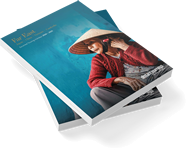
BROCHURE REQUEST
Order your free brochure
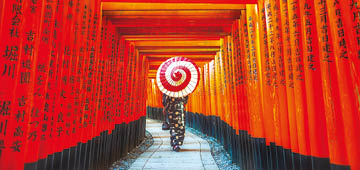
The Very Best of Japan
- See magnificent Mount Fuji
- Explore Tokyo, Kyoto and Hiroshima
- Watch a Maiko performance
20-day tour from £5,895pp £5,745 pp
- Exceptional Value
- Flexibility
Escorted touring experience
At Distant Journeys we are true escorted touring experts. From our knowledgeable Directors and Reservations consultants at Head Office to our Tour Managers on the ground, each person plays a unique role in ensuring you have the holiday of a lifetime.
We have extensive experience in the travel industry and in creating the best escorted tours of Japan from the UK. You can be confident that our escorted tours to Japan are of the highest standard.
Our success is evident having now become 13-time winners at the prestigious British Travel Awards, and we have been awarded Feefo’s highest Platinum Trusted rating.
Your money is 100% safe when you book with Distant Journeys. All our Japanese touring packages are fully-bonded by the Civil Aviation Authority (ATOL no. 10913).
Award-winning tours
We have won numerous awards at the British Travel Awards , most recently ‘ Best Small Holiday Company to Australasia ’, ‘ Best Small Holiday to Sub-Saharan Africa ’ and ‘ Best Small Escorted Tours Holiday Company ’.
Our customers are at the heart of what we do, and this is reflected across our company. We have received an incredible 4.8/5 customer experience rating with independent reviews provider Feefo , and were awarded its highest ‘Platinum Trusted’ rating, for consistently delivering an excellent level of customer service.
Japan holiday highlights
Escorted tours to Japan have many and varied highlights, and below are just some you will experience on the Distant Journeys Very Best of Japan tour:
- Tokyo – a leisurely three night stay in this amazing city, with 2 days of fantastic sightseeing and the opportunity to make sushi included
- Fuji-Hakone-Izu National Park – enjoy stunning scenery, a cruise on Lake Ashi and a cable car ride into the volcanic Owakudani Valley
- Mount Fuji – you’ll have ample opportunities to view Japan’s most iconic mountain, including a 2 night stay in the Fuji Five Lakes region
- Takayama – set in the spectacular Japanese Alps explore the picturesque old town lined with traditional houses, shops and restaurants
- Shirakawa-go – visit this unique UNECSO protected village, surrounded by the dramatic mountain landscape
- Kanazawa – a traditional Japanese breakfast, the spectacular Kenroku-en garden and a visit to a Samurai house are just some of the included sightseeing
- Kyoto – the cultural capital of Japan, enjoy some of the country’s most spectacular temples and shrines, during our three night stay
- Dinner with a Maiko – a unique opportunity to dine with a Maiko, an apprentice Gisha, who will perform traditional song and dance
- Bullet Train – take a ride on Japan’s famous train
- Hiroshima – learn the history, the thought provoking museum and the Memorial Peace Park
- Korakuen Garden – explore the second of Japan’s top three gardens and the pretty Bikan Chiku historical area of Kurishiki
- Himeji Castle – explore the magnificent finest surviving feudal castle in Japan
- Nara – meet the deer that roam freely through the city and who will bow for a treat
- Osaka – visit the famous streets around Dotombori for excellent street food
Providing exceptional value while maintaining the highest standards is at the heart of everything we do.
Superior Hotels
Distant Journeys appreciate the hotels in which you stay are an integral part of your holiday enjoyment, which is why we take great care in hand-picking all the accommodation features in our tours to Japan. Location and quality are always paramount considerations, and we strive to provide the best of both.
So many unforgettable experiences included
Visit Japan with Distant Journeys, and you’ll enjoy so many amazing experiences, at no extra cost. From dinner with an apprentice Geisha, to a journey on the bullet train, they’re all included in the price of your Japan tour package.
Our Japan tour includes
- Return economy class flights
- A choice of UK departure airports at no additional cost
- Superior hotels, with great locations
- Many meals included, worth up to £536 per person
- Several lunches and dinners sampling regional specialities
- Experienced tour managers and local guides
- Incredible excursions
- All pre-payable airport taxes
- All hotel porterage
- ATOL protection for your holiday
- No surcharge guarantee
At Distant Journeys, we think we’ve found the perfect balance of freedom and flexibility that every escorted tour of Japan needs.
Where would you like to fly from?
The choice is yours. On our 20-day Very Best of Japan tour , our flights with Cathay Pacific, via Hong Kong from London Heathrow, or Manchester. Alternatively, travel direct to Tokyo with Japan Airlines from London Heathrow (supplement from £295 per person). Just pick whichever one suits you best.
What would you like to do?
On an escorted tour, we think it’s important to still have the flexibility to enjoy experiences that really interest you. And our Very Best of Japan tour has a variety of included experiences plus some free time for you to do whatever you choose.
Stay a little longer?
Who wouldn’t? If you would like to extend your stay in Japan after your tour, you can! Arranging flights for you to accommodate this is all part of the service.
Special Offer
SAVE up to £200 per person! Book any of our Japan tours departing from September 2024, and save up to £200 per person. Offer ends 1st July 2024.
*Save £150 per person on holidays departing from September 2024 and save £200 per person on holidays departing from September 2025.
BOOK WITH CONFIDENCE
Award-winning holidays.
Distant Journeys has won 18 awards over the last seven years, at the British Travel Awards, and we have been awarded Feefo’s highest Platinum Trusted Rating for customer satisfaction.
Guaranteed Price Promise
Know you are paying the best price for your holiday with our Price Promise. We never offer last minute discounts and we guarantee the earlier you book the better the offer you’ll receive.
100% Financial Protection
Book in the confidence your money is 100% safe. All Distant Journeys holidays are fully bonded by the Civil Aviation Authority (ATOL number 10913) or ABTOT (number 5427).
ORDER YOUR BROCHURES TODAY
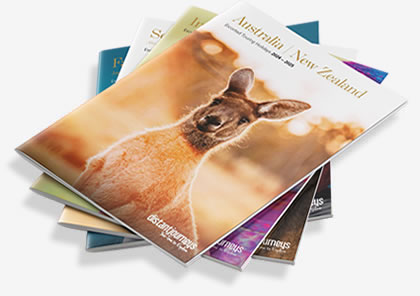
Planning your next holiday? Let Distant Journeys give you some travel inspiration.
There are three easy ways to request your brochures – just click on your preferred option below:
CUSTOMER REVIEWS

Receive News & Offers from Distant Journeys
In accordance with the latest GDPR data regulations, you can unsubscribe from our emails at any time. You can read our privacy policy that provides further information about how we use personal data.

Perfect Pairs
">Distant Journeys offer a number of combination tours that allow you to explore two countries in one.. Read More
Celebrating 10 years of Distant Journeys
">A special anniversary... This month we are celebrating 10 years of Distant Journeys. Since 2014, we.. Read More
DESTINATIONS
- Canada & Alaska Escorted Tours
- Australia Escorted Tours
- New Zealand Escorted Tours
- Australia & New Zealand Escorted Tours
- South Africa Escorted Tours
- Kenya Escorted Tours
- India Escorted Tours
- Sri Lanka Escorted Tours
- Japan Escorted Tours
- China Escorted Tours
- Vietnam & Cambodia Escorted Tours
HELPFUL LINKS
- Distant Journeys Official Blog
- Manage My Booking
- Environmental Policy
- Cookies / Privacy
- Booking Conditions
CONTACT INFORMATION
Distant Journeys, 8 Hattersley Court, Ormskirk, Lancashire, L39 2AY
Email: [email protected]
Distant Journeys - Copyright 2024.


IMAGES
VIDEO
COMMENTS
Plan a 20 day tour through Japan from Hokkaido to Hiroshima, and stop for top sights and experiences in Tokyo, Nikko, Kamakura, Hakone, Takayama, Shirakawago, Kanazawa, Kyoto, Nara, and Osaka.
21 days, 20 nights. one less day. The following is a suggested itinerary for first time travelers to Japan who spend 21 days and 20 nights in Japan, and arrive/depart from Tokyo 's Narita Airport. Day 1 - Arrive at Narita Airport. Arrive at Narita Airport and spend the rest of the day in Tokyo. Day 2-5 - Tokyo with sidetrips.
TOUR CODE: KR2. 20 days from Seoul to Hiroshima. This highly rewarding 20-day South Korea & Japan By Rail tour kicks off in fine style in…. View Tour. 19 Day China Tour by Rail. TOUR CODE: CT1. 19 days from Beijing to Shanghai. Our China By Rail Tour is a fresh take on an old favourite, made possible by China's ever….
Plan a 20 day tour through Japan from Hokkaido to Hiroshima, and stop for top sights and experiences in Tokyo, Nikko, Kamakura, Hakone, Takayama, Shirakawago, Kanazawa, Kyoto, Nara, and Osaka.
To give you an idea, you should expect to travel in Japan with an average daily cost of about USD $45~ per person on a budget, or at least $120~ if you want to experience more comfort in activities, tours, hotels, and more. (Values below show low budget to medium budget ranges). Hotels: $25 to $120 USD / day.
Independent touring with local guides in Kyushu (Day 16 to 20) Comfortable, dedicated transportation throughout In-depth sightseeing and entrance fees as per the itinerary. ... This morning, you will begin your full-day coach tour of Japan's ultramodern capital - Tokyo! Ensure you allow enough time to enjoy your breakfast and to meet your Tour ...
Browse the best tours in Japan with 4,523 reviews visiting places like Tokyo and Kyoto. All Major Brands. Biggest selection. ... 20% Off . Duration 10 days Price per day $165 From ... Epic 13-Day Japan Budget Tour: Odyssey Across the Land of the Rising Sun 4.3 (100 traveler reviews) "The itinerary is excellent. ...
With your second day, you can delve more into Japanese culture in the eastern districts of Tokyo. Take a tour of the Imperial Palace, and then head over to Senso-ji, Tokyo's oldest temple. ... Day 20: Hiroshima Day Trip: Miyajima ... ($1,012 USD) just in transportation costs. The cost of a 21-day Japan Rail Pass, plus the cost of trains and ...
Simplify your tour of Japan and avoid the hassle of booking your own hotels and transport. On this 20-day small-group tour you'll visit a wide range of attractions, from big cities to historic towns. Learn more about traditional Japanese culture in Kyoto, marvel at the views of Mt. Fuji, enjoy the buzz and bustle of enormous Tokyo, ride the super-fast bullet train, and more.
Find the right Japan Fully Guided tour for you with TourRadar. Choose from 259 trips with 4628 customer reviews. ... 20% Off . Duration 14 days Price per day $163 From ... Epic 13-Day Japan Budget Tour: Odyssey Across the Land of the Rising Sun 4.3 (100 traveler reviews) ...
Day 1 Tokyo. Day 2 Tokyo Oishi Park Lake Kawaguchi Mount Fuji Hamamatsu. Day 3 Hamamatsu Nara Dōtonbori Osaka. Day 4 Osaka Kyoto Gion Osaka. Day 5 Osaka Igaryu Nagoya Shizuoka. Day 6 Shizuoka Asakusa Nakamise Street Tokyo. Day 7 Tokyo Seoul. Day 8 Seoul Jeonju. Day 9 Jeonju Gwangju Suncheon Yeosu.
20 days, 19 nights. one less day. one more day. The following is a suggested itinerary for first time travelers to Japan who spend 20 days and 19 nights in Japan, and arrive/depart from Osaka 's Kansai Airport. Day 1 - Arrive at Kansai Airport. Arrive at Kansai Airport and spend the rest of the day in Kyoto. Day 2-4 - Kyoto with sidetrip.
Osaka Food Tour (Day 13) - $175 per person; Hiroshima Day Tour (Day 13) - $613 per person (The Hiroshima Day Tour cannot operate on the same day as Osaka Food Tour. If you are wanting to do both tours, the Osaka Food Tour will operate the evening prior.) Optional tours can be selected once you have finalised your tour purchase and paid your ...
The Very Best of Japan Tour. 20-day Very Best of Japan from £5,895 £5,745pp. From the kimono-clad geisha who grace Kyoto's streets, to Tokyo's modern neon-lit metropolis, what makes Japan so unique is its ability to hold on to age-old customs and timeless traditions, yet entwine them seamlessly into modern-day living.
Osaka Food Tour (Day 13) - $119 per person; Hiroshima Day Tour (Day 13) - $417 per person (The Hiroshima Day Tour cannot operate on the same day as Osaka Food Tour. If you are wanting to do both tours, the Osaka Food Tour will operate the evening prior.) Optional tours can be selected once you have finalised your tour purchase and paid your ...
Days 15 & 16: Hiroshima. Day 17: Train to Hokkaido. The train to Hokkaido, Japan's northernmost island home to volcanoes and rugged landscapes, takes 15-16 hours by train. There are sleeper cars available, but you'll have to pay a surcharge (around 9,500 JPY) for a bed.
19 Day Japan Tours. 20 Day Japan Tours. 21 Day Japan Tours. 22 Day Japan Tours. Departure Month. Japan Tours in January. Japan Tours in February. Japan Tours in March. Japan Tours in April . Japan Tours in May. Japan Tours in June. Japan Tours in July. Japan Tours in August . Japan Tours in September. Japan Tours in October.
19 Day Japan Tours. 20 Day Japan Tours. 21 Day Japan Tours. 22 Day Japan Tours. Departure Month. Japan Tours in January. Japan Tours in February. Japan Tours in March. Japan Tours in April . Japan Tours in May. Japan Tours in June. Japan Tours in July. Japan Tours in August . Japan Tours in September.
A detailed 21-day Japan itinerary. By Marie-Eve January 28, 2024 April 23, 2024. ... Janapese Alps guided tours & day trips: Full-day tour of snow monkeys, Zenko-ji Temple and sake in Nagano; Explore Jigokudani snow monkey park with local guide; Nagano private 2-day tour with guid and overnight at ryokan +
Japan Local Tour Package for 20 days includes visit sapporo beer museum, kenrokuen garden, hiroshima peace memorial museum, genbaku dome, zen temple kinkakuji, tokyo and otaru etc. ... 20 Day Trails Of Japan. Australian Company Owned. Small Group Size (from 10 pax to 16 pax) Relaxed Itinerary. 7 Day Change of Mind to get the full Refund.
21 Days 20 Nights | from US $8798.00. This tour features Japan Summer Highlights including the summer flowers, festivals & fireworks. Tue. Jul 29, 2025. Tue.
On our 20-day Very Best of Japan tour, our flights with Cathay Pacific, via Hong Kong from London Heathrow, or Manchester. Alternatively, travel direct to Tokyo with Japan Airlines from London Heathrow (supplement from £295 per person). Just pick whichever one suits you best.
10 Days 9 Nights | from US $3598.00. Join a delightful autumn Otaku Tour with AJT, and immerse yourself in Japan's Anime and Otaku Culture, exploring must- see otaku destinations in Tokyo, Hakone, Nagoya, Kyoto, and Osaka. Tue. Sep 10, 2024.